A Light from Lublin: Rav Meir Shapiro’s Quest to Build Yeshivas Chachmei Lublin
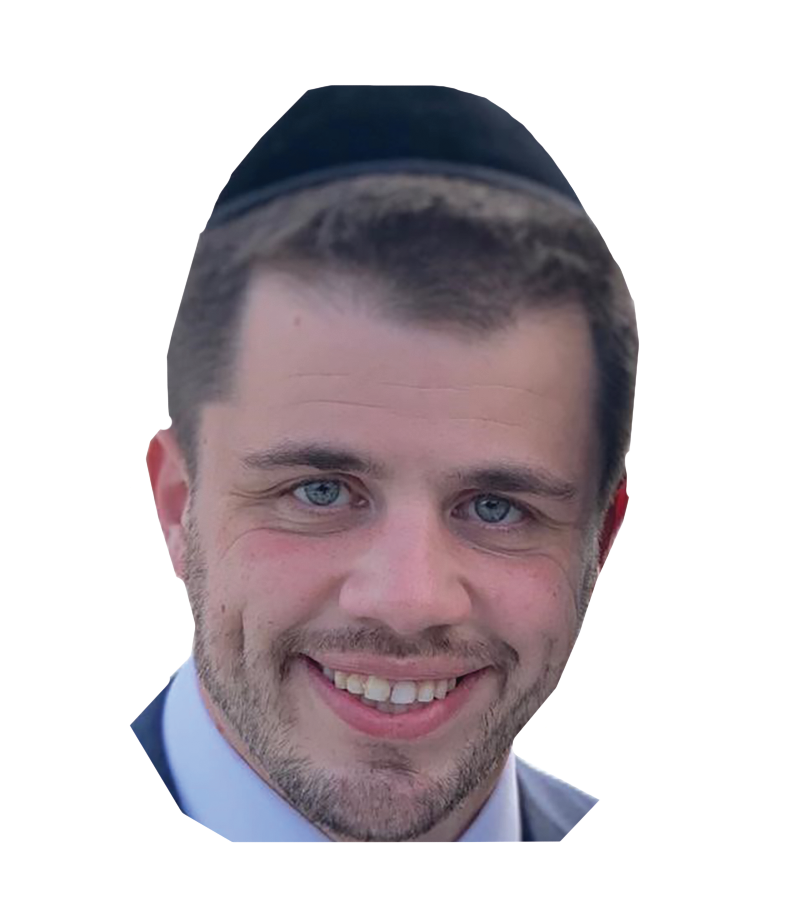
Rav Meir Shapiro dreamed of an institution that would change the definition of what a yeshivah could and should be... A century later, the changes he instituted are alive and thriving
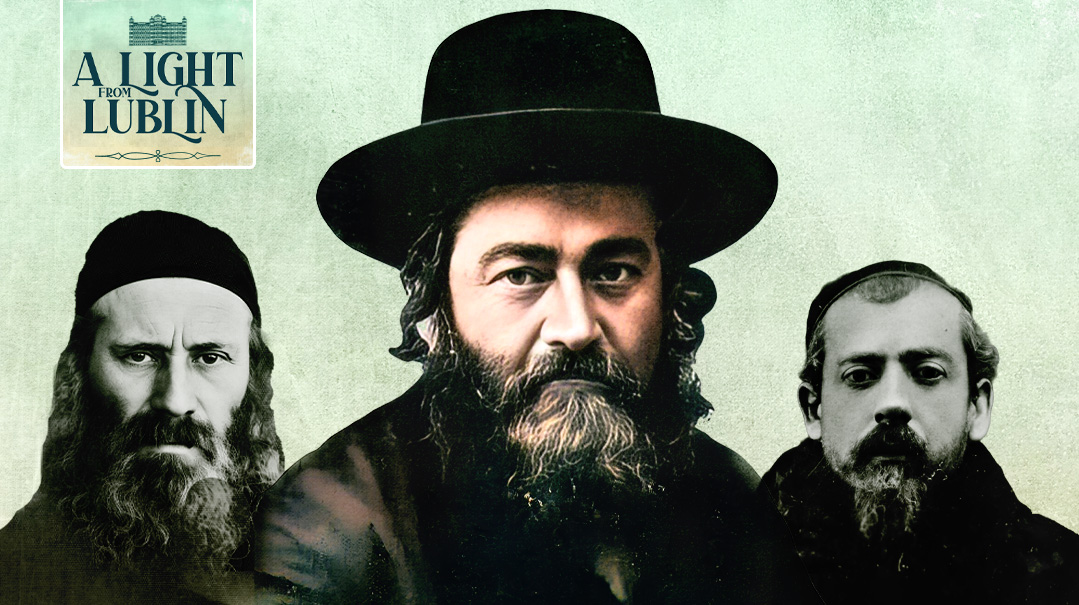
With additional research by Moshe Dembitzer
Photos: Kiddush Hashem Archives, Grodzka Gate - NN Theater (Lublin), Yad Vashem, Ghetto Fighters Museum, Rabbi Avraham Frischman, Rabbi Dovid Kamenetsky, DMS Yeshiva Archives, Rabbi Dovid A. Mandelbaum, Walkin Family Machon Meir L'Doros (A. Rotenberg), Piotr Nazaruk, The Museum at Yeshivat Chachmei Lublin, Prof. Moses Schorr Foundation, US Holocaust Museum, Yoeli Hirsch
Rav Meir Shapiro’s name is synonymous with daf yomi, his innovative program for Gemara learning that has Jews across the globe studying the same folio in unison. But he often remarked that he had two “children” — two epic missions that would serve as his eternal imprint in the world. At first glance, it might seem that only the first child — the daf yomi initiative — remains a dominant force in the Torah world. After all, the other child, Yeshivas Chachmei Lublin, was dismantled and most of its students were slaughtered by the Nazis.
But in many ways, Yeshivas Chachmei Lublin still exerts influence. Rav Meir’s vision did not encompass the building alone. Despite doubts, outright opposition, and funding pressures that drove him to penury, he dreamed of an institution that would change the definition of what a yeshivah could and should be, and that would elevate the status of lomdei Torah. A century later, the changes he instituted are alive and thriving.
LISTEN to a selection of Rav Meir Shapiros compositions HERE
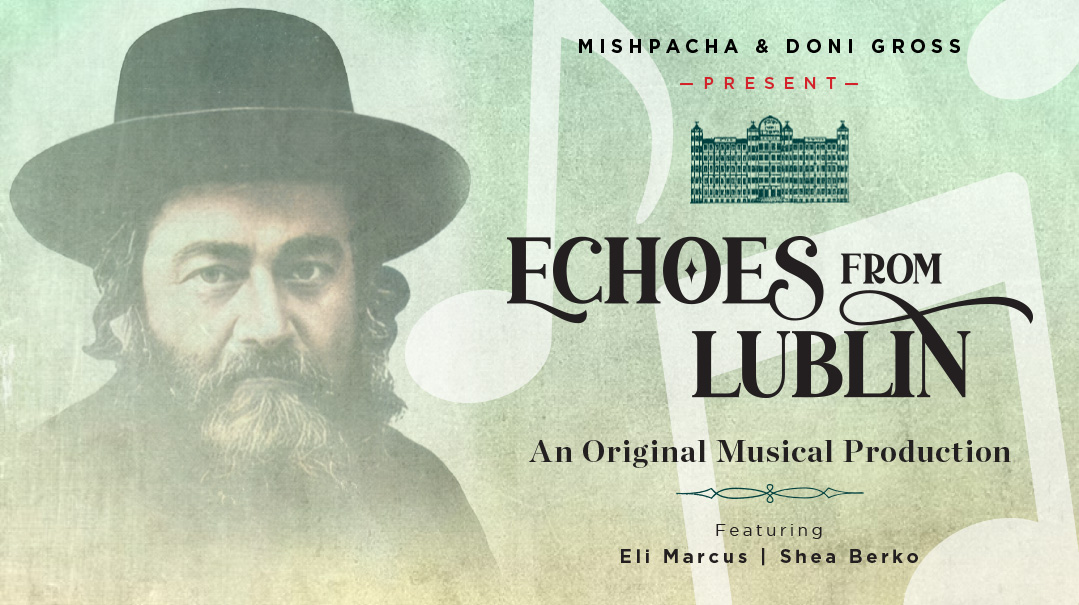
January 1927
IN a small town outside Philadelphia, a crowd of Jews gathered at a reception held in honor of a visiting Polish rabbi. They were eager to hear the charismatic orator talk of his groundbreaking initiative to construct a massive five-story building in the heart of the Second Polish Republic. More than a mere building, it would serve as a “Central Yeshivah,” an elite institution that would transform the landscape of Torah study in Eastern Europe.
The chairman commenced his introductory remarks, describing the many accomplishments and talents of the dynamic young rabbi from Poland: just months shy of his fourtieth birthday, he was already serving in his third rabbinic position while simultaneously nearing the end of a five-year term as a delegate to the Polish Sejm. The chairman proceeded to introduce Rav Meir Shapiro as the headmaster of a school serving “hundreds of young Jewish girls.”
“I had the urge to correct the record,” Rav Meir recounted several years later to the journalist David Flinker (1897–1978), “but my companion, familiar with American manners and etiquette, whispered in my ear: ‘One mustn’t ever contradict a chairman. His words are considered sacrosanct.’ Left with no alternative, I waited in silence for my turn to speak.”
Rav Meir rose to address the crowd. Building on a theme from a recent parshah, he told of Pharaoh’s daughter rescuing a baby from the Nile, a child who ultimately blossomed into the savior of the Jewish nation. “The scholars and students of Poland are drowning in the floodwaters of misfortune and poverty!” he told the crowd. “If American Jewry won’t reach out and save them, who can say how many potential leaders will be swept away?”
Stepping down from the podium, Rav Meir was certain his passionate exhortation had made an impact. Then he overheard an exchange between a member of the audience and his young son.
“Dad, did the Poles really try to drown that fellow?” the youngster asked, gesturing in the direction of the speaker.
“You heard him,” affirmed his father.
“And he survived?” the son persisted.
“Well, here he is,” replied the man.
“He’s a good fellow,” declared the boy. “Give him a few dollars.”
Today it’s hard to imagine such a dubious reception for the brilliant and accomplished visionary who founded both daf yomi and Yeshivas Chachmei Lublin. But back when Rav Meir Shapiro shared his pioneering concept of a yeshivah that provided its students with material stability along with true dignity, he encountered significant and sustained opposition. It took years of fundraising, behind-the-scenes lobbying, and the loss of both his personal savings and health to ensure the stability of Yeshivas Chachmei Lublin. But the glorious institution that resulted from his perseverance became much more than a yeshivah. It set new, higher standards for the welfare of its own — and, ultimately, all — yeshivah students, permanently elevating their status amid the communities entrusted with the responsibility for their care.
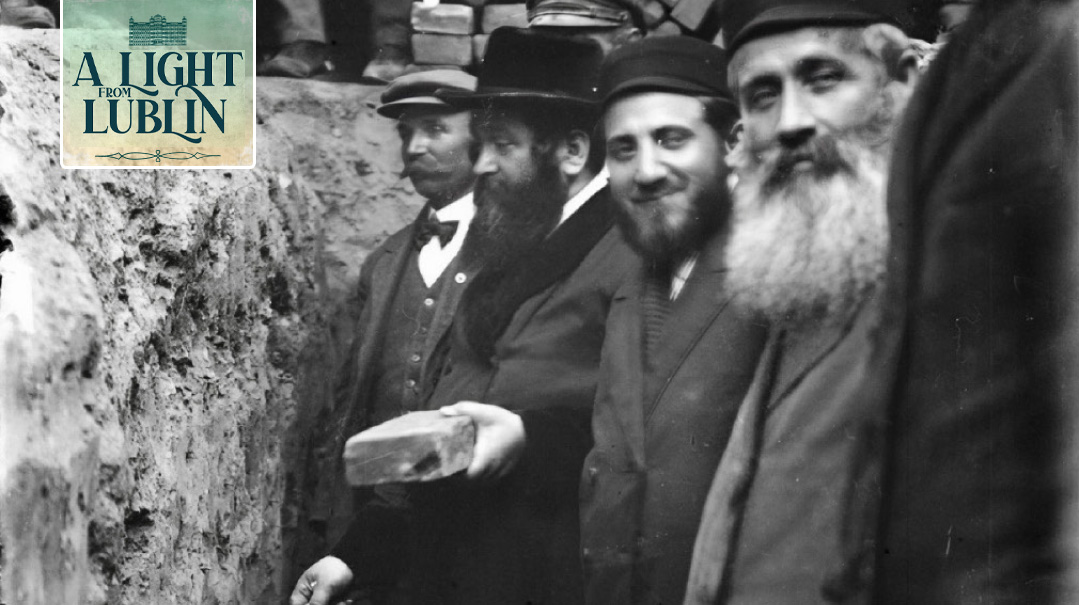
Just a few years earlier, on Lag B’Omer 1924, the old Jewish cemetery of Lublin had pulsated with unusual vitality. A small group of yeshivah students from Piotrkow along with some curious onlookers assembled in the cemetery, their collective gaze fixed upon one magnetic figure.
Amid the ancient gravestones stood the 36-year-old Rav Meir Shapiro, an unusually gifted scholar and rosh yeshivah who had risen to prominence in the preceding years and had recently been appointed rav of Piotrkow. As he faced the gravestones of some of Poland’s greatest Torah scholars, the words he uttered seemed to resonate with the weight of centuries:
“To you great rabbanim, the scholars of Lublin, who spread Torah in this city. You established great yeshivos and nurtured many students… I have come to tell you that I, your servant, Yehuda Meir ben Margala, has decided to restore the crown to its rightful place and I am inviting you to join us in the laying of the cornerstone for this yeshivah, a place where we will raise the honor of Torah until the coming of Mashiach. I am confident that it’s in your merit and in the merit of the Torah that I will succeed in my endeavors for the sake of His great Name and His Torah.”
The cornerstone for the most ambitious yeshivah project of its time was laid later that Lag B’Omer day in front of 50,000 onlookers. The new yeshivah was named Yeshivas Chachmei Lublin, in acknowledgment of the city’s seminal historic role in the blossoming of Torah study in Poland. Lublin had been host to some of the Jewish nation’s most influential disseminators of Torah — including but not limited to Rav Shalom Shachna, the Maharam of Lublin, the Maharshal, as well as chassidic masters such as the Chozeh, Rav Leibele Eiger, and Rav Tzaddok HaKohein — and Rav Meir hoped his new yeshivah would be a fitting addition to the city’s impressive Torah pedigree.
Flanked by rabbinic and chassidic leaders, Rav Meir addressed the groundbreaking ceremony, where he explained that timing the event for Lag B’Omer was hardly coincidental, for Rabi Shimon bar Yochai had been spurred by the same motive. “Chas v’shalom, Torah will never be forgotten,” Rabi Shimon had declared, citing the pasuk, “Ki lo sishakach mipi zaro.”
The continent had recently emerged from the First World War, which had wreaked havoc upon Eastern Europe, uprooting families and entire communities. The region’s yeshivos were victims as well; many had completely disbanded during the war years. When recovery commenced, the rampant hunger, disease, and homelessness took priority over reinstating Jewish education. (At the previous year’s Knessiah Gedolah, Rav Pesach Pruskin (1879–1939) had bemoaned the fact that among Poland’s three million Jews, there were hardly six or seven thousand yeshivah students.) But a select few chose to act on Rav Shimon’s pledge of “Ki lo sishakach mipi zaro,” and invested prodigious efforts to ensure that Eastern Europe’s Torah learning would be restored to its former glory.
Rav Meir Shapiro was one of those select few. What forged his tenacity and vision?
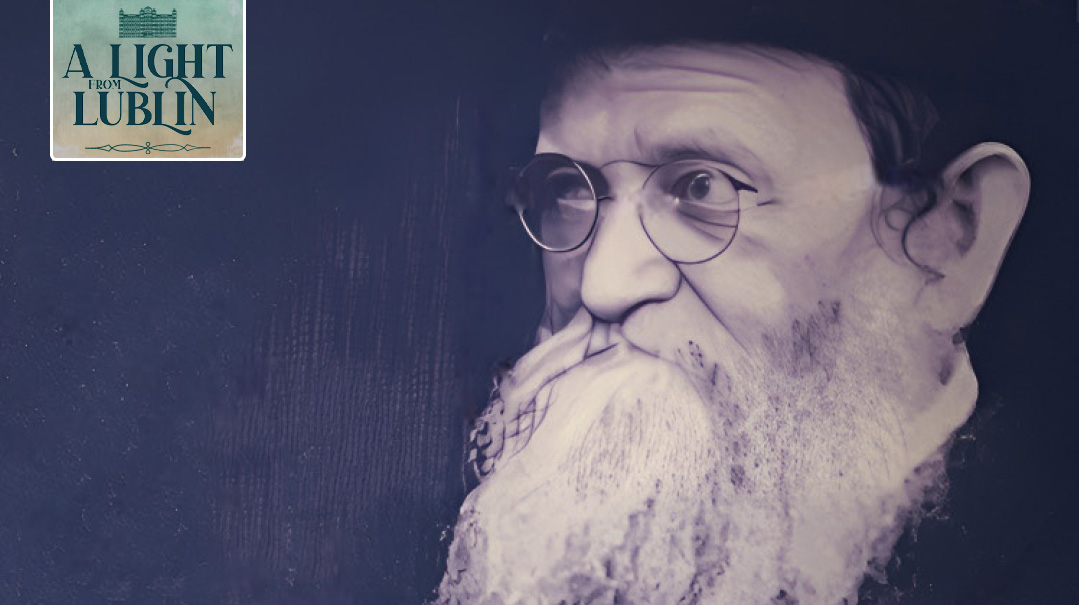
Rav Yaakov Shimshon Shapiro was named after his ancestor, Rav Yaakov Shimshon of Shepetovka, a close student of the Maggid of Mezeritch, and of Rav Pinchas of Koretz
Chapter I: A Class of His Own
Every Precious Day
Rav Yehuda Meir Shapiro was born on March 3, 1887 (7 Adar 5647), in the town of Suceava (Shatz), Romania. His father, Reb Yaakov Shimshon, was a learned chassid and a descendant of Rav Pinchas of Koretz, one of the prime disciples of the Baal Shem Tov. His mother, Margala (Margalit), was the daughter of the gaon of Monistritch, Rav Shmuel Yitzchak Schor, author of the Minchas Shai and a descendant of the author of Tevuas Shor. His ancestry traced back to Rabbeinu Yosef Bechor Shor of Orleans, one of the Baalei Tosafos. Margala Shapiro also carried a maternal connection to the eminent halachic authorities the Bach and Taz.
During his early studies at the local cheder, young Meir faced significant challenges. At the time, these struggles seemed to destine him for a future as a local laborer’s apprentice. He had a form of dyslexia that made the initial steps of reading a formidable task. But he circumvented this challenge with significant exertion and gained an uncanny ability to recognize words in their entirety, sidestepping the conventional method of piecing together individual letters.
An often overlooked factor in Rav Meir’s growth was the unwavering commitment of his mother, Margala, to his Torah learning. When a private melamed they’d hired named Reb Shalom of Sochatchov was late in arriving after Pesach in 1894, Margala’s distress was palpable. “Do you know, my son,” Rav Meir recalled her saying, “that every day that passes without Torah study is an irreplaceable loss. We offered him [what we thought to be] a very handsome salary, but maybe we offered him too small a sum. Torah is so great and priceless; it may have been too small a sacrifice. Who knows?”
(Rav Avrohom Ausband, rosh yeshivah of Telshe Alumni in Riverdale, has theorized that this emphasis on the indispensability of daily Torah study may have been the driving force that later spurred Rav Meir to initiate the daf yomi program.)
This Reb Shalom was the cornerstone of young Meir’s education for six formative years, and his teachings set Meir on a path to greatness. Sadly, Rav Meir Shapiro’s mother passed away during the turbulent years of World War I, never to see her son’s ascent to prominence in the world of Torah. But the memories of her dedication and sacrifices left an indelible mark on him, as this story, shared by one of Rav Meir’s leading students, Rav Yitzchok Dovid Flekser (1917–1999), later one of the roshei yeshivah at Yeshivah Sfas Emes in Yerushalayim, demonstrates:
“Once, when speaking at a large gathering in Poland, Rav Meir suddenly stated with great emotion, ‘Rejoice and be glad, my mother in Gan Eden, be happy, see the stature and respect accorded to your son, who has grown to become one of the gedolei Yisrael!’ The audience was surprised, not knowing why Rav Meir had praised himself in this fashion, but he immediately turned to the women’s section and called out, “And you, women of Israel, worthy mothers, if you want your sons to become great talmidei chachamim and rabbanim, follow the path of my saintly mother, who sacrificed herself in order to dedicate her son to Torah.”
After advancing beyond the local cheder, young Meir was taken under the wing of his maternal grandfather, Rav Shmuel Yitzchak Schor of Monistritch. This would be a foundational phase in his development. Rav Schor nurtured his grandson’s inherent abilities, also introducing him to the multifaceted environment of communal responsibility. In tandem with his meteoric growth in Torah knowledge, the seeds of his legendary leadership skills were sown.
In 1903, his grandfather suddenly fell ill. During his final days, he drew his grandson close and issued final instructions: “Return to your parents in Shatz. The truth is that I believe you really don’t need me anymore. I hope and trust that you will be able to learn and absorb more Torah than I ever could convey to you.” On the 7th of Adar, as “the Illui of Shatz” turned 16, his grandfather passed away, and the budding Torah giant returned to his hometown.
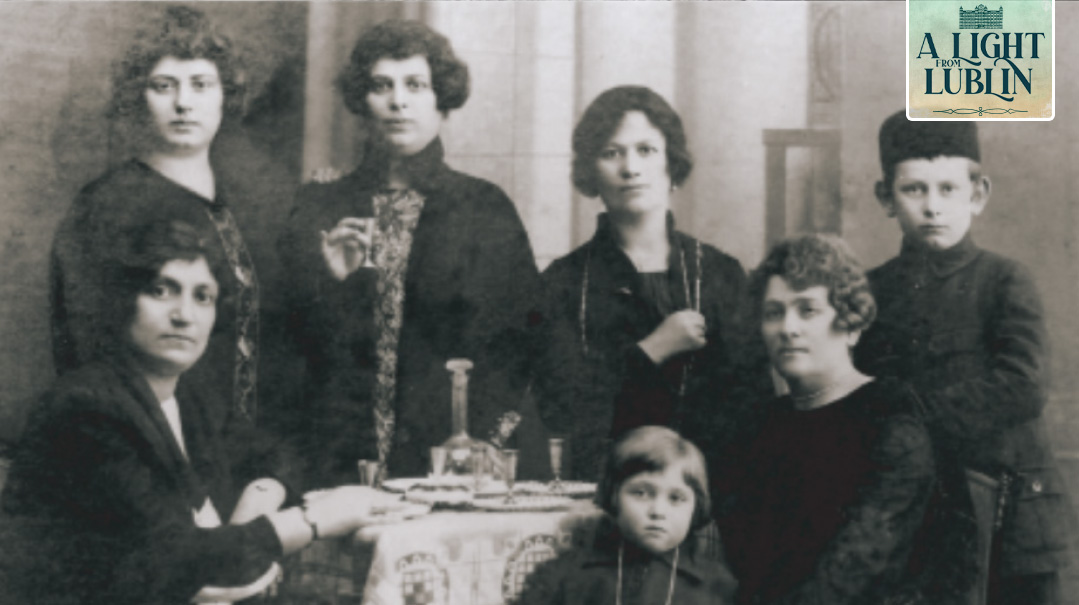
Rebbetzin Malka Toba Shapiro (bottom left) with family members
Saved By the Shatzer
ITwasn’t only local Torah scholars who welcomed the young scholar back to his hometown. Rabbi David Avraham Mandelbaum — who has devoted his life to furthering the legacy of Rav Meir Shapiro and the story of Yeshivas Chachmei Lublin — shared a startling anecdote in his work Igros V’Toldos: Rabbeinu Maharam Shapiro M’Lublin ztz”l.
Upon young Meir’s return to Shatz, enlightened family members attempted to convince him to attend the regional technical school in the Moldavian cultural capital of Jassy (modern-day Iași). Upon hearing of these influences, Rav Shalom Moskowitz, the Shatzer Rav, immediately protested so vociferously that he threatened to lie down in the street and physically obstruct the path of any carriage transporting the town’s prodigy to a secular school.
Rav Meir obeyed the Shatzer Rav and remained under his tutelage. Under the Shatzer’s guidance, he ventured into the esoteric world of Kabbalah, a sphere many deemed too advanced for someone his age. As his understanding and wisdom grew, Meir was empowered to impart knowledge and assisted in laying the foundations of a yeshivah in the quiet town of Shatz, a step that cemented his reputation in the Torah world.
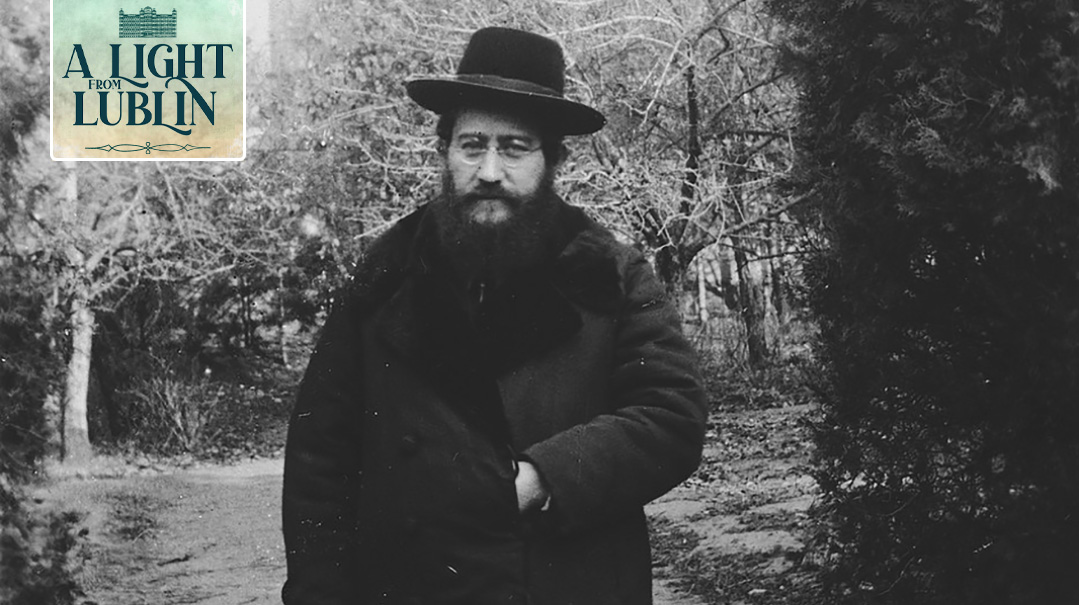
The long list of luminaries who served in the rabbinate in Rav Meir’s hometown of Shatz include Rav Yoel Moskowitz, son-in-law of Rav Meir of Premishlan, his grandson Rav Shalom (the famed Shatzer Rav), Rav Meshulam Roth and Rav Meir’s cousin, Rav Moshe Chaim Lau (pictured here), father of Israel’s former Chief Rabbi Yisrael Meir Lau
One Lag B’omer, when he was a mere 17 years old, Rav Meir amazed Rav Yisrael Hager, the Ahavas Yisrael of Vizhnitz (1860–1936), by delivering an impromptu speech connecting the various statements of Rabi Shimon bar Yochai throughout Shas. Upon meeting him for the first time, Rav Shalom Mordechai Schwadron, the Maharsham (1835–1911), was so impressed that he recited a brachah. Soon enough, an array of renowned Torah scholars ordained him.
Rav Meir’s primary mentor was Rav Yisrael Friedman, the Tchortkover Rebbe (1854–1934). As a Tchortkover chassid (and a lifelong follower of the Rebbe), the Rebbe advised him over the course of his varied roles in communal leadership. Even as Rav Shapiro’s own star ascended, their bond retained its essence: a deep chassid-rebbe connection rooted in mutual respect and reverence for Torah.
In 1907 Rav Meir married Malka Toba, the daughter of Reb Yaakov Dovid Breitman, a prosperous Tarnopol landowner. The young couple shared a mutual vision for Polish Jewry. The financial standing of the Breitman family aided Rav Meir’s ambitions, with Malka Toba staunchly supporting him in each of his endeavors.
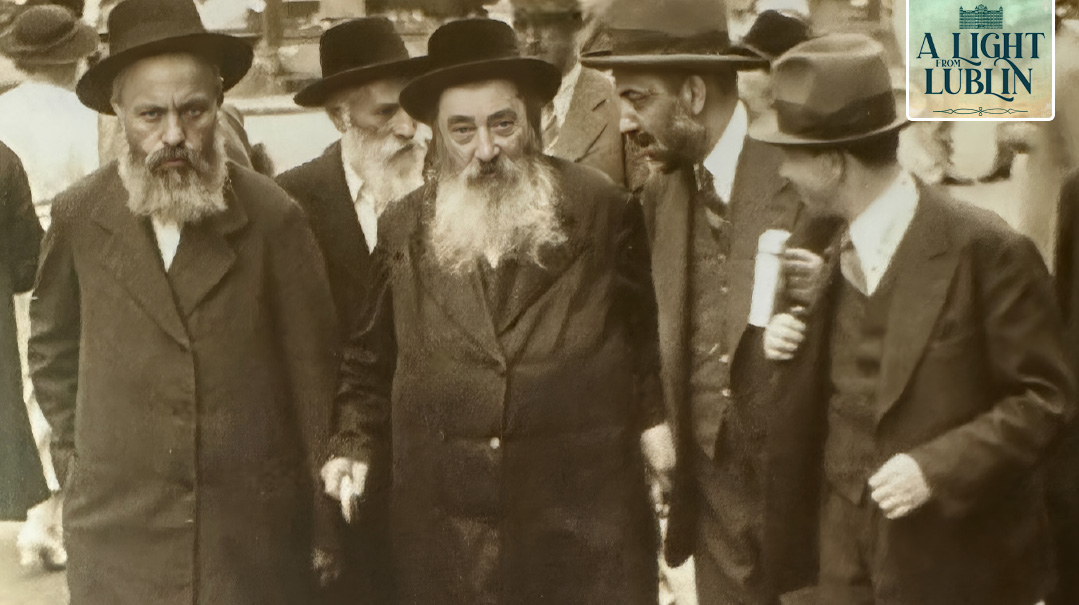
Rav Yisrael Hager, the Ahavas Yisrael of Vizhnitz, was amazed by a 17-year-old Rav Meir Shapiro
Educational Architect
The couple initially settled in Tarnopol, where Rav Meir transformed his father-in-law’s home into a hub of Torah study. In 1910, with the encouragement of the Tchortkover Rebbe, Rav Meir was appointed rav of the Galician town of Galina. Writing in the town’s Yizkor book, a former resident, the journalist Asher Korech (1879–1952), describes Rav Meir’s decade-long rabbinic tenure (which was punctuated by several years in Tarnopol and Lemberg during World War I). For several years Rav Meir refused a salary from the town and referred halachic inquiries to two elder dayanim, Rav Yechezkel Hochberg and Rav Dov Goldberg, enabling them to retain their positions.
Korech writes, “Even when the community council persisted in offering him a salary, Rav Shapiro’s innate magnanimity shone through. He chose to distribute the funds among the impoverished yeshivah students and those ardently dedicated to Torah study. His guiding principle was clear: uphold G-d’s glory and put personal pride aside for the greater good.”
When a member of the community complained that at the age of 23, Rav Meir was perhaps too young for such a position, the young rabbi smiled and responded that every day he would do something about it.
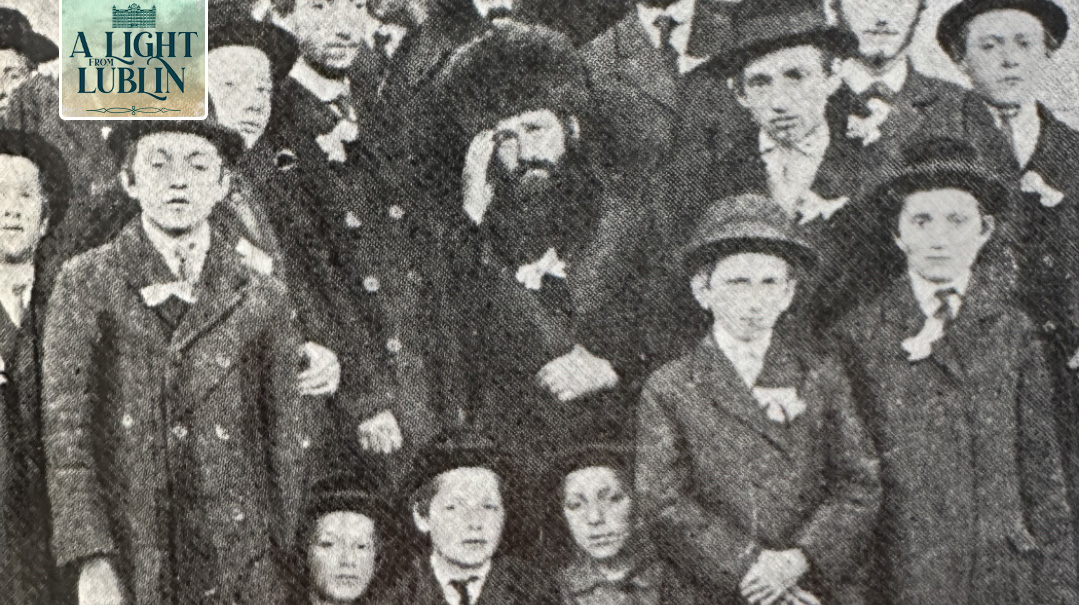
The early years of Yeshiva Bnei Torah in Galina. Rav Meir is seen at center
Korech notes the crowning achievement of Rav Meir in Galina was the establishment of Yeshivah Bnei Torah, which changed the town’s spiritual trajectory:
The landscape of Torah study within our city underwent a seismic shift with the arrival of the esteemed Rav Meir Shapiro. His arrival couldn’t have been timelier, as the town had undergone a palpable decline in Torah dedication among its youth."
A majority had transitioned from traditional Torah study halls to the school established by Baron Hirsch. Consequently, these chambers of Torah wisdom, once bustling with spirited debates and fervent study, now echoed with an eerie silence… The community, although deeply distressed by this evolution, felt powerless to reverse the trend.
However, Rav Shapiro perceived this shift not merely as a challenge but with true, heartfelt sorrow. Possessing an unwavering passion for Torah and an indomitable spirit, he sought to rekindle the city’s once-vibrant Torah spirit. As a testament to his dedication, he instituted the “Bnei Torah society.” With an eye toward the future, he repurposed a centrally-located edifice, tailoring it to serve as a Torah institution, replete with sections spacious enough to accommodate a burgeoning student body.
For the youth, he ensured that the finest educators were appointed, implementing a curriculum he envisioned. Initially, he personally supervised the classes, ensuring the highest standards. Later, this mantle of responsibility was passed on to his advanced yeshivah students, who continued his legacy of vigilance, guaranteeing that educators remained devoted and true to their sacred task.
Under his aegis, the institution thrived, marked by exemplary discipline and fairness. Salaries for educators were punctual, freeing struggling parents from any financial concerns. Students were periodically assessed, with report cards detailing their progress, a testament to the structured approach he championed. Economic standing was never a criterion; both affluent and underprivileged were judged solely by their commitment and prowess in Torah, with the latter group being exempt from tuition fees.
Rav Meir realized early on that the quality of the educational institution depended on the quality of the teachers. When speaking of the importance of having excellent, well-paid teachers of Torah he said, “Look at the difference. When a community hires a shochet, they examine him closely to see if he knows all the laws of shechitah and he is a God-fearing man. And what do they entrust to his hands? An animal! And yet, when they must hire a melamed, to whom they entrust the chinuch of the children, they’re not quite so particular!”
In his early twenties, Rav Meir authored his first sefer, a Torah commentary called Imrei Daas, which linked Talmudic passages to the weekly sedra. Tragically, the manuscript was destroyed during the Russian shelling of Tarnopol during World War I. One page of the sefer, which was salvaged from the blaze, was ultimately buried with him. Also surviving were the haskamos written by some of the greatest gedolim of the time, including the great Galician gaon Rav Meir Arik (1855–1925), the Maharsham, and the aforementioned Vizhnitzer Rebbe, who refers to Rav Meir as “a new vessel containing old wine” who was “learned in all areas of Torah study,” and “a reason to rejoice for there were now new gedolim emerging to take the place of the previous generation.”
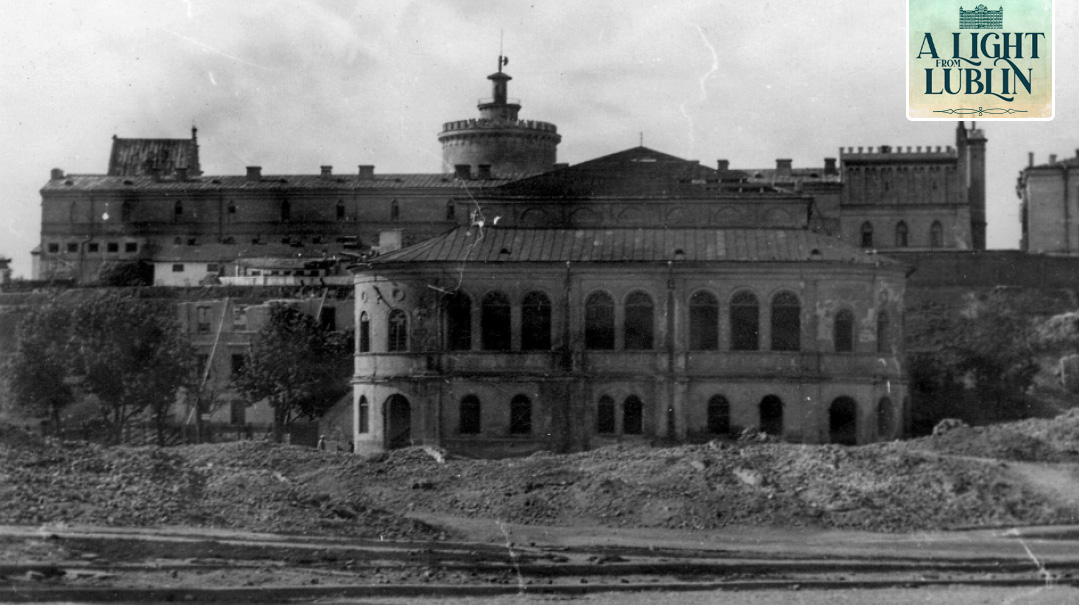
The Maharshal’s shul in Lublin (1567-1942)
From Lublin Shall Go Forth Torah
IN
choosing the name and venue of his yeshivah, Rav Meir Shapiro was acknowledging Lublin’s prime location on Poland’s Torah map. For centuries, it served as a city of great scholarship and as home to some of history’s preeminent talmidei chachamim.
Poland’s first great yeshivah was founded in Lublin in 1518 by Rav Shalom Shachna (1495–1558), a student of Rav Yaakov Pollack (1465–1541), considered the pioneer of the pilpul methodology of Talmudic study, and one of the early rabbinical leaders in the old Polish kingdom as German Jews migrated east to Poland during the 15th century. Another student of Rav Yaakov Pollack was Rav Meir Katzenellenbogen (Maharam Padua), who emerged as a leader of Italian Jewry.
Rav Shalom Shachna’s students included his future son-in-law, Rav Moshe Isserles (1530–1572), more commonly known as the Rema; Rav Chaim ben Betzalel (1520–1588), elder brother of the Maharal; and Rav Shlomo Luria (1510–1573), the Maharshal. The Maharshal, whose classic works include Yam Shel Shlomo and Chochmas Shlomo, established a yeshivah in Brisk before assuming the rabbinate in Lublin, a role that also included the stewardship of the local yeshivah.
The Lublin yeshivah was the most prominent one in the entire Polish Kingdom, and there the Maharshal nurtured the next generation of Torah scholars, including Rav Shlomo Ephraim Lunshitz (1550–1619), author of the Kli Yakar and rav in Prague; Rav Yehoshua Falk Katz (1555–1614), author of the Derisha/Perisha and Semah; and Rav Mordechai Yaffe (1530– 1612), author of the Levush.
Later Lublin was home to Rav Meir ben Gedalia (1558–1616), the Maharam of Lublin, whose list of students included the Shelah Hakadosh, Rav Yeshaya Horowitz (1558–1630); and Rav Yehoshua Heschel Charif (1580–1648), author of Meginei Shlomo. In the 17th century, Rav Meir Shapiro’s ancestor, the “Rebbe Rav Heshel,” served as rav of Lublin and teacher of Rav Dovid Segal (the Taz) and Rav Shabsai HaKohein (the Shach).
The golden age of Torah in Lublin ended with the Chmielnicki massacres of 1648–1649, known as gezeiros Tach v’Tat for the Hebrew years when the bulk of the destruction occurred. More than a century later, the chassidic movement arrived in Lublin.
The chassidish character of the city was significant to Rav Meir Shapiro, who wished to fuse chassidic values with Torah supremacy. At the turn of the 19th century, one of the most influential tzaddikim in the history of Polish chassidus, Rav Yaakov Yitzchak Horowitz (1745– 1815), the Chozeh of Lublin, established his court in the city. Some 50 years later, Lublin was graced with the founders of the Lublin chassidic dynasty as an offshoot of Ishbitz. Its leaders, Rav Leibel Eiger (1815–1888) and Rav Tzadok HaKohein (1823–1900), originated from non-chassidic backgrounds. The Eiger family continued to lead the city’s chassidic community until its destruction in the Holocaust, with Rav Shlomo Eiger serving for a time in a capacity in Yeshivas Chachmei Lublin.
From 1580–1764, Lublin was the seat of the “Vaad Arba Ha’aratzos” (Council of the Four Lands), the semi-autonomous political-administrative body for the Jews of the Polish-Lithuanian Commonwealth, and was the site of the first Hebrew printing press in the region during the 16th century. This led to an interesting phenomenon where many yeshivos in the Lublin district studied the same masechta, in order to assist the local publisher in completing the first set of Shas printed in Poland. This practice also proved to be a unifying force among the local yeshivos. Perhaps this tradition further entrenched the concept of daf yomi in Rav Meir’s mind.
In channeling the rich history of Torah learning in Lublin, Rav Meir Shapiro believed that he was not merely building a new yeshivah, but rather reviving the city’s rich heritage. The name Yeshivas Chachmei Lublin was full of meaning, and the revival of the historic period of Torah greatness in Poland, at a time when Torah study and observance were on the decline, was the mission of Yeshivas Chachmei Lublin.

The Rebbe from London
Rav Shalom Moskowitz was born on 17 Kislev 1878 in Vyrbranivka, near Lvov. One of 17 children, his illustrious lineage is traced to Rav Yechiel Michel of Zlotchov, the Zlotchover Maggid (1731–1786), while his grandfather Rav Yoel was the son-in-law of Rav Meir of Premishlan. The family were devoted Belzer chassidim and he was named for the first Belzer Rebbe, the Sar Shalom (1781–1855).
His early Torah education was under the tutelage of Rav Eliyahu Shmuel Schmerling of Babruysk and Rav Shalom Mordechai Schwadron of Brezan (the Maharsham), who deeply influenced Rav Shalom with his clear and decisive halachic rulings. His exposure to the teachings of Kabbalah came through his uncle Rav Leibish Halperin.
Physically Rav Shalom was an imposing figure, tall and regal. His radiant countenance, accentuated by a flowing white beard, commanded respect. His 16-year tenure as rabbi of Shatz ended following a disagreement with community leaders over a local shochet. Refusing to compromise on halachic principles, he left the town, without any idea how and where he would earn a living. Marrying his cousin Shlomtze in 1897, their life journey took them through various European cities, including Tarnow, Cologne, and eventually London, where he resided for the last three decades of his life.
His commitment to Torah study was unparalleled, and he often dedicated 18 exhaustive hours daily to his davening and learning. In the years preceding his passing, despite having suffered the loss of his beloved wife and five adult children, he remained steadfast in his rigorous study routine. With only his daughter Miriam Chaya at his side, he poignantly remarked, “Were it not for the Torah that is my delight, I would have perished in my anguish” (Tehillim 92). A testament to his erudition came from the Chazon Ish, who once remarked, “Der Rebbe fun London kenn lerenen — the London Rav is a scholar.”
Rav Shalom’s quest to master both the hidden and revealed Torah was vast and unique. When he passed away in London in 1958, he was deeply engrossed in the writing of Daas Shalom, a commentary on Chumash arranged according to the order of Perek Shirah. To ensure accuracy and gain a profound understanding of the subject matter, he studied zoology and made regular visits to the London Zoo. He was also interested in astronomy and botany and frequently visited Munich’s Sternwarte Planetarium while residing in Germany. On one occasion he drew the attention of the curator to two errors in the description of the exhibits.
The Shatzer Rav’s legacy remains an inspiration and continues to this day with frequent visits to his gravesite in London. At the Enfield Adath Yisrael cemetery, his ethical will is emblazoned across the wall of the ohel:
It’s well known that I have always tried to help people to repent of their evil ways, and thanks to Hashem I have succeeded many times. Therefore, whoever is in need of any kind of yeshuah (salvation) or refuah (recovery from illness) for himself or for someone else, should come visit my kever, preferably on a Friday before noon, and light a candle for my neshamah and make his request. Let him state his name and his mother’s name. Then I shall certainly intercede with my saintly forefathers that they should awaken G-d’s mercy for a yeshuah or refuah.
But there is a definite condition attached: the person concerned must promise to improve his standard of Yiddishkeit. For example, he whose business is open on Sabbath must promise to keep it closed. He who shaved his beard with a razor blade should now remove it in a way that is permissible. A woman who does not cover her hair must promise from now on to wear a sheitel (wig). All this must be clearly known to those who come to my tomb. They must keep their promise and should not try to deceive me, G-d forbid, for I shall be very angry. Unfortunately, there is already too much deceit in this world.
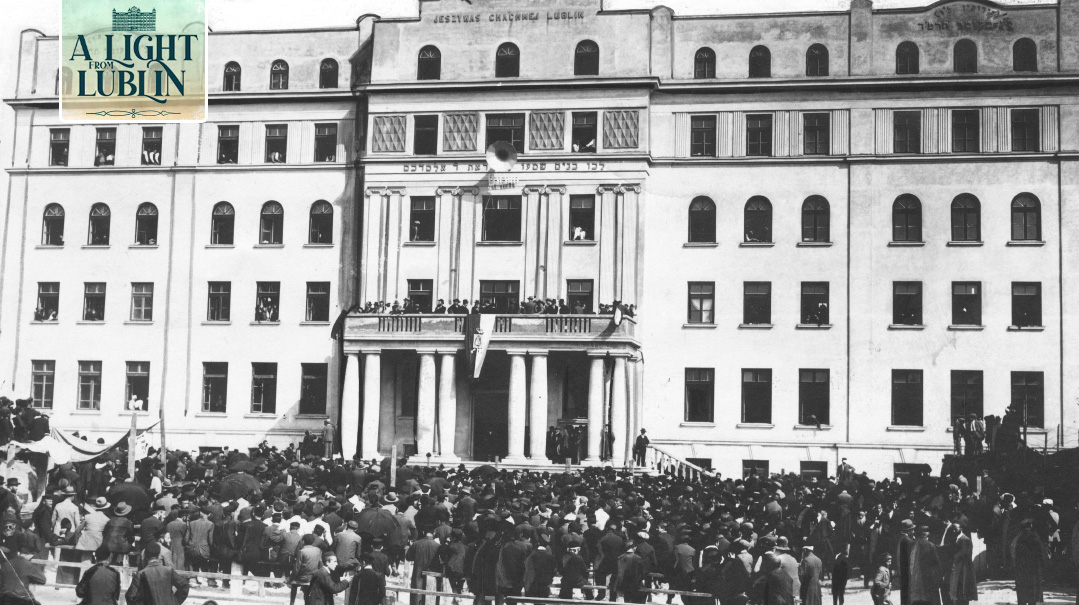
Chapter II: A Vision for Poland’s Yeshivos
A Yeshivah for Every Court
IN 1921 Rav Meir Shapiro was appointed rav of Sanok. His acceptance included the stipulation that he bring the Galina yeshivah along with him, and in its new location the yeshivah grow in both quality and quantity. With nearly 300 students, Yeshivah Bnei Torah was one of the largest in Poland.
Yet despite the success of his own yeshivah, Rav Meir noticed that Poland’s Torah landscape was sadly bare of similar institutions. Despite its storied past as a bastion of Torah study and chassidic life, the country for the most part lacked the structured, institutionalized yeshivos that had developed in Lithuania during the 19th century.
This distinction was stated explicitly in an oft-cited responsum of one of the fathers of Galician chassidus, Rav Chaim Halberstam (1797-1876), the Divrei Chaim of Sanz. In 1862 he wrote, “Yeshivos are not found in our land [Galicia] for a number of good reasons… rather [young men] sit in groups in the beis medrash and they study Torah, Talmud, and Tosafos.”
Unlike traditional yeshivos, Polish Torah centers revolved around charismatic personalities, usually a town rabbi or chassidic rebbe. The yeshivah of Sochatchov, for example, drew its spirit from the revered Rav Avrohom Borenstein (1838–1910), the Avnei Nezer. In a similar vein, the 20th-century yeshivah in Sokolov was steered by the Avnei Nezer’s great-nephew, Rav Yitzchak Zelig Morgenstern (1866–1939), the Sokolover Rebbe.
This pattern persisted in greater Galicia as well. Bobov’s yeshivah network, Etz Chaim, was under the guidance of its rebbe, Rav Ben Tzion Halberstam (1874–1941), the Kedushas Tzion. Tarnopol’s yeshivah was led by Rav Menachem Manish Babad (1865–1937), the author of the Chavatzeles Hasharon, while Rav Aryeh Tzvi Fromer (1884–1943) established Kozhiglov’s yeshivah. The character of these institutions hinged on the educational qualities of the individuals who led them, not on a collective institutional approach or organized curriculum.
Moreover, these leader’s positions as roshei yeshivah were secondary to their primary function as chassidic leader or communal rabbi. Even in the yeshivah in Sochatchov, where the Avnei Nezer primed the next generation of Polish geonim (The Kli Chemda, Chelkas Yoav, Eretz Tzvi, and Nefesh Chaya were just some of the classic seforim authored by his students), no sleeping quarters were provided, nor were there any meal arrangements or financial support.
In his monograph on Polish yeshivos, Hillel Seidman (1907-1995) points to an additional challenge. Chassidim were generally quite particular regarding their children’s education and went to great lengths to ensure that their children weren’t exposed to foreign influences. “Foreign” in this context wasn’t limited to blatant digressions from the traditional path but included any deviation from the specific customs and values associated with the particular chassidic dynasty of the family. Despite the intense Torah study that existed in the kloisz in Belz, one would be hard pressed to find a Gerrer chassid studying there and vice versa.
Most chassidic yeshivos in Poland were identified with a specific dynasty. Eitz Chaim was affiliated with Bobov, Bais Yisrael was founded by Rabbi Yitchok Menachem Danziger (1880-1942) of Aleksander (which, after Ger, was the second largest chassidic dynasty in Poland), Sochatchov and various other courts of Polish chassidus each had their own institutions.
One exception was the vast network of Keser Torah yeshivos established and funded by the Rebbe of Radomsk, Rav Shlomo Henoch Rabinowitz (1882–1942), in interwar Poland. At its peak it counted 36 yeshivos with over 3,000 students. These yeshivos were less “partisan” and attracted chassidim of all stripes. But outside the Keser Torah network, yeshivos were limited to individual chassidic streams.
Rav Meir Shapiro was determined to recalibrate this scenario. While deeply respecting the existing structure, he envisioned a yeshivah system in Poland mirroring the administrative and academic rigor of Lithuanian yeshivos, where elite students could shine in an environment uniquely tailored to their abilities, and where tribal differences were laid aside at the entrance to the beis medrash. It would be a place where a talented chassidish bochur could be accepted and valued primarily for his Torah knowledge, not for his particular chassidish affiliation — and where he would find elite students with whom to climb spiritual heights.
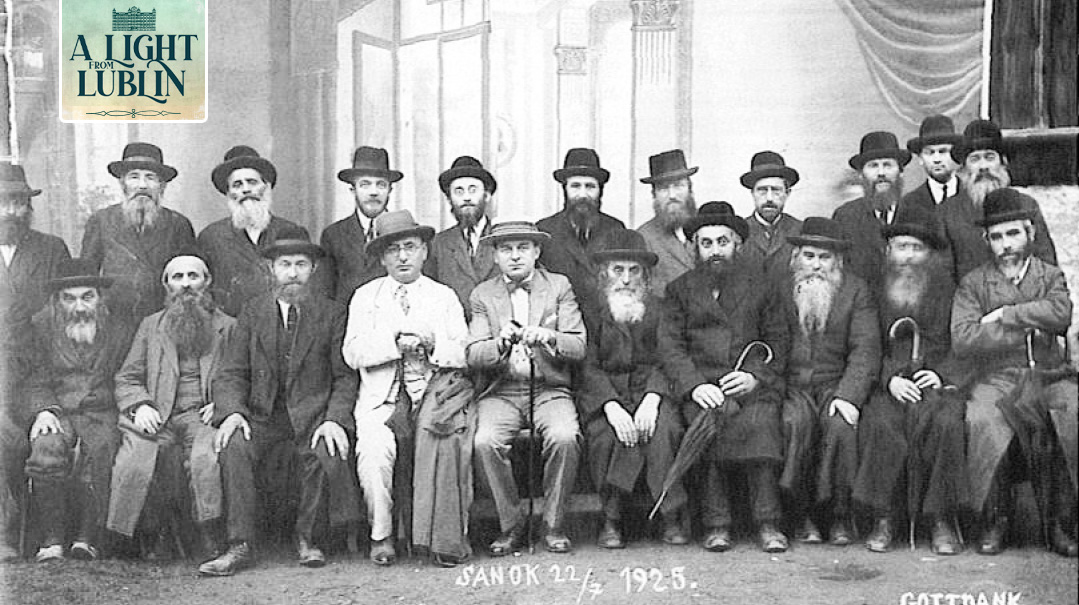
Boro Park real estate developer and philanthropist Max Jonas (center) is pictured along with local rabbanim and dignitaries on a 1925 visit to his hometown of Sanok, where he dedicated a new cheder and medical center. He would later assist Rav Meir on his fundraising trip to America, and joined the international board of directors of the yeshivah. Tragically, he died just weeks apart from Rav Meir at the age of 41
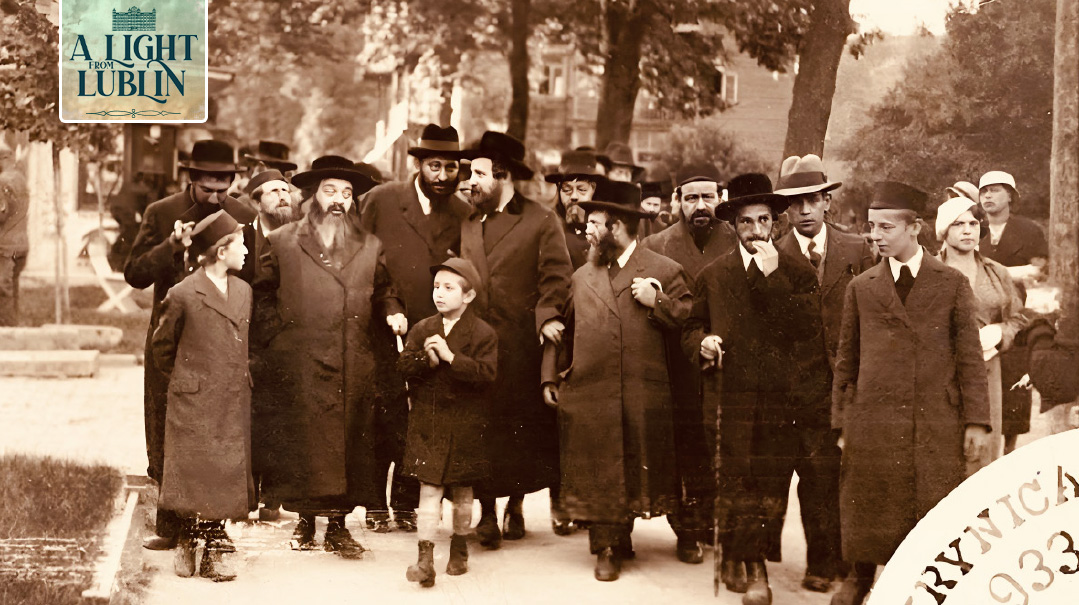
Rav Shlomo Henoch Rabinowitz of Radomsk (far left) alongside his devoted chassid Reb Naftali Besser and the rebbe’s son-in-law, the great gaon Rav Dovid Moshe Rabinowitz, who served as rosh yeshivah of the Keser Torah yeshivah network
Bread & Salt
Poverty was another factor Polish yeshivos had to contend with, and Rav Meir aimed to confront this challenge as well. Yeshivah students were particularly affected by the poor economic conditions. Rav Meir saw their degraded status as an impediment to their learning and an insult to their standing as honorable members of society.
The memoirs of Alphonse (Avraham) Honig (“La Métamorphose du Juif errant,” published in 1978 by La pensée Universelle) provide a firsthand account of a student in Sanok, who yearns to study in Rav Meir’s yeshivah, but can’t tolerate the austere lifestyle:
Despite all my various difficulties, despite my loneliness and homesickness, which I have described in the preceding pages, I nevertheless have the opportunity of being a student of Rabbi Shapiro. Attending his morning classes is a privilege to which all young Talmudists aspire. The atmosphere there is extraordinary, and every day we discover something new. When I get up in the morning and think of the classes I am about to attend, I feel pious joy. I quickly get dressed and say my prayers so as to arrive early and watch Rabbi Shapiro enter the classroom. He energetically crosses the room, ascends to his podium, and, before beginning the class, casts a penetrating glance over his audience.
A thrill of excitement goes through my entire body whenever I feel that his eyes are resting on me. There is such silence that one can hear a fly. The whole room transforms itself into eyes and ears and prepares to listen. His words, like a prophecy, seem to come from afar. All the students sit hypnotized during the three-hour class. His method of teaching is both novel and original. For the subject of his class he has chosen the tractates Berachos and Mikvaos. These two tractates are not taught in any other yeshivah — and rare are the Talmudists who have studied them.
I would like to see the look on the faces of the Talmudists from home when they hear about this, because for them the study of Aggadah is a waste of time. But Rabbi Shapiro, thanks to his great knowledge and intellectual powers, succeeds in giving them new meaning, and interpreting them in a way that fascinates his students. His interpretation is fiercely debated among the students, and each gives his personal version, as is the practice in other yeshivos, with regard to the legal tracts. Rabbi Shapiro is not only a gaon, respected for his Talmudic knowledge, but the students have great affection for him. He, too, loves them like a father. He calls them by name, despite their great number. He knows the material difficulties and emotional difficulties of each student.
The memoirist describes the shame associated with the Teg system, under which each night the students were hosted by local families on a rotation basis. They often felt unwelcome, especially since many families were poor and hardly able to provide for their own children. Other times the opposite held true:
Obviously, it is quite humiliating to go to a different benefactor each day. For those boys with a sense of self-esteem, and I think I am one of them, it is unbearable. I prefer to tighten my belt and make do with the little money I get, rather than eat my fill at the home of some portly citizen where I would have to listen to his platitudes and endure the arrogant and mocking looks of his children.
Avraham Honig saw the pain Rav Meir suffered from having his students take part in this system, and his efforts to provide them with some pocket money so they could alleviate their hunger.
It was worth the suffering to acquire the knowledge of the Torah, as it is written in the mishnah: “A little bread with salt… and sleeping on the ground, is the path to the Torah.”
But Rav Meir Shapiro himself found this saying to be wrong when it comes to young men who are devoting their lives to the Torah, and added a question mark, which changes the meaning of this sentence completely: “Is eating bread and salt and sleeping on the floor really the way of the Torah?”
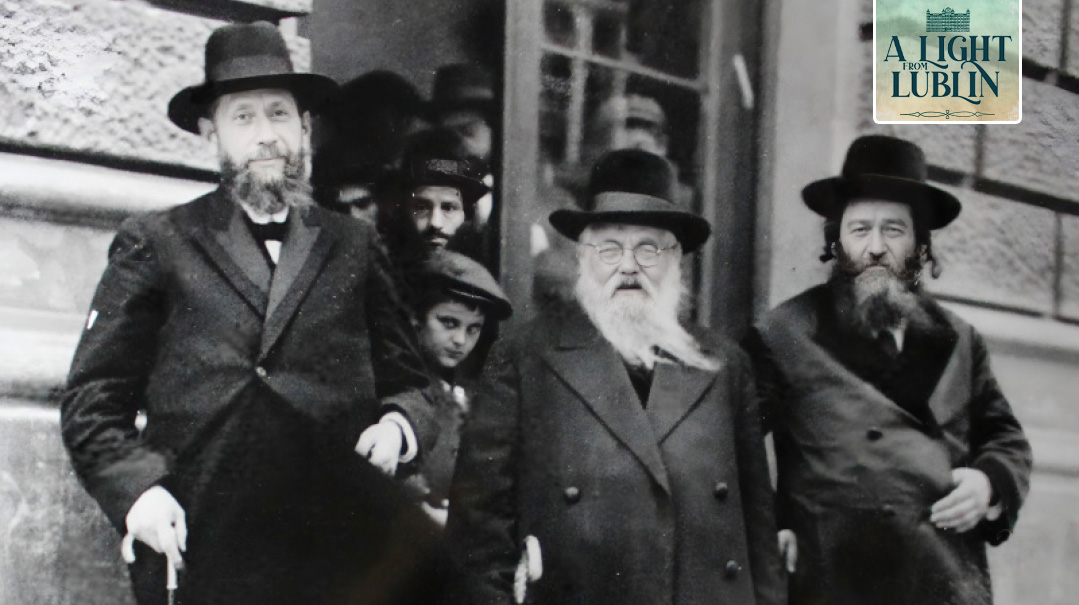
Rav Meir exiting a meeting in Vienna along with two leaders of Agudas Yisroel, Rav Aharon Walkin of Pinsk and Rabbi Dr. Samuel Spitzer, Chief Rabbi of Hamburg
In the Town Square
IN 1922 Rav Meir was implored by Agudas Yisrael to represent the party in the upcoming elections to the second Polish Sejm (parliament). The first Sejm in the Second Polish Republic (1919–1922) included two representatives of Agudas Yisrael (Rabbis Moshe Eliyahu Halpern (1872-1921) and Avraham Tzvi Perlmutter (1843-1930)). Before the next election, a more experienced Agudas Yisroel was better organized and sought candidates who would draw both more respect and more voters.
On the surface, a rosh yeshivah such as Rav Meir was not the most ideal candidate — but Avraham Honig’s memoirs explain why Agudas Yisroel wished for him to serve as their candidate:
A custom existed in Poland that when the Prefect (regional governor) visited his constituents in one of the towns in his region, upon entering the town he is received by representatives of all the communities. Each delegation in turn approaches the carriage of the Prefect to pay their respects and their grievances. The Jewish delegation is usually led by the town rabbi carrying the Torah.
Rabbi Shapiro, of Romanian origin, having lived in Poland for a short time, did not know a word of Polish. [He later gained a rudimentary fluency of the language.] The representatives of the Jewish community were very embarrassed about the speech that Rabbi Shapiro had to make in honor of the governor. He, on the other hand, did not seem worried at all.
That day he gave his class as usual, in no hurry. After it was over, he had one of the students who was a graduate of the University of Krakow translate his speech [from Yiddish into Polish]. A few moments later, he left to head the delegation to receive the governor.
To the great satisfaction of the Jewish notables and to our great astonishment, he delivered his speech without the aid of the notes prepared by the student.
Initially, Rav Meir turned down the Agudah’s request to serve in a political capacity, knowing well that he’d have to leave his beloved yeshivah in order to be present in Warsaw during government sessions. But the Rebbes of Ger and Tchortkov believed his candidacy was essential. In his unpublished memoirs (later translated into English by Charles Wengrov and published by Feldheim as A Blaze in the Darkening Gloom), his student Rabbi Yehoshua Baumol cites a mishnah in Taanis (2:1) to explain his logic. “In a time of peril, a sefer Torah is taken out to the town square.” This “living sefer Torah” was thus compelled to exit the confines of the beis medrash for the public square, where his talents could be utilized to further the needs of the Polish Orthodox community.
Ultimately, Agudas Yisrael persevered in the election, garnering six seats in the Sejm, mainly due to the bump it received from joining a voting bloc that consisted of Jewish and minority parties. The Agudah deputies now included (in formation) Reb Eliyahu Kirschbraun, Rav Aharon Lewin, Reb Leibel Mintzberg, Reb Feivel Stempel, Reb Leizer Syrkis, and Rav Meir Shapiro.
Dr. Simcha Bunim Feldman (1874–1954), an attorney turned educator, served as a deputy in the Sejm representing Mizrachi at the same time Rav Meir Shapiro was representing Agudas Yisrael. The Yizkor book for the city of Biala describes Feldman as a righteous individual who was respected by all — even the chassidim — for his religious devotion.
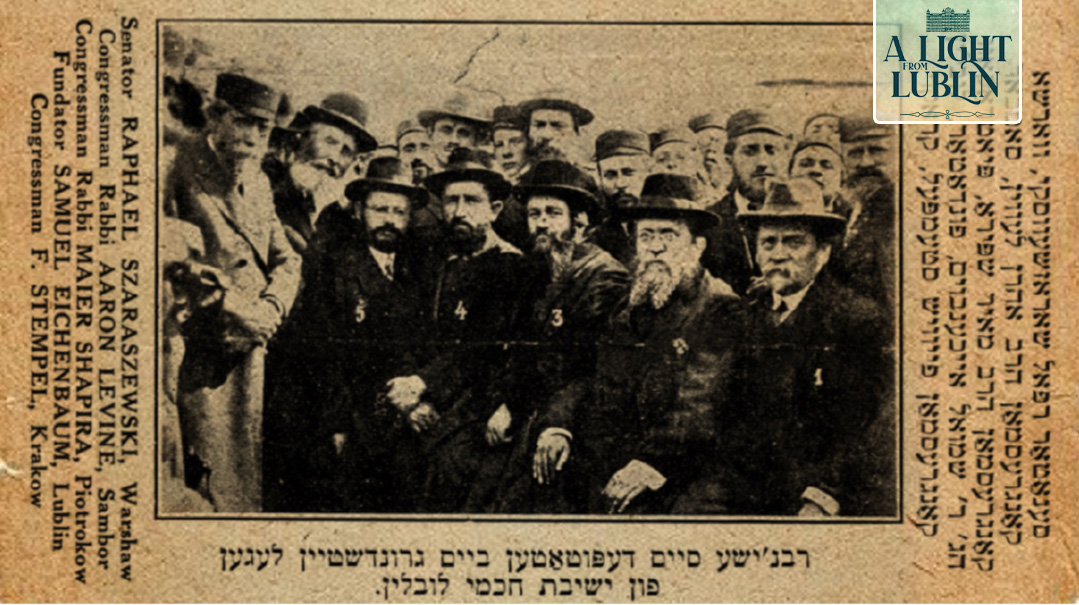
In 1938 he penned his memories of Rav Meir in the Mizrachi newspaper HaTzofeh:
His sense of responsibility was very strong. I will never forget his enthusiasm and energy, when he took part in a stormy opposition that the Jewish Caucus organized during a session of the Sejm, as a protest against proposed legislation, which was completely directed at the Jews and their economic position. He pounded on the bench with us for a full hour, and cooperated with us in an action whose intent was to protest the discrimination against Jewish citizens in the legislative field. In the period of the second Sejm, which lasted five years, I was lucky enough to greatly benefit from the light of his Torah and wisdom, from the many conversations we held on the benches of the Sejm as well as other occasions.
One Shabbos (parshas Vayishlach, 1922) when the Sejm and Senate came together for the legally required “National Assembly” to vote for President, we all arrived early at the Sejm building. The voting took all day. There were seven candidates. This caused the votes to be so divided that no single candidate received a definitive majority, requiring the voting process to be repeated five times, and following each cycle, the candidate with the least number of votes was taken off of the candidate list. So we were forced to remain in the Sejm building, which is far from the Jewish neighborhood, until the evening. When it came time for Minchah, we davened together in the Caucus’s room, and then the issue of Seudah Shlishis arose. One of the members obtained some rolls for us, and we ate Shalosh Seudos while the Sejm was tallying the votes after a new round of voting.
After we finished the meal, I suggested to Rav Meir Shapiro that he share some divrei Torah, specifically of halachic nature. He started saying a nice chiluk in Maseches Yoma, and we were enchanted by his style of lecture and enlightening explanation. It seemed that the walls of the Sejm never heard such a pshetl. To our dismay, he was unable to conclude his sharp pilpul. Suddenly the hallway bells started ringing a long ring, calling us to the Sejm hall for a new round of voting. The pshetl was stopped in the middle, and we were successful in the final round. From this round, Gabriel Narutowicz came out as the President of the Polish Republic. As we exited to the street after this victory, masses of Poles were ready for us with curses, “blessing” us for our “Jewish President” (he was referred to as such because he was elected with the assistance of the Jewish parties). The second Shabbos, President Narutowicz was murdered by the artist and writer Niewiadomski. I didn’t hear the end of the chiluk on Maseches Yoma as we had many other chilukim afterward that occupied our thoughts….
Once, we traveled together from Warsaw to Lvov. We were together in the first-class cabin, due to the privilege that was given to us as delegates to the Sejm. We departed at night, and we discussed various matters until the late hours after midnight. Primarily he shared with me divrei Torah. On that night he revealed to me his plans for daf yomi, which he intended to present to his colleagues in the Agudah. The delegate to the Polish Sejm never forsook for a minute his love of Torah, and his life mission to spread Torah to the masses.
Rav Meir would serve in the Polish Sejm for more than five years, though as time went on, he focused his attention on other endeavors, primarily two of which would completely change the face of Torah learning.
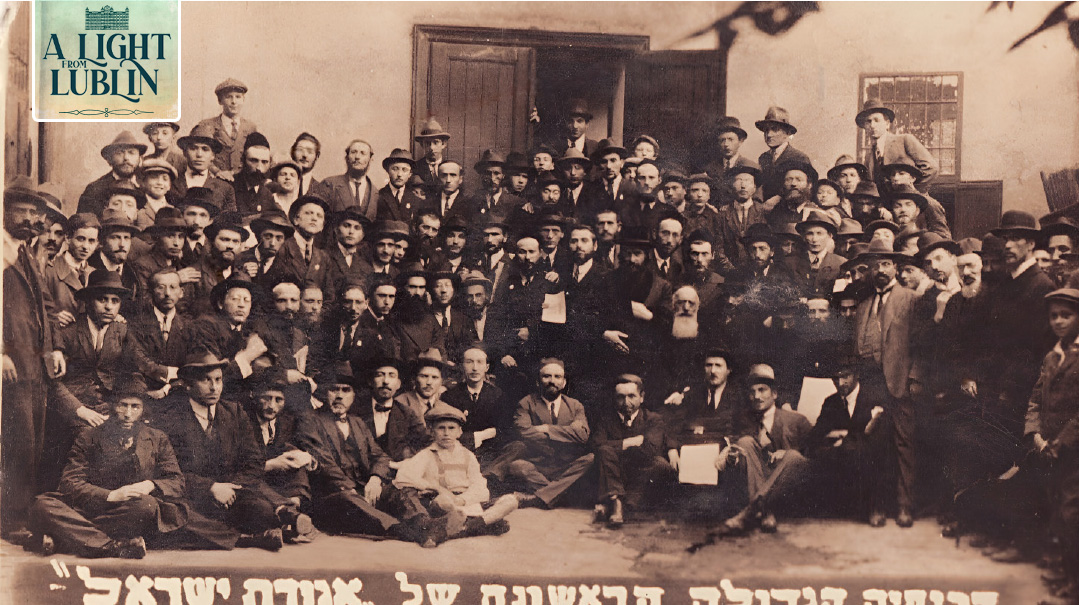
A rare photo of Rav Meir Shapiro (right of center) surrounded by fellow Agudists at the first Knessiah Gedolah in Vienna in 1923
Chapter III: A Yeshivah Like No Other
Two Children
Though Rav Meir Shapiro and his wife, Malka, did not have biological children of their own, he refused to consider himself childless. His close student Rav Shmuel Wosner recalled a summer evening stroll in the gardens of the yeshivah, during which Rav Meir declared himself the father of two offspring: the enduring legacies of Yeshivas Chachmei Lublin and daf yomi.
The first of his “offspring” had its genesis in 1912, when Agudas Yisrael was formed at a conference in Katowice, Poland. When news of this historic gathering reach Rav Meir, he famously commented:
“I wondered how Rav Chaim of Brisk, a Lithuanian gaon, would find a common language with Reb Yaakov Rosenheim, who grew up in German Frankfurt, or how a Jew from Tzfas or Poland would communicate with his colleague from Holland or America. Then I opened a volume of Maseches Berachos and realized that the Mishnah was written in Eretz Yisrael, the Gemara was written in Bavel, Rashi learned from teachers in Germany and wrote his commentary in France, the Baalei Tosafos lived in France, the Maharsha had resided in Lithuania, and the Maharam in Poland. Each most certainly had different qualities and characteristics, but the common pursuit of Torah truth unites them all; I then understood that Agudas Yisrael represents the Torah outlook, and it is this common thread that unites us all, from one end of the world to another.”
(This quote has been commonly attributed to a speech Rav Meir delivered at the Katowice Conference, although according to this author’s research on the subject, Rav Meir was not in attendance, so the speech was likely delivered at a later Agudah event.)
Rav Meir’s observation about the unifying power of Torah learning would sow the seeds for his proposal at the next gathering of Agudas Yisrael in the summer of 1923 (delayed nearly a decade due to World War I), the groundbreaking concept of daf yomi.
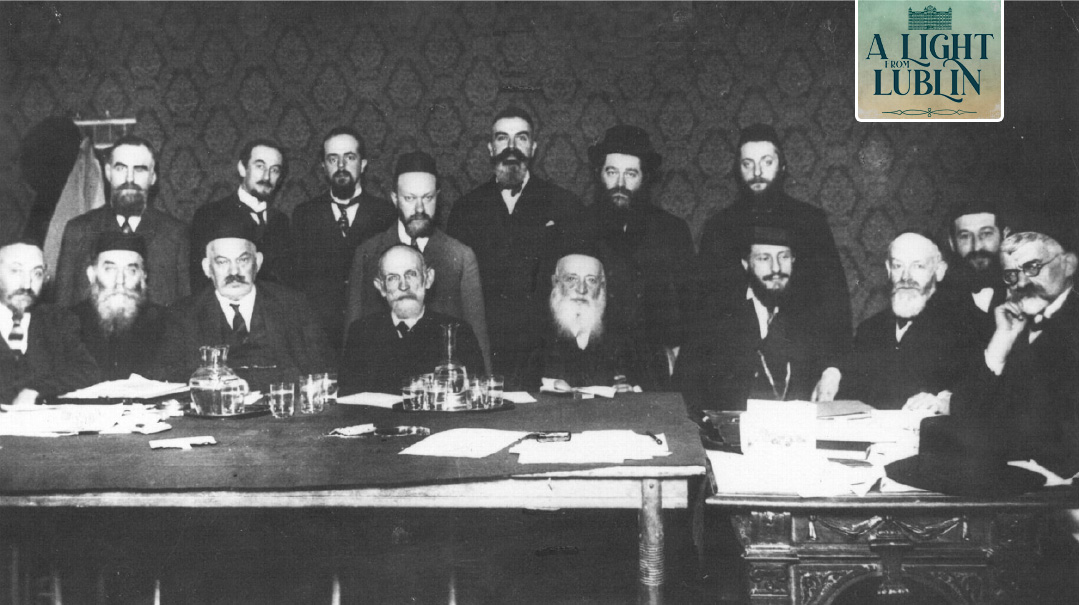
The Keren HaTorah committee, which helped oversee and fund projects like Sarah Schenirer’s Bais Yaakov and assisted with the establishment of Yeshivas Chachmei Lublin, consisted of important Torah activists from across Europe
The story of Rav Meir’s speech at the 1923 Knessiah Gedolah and the subsequent commencement of the first daf yomi cycle a few weeks later on Rosh Hashanah have become a vaunted chapter in our nation’s annals. Few, however, are aware of the rest of that groundbreaking speech he delivered on 7 Elul at the inaugural Knessiah in Vienna, where he laid the seeds for his second “child,” Yeshivas Chachmei Lublin (which he would officially announce four months later). New York’s Yiddishe Tageblatt shared Rav Meir’s emotional words:
Owing to the World War, two generations were denied a life of Judaism. Jewish children who were [as young as] ages 14–15 [at the start of the war] were subject to military responsibilities, and were forced to cease their studies. The younger generation, those who were ages four to six, were deprived of chadarim to learn in, and grew up lacking any Jewish education. Thus two generations were lost, and unless we do everything we can to save the third generation, Judaism risks the danger of a spiritual death.
We have, however, also lost much Jewish talent that we could have taken pride in. How many sharp Jewish minds were neglected? Should one wish to present a demonstration of this catastrophe, the following anecdote, which I witnessed, can serve as an illustration:
A year following the [end of the ] war, a 15-year-old boy approached me and asked to be accepted into my yeshivah. He comes from the village of Bialozorka, near the Russian border. The Bolsheviks had entered [the village] several times. Some of the Jews fled, and he had nobody to teach him Torah. He had already been to Lemberg, Warsaw, Lodz and Bialystok, but nowhere was he wanted or accepted, since he was destitute and would need to be supported. So, he was advised to approach me.
It was, however, a difficult period for me as well. [My] town [of Galina] was impoverished, and inflation was rampant — I had to struggle greatly to sustain the yeshivah. “But one boy,” I told him, “we will certainly find space [for].”
At this, the boy began to sob: “If I would only [be speaking for] one boy, I would have already found a place. We are, however, a group of ten boys from our town. We swore to each other that we would all be accepted to yeshivah together, and none of us would leave any of the others behind.”
“This was the story,” says the Sejm member, as tears trickle down his face, “and I did everything to ensure these boys were taken care of. And now, listen to this: the [leader of this group] studied at my yeshivah for three months. At the final examination at the end of the term, he knew 270 blatt of Talmud, with commentaries, by heart! He will develop into a great leader of the Jewish people. His name is Elkana Weizman. His fellow students are just as brilliant as he.”
If those in the West, who support the Jews of Eastern Europe, would be able to understand the importance of not losing these phenomenal Jewish talents, they would perhaps provide an even greater measure of support. We should be eligible for a great deal of credit, since we offer the best of guarantees. No government on the globe can offer such high returns. For every hundred dollars [given by] the American Jewish community, we can repay the loan with a Jewish genius, with a great Jewish leader, who will be the pride of the whole nation and the entire world.
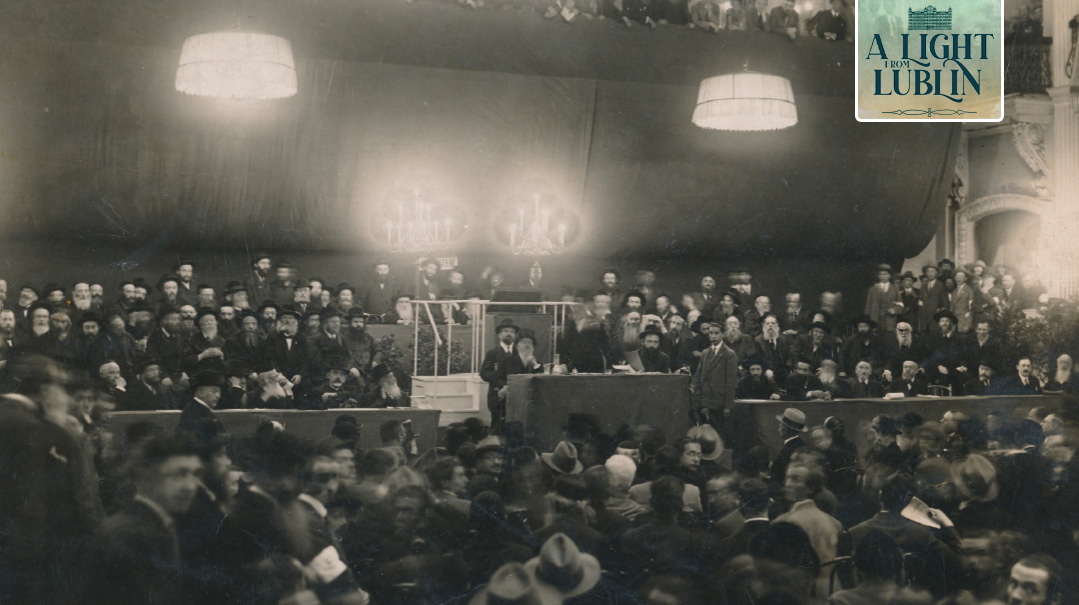
Rav Meir seated at the dais at the second Knessiah Gedolah of Agudas Yisrael in Vienna in August 1929
Can’t You Hear It?
AT the Knessiah, Rav Meir met a businessman and philanthropist named Shmuel Eichenbaum from Lublin. Poland echoed with tales of his generosity, with hardly a single chassidic rebbe untouched by his largesse.
The camaraderie that developed between Rav Meir and Reb Shmuel led to an invitation for Rav Meir to spend a Shabbos in Lublin. There his host led him along the paths of Lublin’s rich past, from the hallowed Maharshal Synagogue to the whispers of the ancient cemetery. But it was when Shmuel Eichenbaum pointed out his recently acquired property in the heart of Jewish Lublin at 57 Lubartowska Street, that the destiny of Torah in Poland took a defining turn.
What intention, Rav Meir wondered aloud, might have driven Eichenbaum to purchase this prime real estate? Before Eichenbaum could even respond, a gleeful Rav Meir interjected, assuring Eichenbaum that the Divine plan was clear to him. One could almost sense the palpable energy of Rav Meir’s vision for that piece of land.
Following Shabbos, a Melaveh Malkah was held at the Eichenbaum residence. Addressing friends and family of Shmuel Eichenbaum, Rav Meir spoke with passion. “Ich vil epes iberlozen noch zich,” he said, “I desire to leave a legacy.” For a rav bereft of offspring, what better legacy than a yeshivah, a beacon of Torah?
Eichenbaum, seeing an opportunity to contribute, offered his newly acquired land for this purpose. Rav Meir grabbed his host and practically danced him over to the site, even though it was well past midnight. Once they reached 57 Lubartowska, Rav Meir, in an act of complete jubilation, prostrated himself with his ear facing the ground and sang out, “Can’t you hear the kol Torah already?”
Yet no great deed ever goes unpunished. When people heard about Eichenbaum’s generous gift, voices of dissent rose, attempting to sway him from his generous pledge. But the bond forged in Vienna, and solidified in Lublin, remained unbroken. A written agreement was signed, the first major step of Rav Meir’s grand journey complete and on its way to its grand realization.
(Amazingly, Chaya Mindel Eichenbaum summoned her husband to a din Torah over the matter — not because she opposed the gift, but because he granted it without her involvement, limiting her own merit in the endeavor. Ultimately, a workaround was found so that she could share in the mitzvah.)
Property in hand, Rav Meir began in earnest to collect funds toward the construction of the grand edifice he envisioned, one that would eclipse all other yeshivos. Four months later, in December of 1923, Rav Meir felt confident that the project was on its way to becoming a reality and drafted a letter to Polish Jewry that appeared in local newspapers as well as other outlets:
Lublin.
We direct our gaze to the days of old, to the golden age of the Council of the Four Lands, when a world-class yeshivah existed here that served as a center of Torah in the state of Poland. Also, Torah and halachic instruction went forth from it to all of the Jewish people.
We have gathered today to raise up the yoke of Torah, to resurrect a world-class yeshivah under the name: Yeshivas Chachmei Lublin.
To this end, we have decided to erect a massive building that will contain classrooms, dormitory quarters, and a cafeteria, so that 500 gifted students will be completely cared for, spiritually and physically.
And the following individual will always be remembered favorably: the philanthropist Reb Shmuel Eichenbaum, who was moved to donate to us as a permanent gift — a suitable plot of land the size of 3,500 square meters.
May Hashem show his kindness to us all, and help us succeed in implementing His will to restore the crown [of Lublin] to its ancient glory, and this holy, precious institution, an institute to nurture Torah and yiras Shamayim, will soon stand in all of its beauty, to the glory of global orthodox Jewry.
We the undersigned
16 Teves 5684, Shabbos 43
Meir Shapiro, Rabbi of Sanok
Shmuel Eichenbaum
Moshe Tsheransky
Moshe Eisenberg
Yechezkel Ehrlich
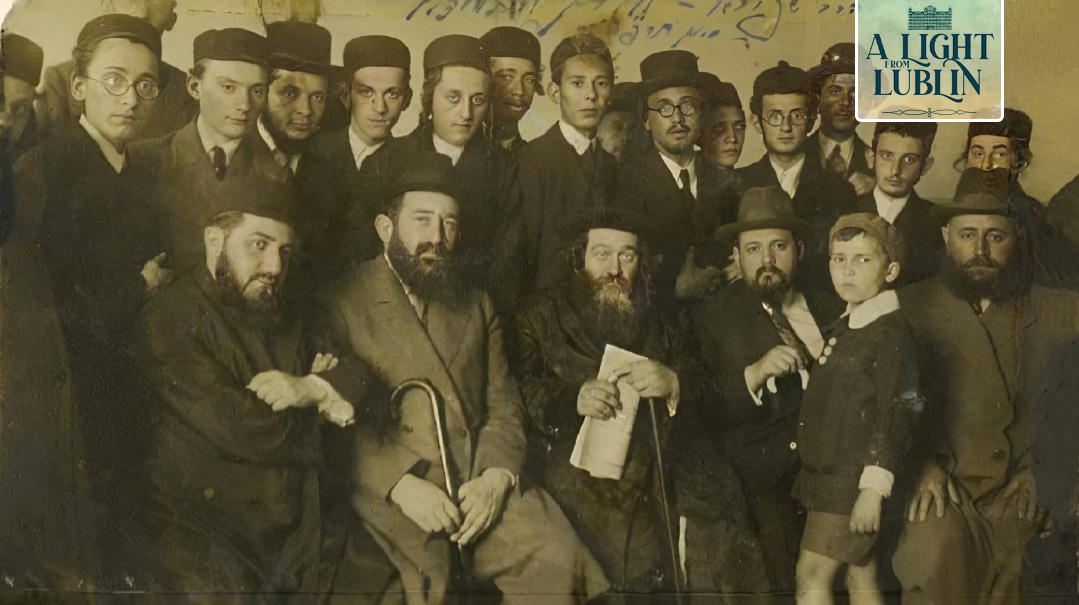
Rav Meir at a gathering along with prominent members of the Lublin community: Seated L-R: Moshe Eisenberg (chairman of the Building Committee), Shmuel Eichenbaum (donor of the yeshivah property), Rav Meir, Herschel Zilber (president of the Lublin kehillah)
Detractors Without & Within
While many rejoiced at the news of this exciting project, there were the inevitable detractors. The local radical Jews of the Bund looked upon the large expenditure as wasteful and an affront to their beliefs, using the headline, “Concerning the Resurrection of the Shtreimel” in an article about Rav Meir’s initiative. Rabbi Dr. David Slavin (whose tireless research on Rav Meir Shapiro has been essential to this author) unearthed an article from the anti-religious Folzeitung which he summarized as follows:
The article stated that the Gerrers knew how to use the press for their own purposes, and were now pulling all of the Jewish people into the mikveh, the masses into the cheder. The article conceded that the building was impressive, but stated that it would be more appropriate to house a benk (bank in Yiddish) rather than benk kvetchers (bench huddlers). This was a brilliant play on words — “bench huddlers” is a reference to yeshivah bochurim who sit on benches studying all day.
Instead of modernizing, students at the yeshivah would be told to hold onto their old ways. Students would sit and study shnayim ocha’zin be’dalus — two [litigants come before the court] grasping poverty — this is another cynical play on words, referencing the first mishnah of Bava Metzia, but substituting the word tallis (garment) with dalus (poverty). The author describes all the modern facilities, but how the outdated students would misuse them for old-fashioned religious purposes.
In addition, anti-Semitic elements found it unacceptable for such a showy edifice to be erected in the heart of Lublin, and arranged for the government to halt construction on the yeshivah’s lot three times.
At one point, a group of Polish clergymen claimed that the yeshivah’s land had formerly housed a church and had construction halted in protest of this “desecration.” They even went as far as erecting a large wooden cross on the site one night. Eventually, pressure from Agudah’s political machine ensured the project received the proper permits.
Complaints about the palatial edifice being erected came from both Lithuanian roshei yeshivah as well as some in Polish chassidic leadership. Economic woes still bedeviled the Jews of Poland and many “competing” mosdos complained to Rav Meir that the hundreds of thousands of dollars he needed to collect could be used instead to erect dozens of other yeshivahs, built in more pedestrian style. As always, Rav Meir was prepared with an answer, this time in the form of a parable:
One day, in a large chicken coop, everyone was surprised to find a large turkey among the chickens. The chickens objected, saying that the feed the stingy master offered was barely enough to sustain them, let alone their new “housemate.”
The turkey urged them not to worry, reassuring them. “True, I have a bigger appetite to sate. However, let me assure you that because I can scream and make a racket louder than all of you, I will leave the master no choice but to come and feed us more often and generously. As a result, the entire coop will be better fed.”
Rav Meir explained that he was the “turkey” in the fundraising efforts of Poland. When he encouraged people to donate money, they would be inspired to donate — not only to his cause, but also to many others. As a result, everybody would benefit. Rav Meir wanted to expand the total “pie” of donations and he was also certain that Yeshivas Chachmei Lublin would enhance the image of Torah learning, in general. He was convinced that people would spend money on causes that were important to them. If the public face of Torah learning came to be valued and perceived as honorable, then funds available to all learning institutions would increase.
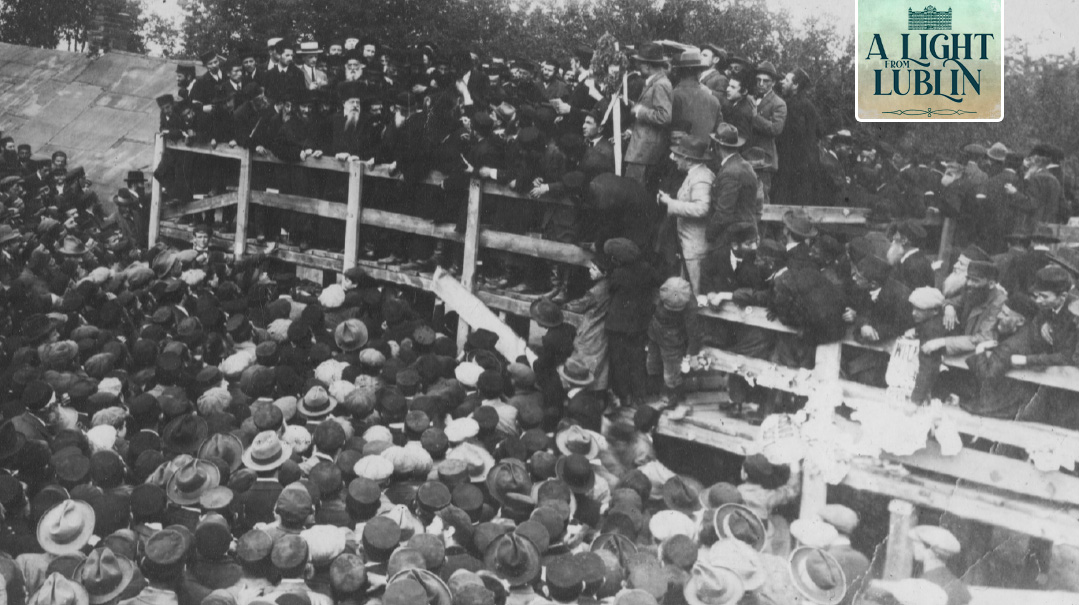
The crowd at the groundbreaking event held on Lag B’Omer 1924. The Tchortkover Rebbe can be seen at center
As illustrated in Rav Meir’s allegory, his motivation in building the yeshivah was to raise the public face of all Torah learning. And considering the lowly status accorded to yeshivah students, a transformation was sorely needed.
Israel’s former Chief Rabbi Yisrael Meir Lau (who proudly carries the name of his cousin Rav Meir Shapiro) shared that at the groundbreaking for the yeshivah, Rav Meir publicly expressed his gratitude to the “thieves of Poland” for their role in the project.
“Why am I planning to build a yeshivah with a dormitory?” he asked. “For this, we have to be grateful to the thieves of Poland. If there were no thieves in Poland, the storeowners wouldn’t allow the yeshivah boys to sleep in their shops because they wouldn’t need (night) watchmen. And if the boys didn’t have where to sleep, they would not come to cities like Warsaw and Lublin to study Torah. So we have to thank the thieves for the Torah studied in Poland.” He then switched from irony to passion: “I will not allow this situation to continue! This is why I am building a dormitory!”
In an interview with the producers of “Only with Joy,” a documentary on the life of Rav Meir, Rav Yisroel Yehoshua Eibeshitz, author of BeKrovai Akadesh (1916–2019), told of his experience studying in a Polish yeshivah in the 1920s: “In order to get a place to sleep I was locked into a store every night as a watchman. There was no water or bathroom. Had a fire broken out I could’ve been burned to death. Every morning the owner frisked me from top to bottom and checked even my shoelaces in case, G-d forbid, I might be stealing something. That was the system. I was a 13-year-old boy the first time I left my mother’s apron and came to a strange place to study Torah. Every day my blood was spilled. All this Rav Meir Shapiro wanted to change.”
Not only did Rav Meir aim to build a dormitory, he wanted the building to be aesthetically impressive. His students point to his relationship with the Tchortkover Rebbe, Rav Yisrael Friedman, the grandson and namesake of “Der Heilige Ruzhiner,” in order to understand his reasoning.
Once during a visit to the yeshivah by the Sadigura Rebbe, another Ruzhiner descendant, Rav Meir took the opportunity to articulate the link between the chassidus of Ruzhin and the yeshivah.
“It is well known,” he said, “that the derech of chassidus comprises a number of different pathways. The path of Ruzhin is that of Hod Sh’biTiferes, splendor and majesty. Its goal is to beautify the Torah and the mitzvos. Just as a diamond needs the correct setting to showcase its qualities, so too each mitzvah needs its own special place and setting.
“The Ruzhiner demanded that the external trappings of the mitzvah also be beautiful and glorified. This is the derech of our yeshivah, whose source is rooted in this derech of majesty and whose purpose is to show the true splendor of our holy Torah.”
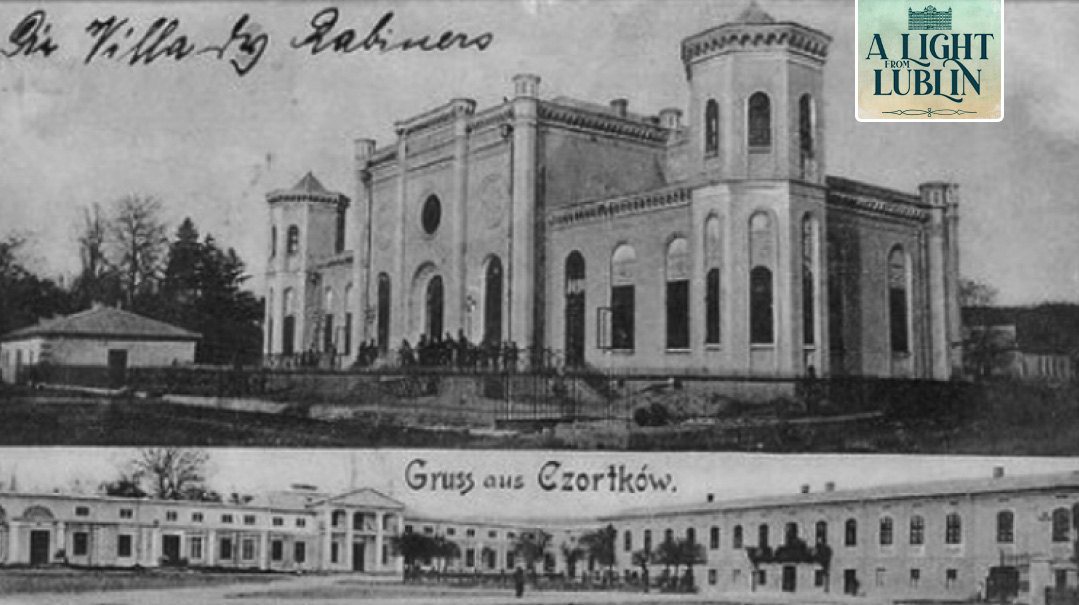
The home and beis medrash of the Tchortkover Rebbe
Go West
IN order to garner large-scale support for the project, Rav Meir planned a grand groundbreaking event (as portrayed earlier) for Lag B’omer of that year. The event attracted dozens of prestigious rebbes and rabbanim from across Poland as well as thousands of spectators and even more “well-wishers” — but far too few donors.
Sensing that he’d exhausted his fundraising opportunities in Poland, Rav Meir decided to travel to Western Europe, where he thought he’d find more sympathetic Jews — who would be capable of larger donations as well.
In “Keeper of the Law,” memoirist Eli Ginzberg tells of Rav Meir’s visit to Germany: “The Frankfurters in the congregation were fond of telling, among themselves, the story of Rav Meir Shapiro’s visit. ‘Rabbiner Shapira’ was both impressed and dismayed at the manner of Jewish observance; impressed at the organization of the Frankfurt community and dismayed that it tended to override the kind of fervor he knew as a chassid.”
During this trip, Rav Meir formed a close bond with Rav Shlomo Zalman Breuer (1850 – 1926), son-in-law of Rav Shamshon Raphael Hirsch, who he’d met years earlier when traveling to Frankfurt to get medical attention for his wife. Rav Meir affectionately referred to Rav Breuer as the “Western Wall,” because he served as the “spiritual line of defense” in the country west of Rav Meir’s home in Poland.
When Rav Breuer asked for Rav Meir’s opinion on the davening style of the Frankfurt community, Rav Meir pointed to a sign outside promoting kosher ice cream, telling Rav Breuer that the davening was the same as the ice cream: “frozen with the hashgachah of the Rav.”
This point was not lost on German Jewry, who gave Yeshivas Chachmei Lublin a backhanded compliment when they wrote in Der Israelite that the yeshivah would be a turning point for chassidim, who would “now focus on scholarship instead of being drinkers.”
Rav Meir had high hopes for his August 1924 visit to England, arriving following a successful visit to France. He was excited to reconnect in London with the Rebbe of his youth, the Shatzer Rav. (His all-encompassing grasp of history came in handy when asked by a reporter about any connections between Yeshivas Chachmei Lublin and the Jews of London. Hardly pausing, he replied that Menasseh Ben Israel (1604–1657), who played an important role in the readmission of Jews to England, sent his son to study in the great yeshivah in Lublin.)
While he had some successes in England, for the most part the trip was a disappointment. One day he traveled to a town outside London for an appointment with a wealthy man who contributed absolutely nothing. Rav Meir said sarcastically that he now realized the great extent to which England welcomed her guests. “While in Poland I have the privilege of traveling by train for gornisht (nothing) on account of being a Member of Parliament; here, too, I have traveled by train for gornisht.”
Rav Meir also traveled to Ireland as well as Switzerland, Belgium, and Holland, but he soon realized that there was only one place that might bring him the funding necessary to realize his dream: America.
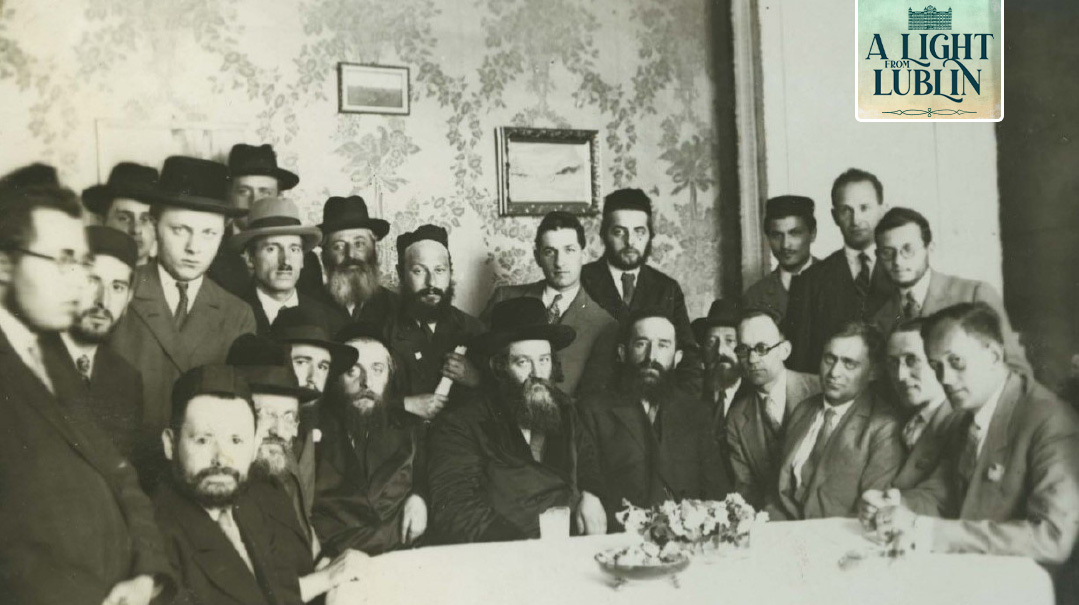
Unlike most roshei yeshivah, Rav Meir would regularly conduct interviews with the media, even conducting press conferences on a regular basis to update both the jewish and secular media on the yeshivah’s progress
Chapter IV: American Dream
Across the Atlantic
ON the evening of August 15, 1926, the main railway station in Warsaw was packed with throngs of well-wishers, eager to escort the Piotrkower Rav as he embarked on the first leg of his voyage to the United States. Campaigning in the goldeneh medineh for the welfare of Eastern European Torah institutions was a popular fundraising tactic in the roaring 20s: nearly every major Lithuanian rosh yeshivah visited (at least once). During the course of his American visit, he would be joining up in some cities with Rav Meir Dan Plotzky (1866–1928), author of the Kli Chemda, who sought aid for the Mesivta of Warsaw.
In the months prior to his departure, Rav Meir published his sefer of responsa, known as Sh’eilos uTshuvos Ohr Hameir. He proudly carried with him several boxes of the new sefer, to distribute as gifts to the rabbanim and laymen who assisted him throughout his trip. The inscriptions from those seforim (of which this author has come across quite a few) have been helpful in tracing Rav Meir’s journey across the continent.
Rav Meir booked passage on the Cunard line’s HMS Majestic (the sister ship of the Titanic). He was accompanied on the journey by Moshe Eisenberg (a prominent member of the Lublin community) and Yosef Rappaport, the son of Reb Hirsh Rappaport (1830-1899), the gabbai of the Tchortkover Rebbe. The six-day cross-Atlantic voyage was unavoidably extended several hours due to the foggy weather, but finally, at 12:30 p.m. on August 25, the Majestic managed to dock at Pier 59 in New York City. The arrival of the young, charismatic Rav of Piotrkow (who also served as a delegate to the Polish Sejm) generated no small amount of publicity, which Rav Meir was more than happy to channel in pursuit of his vision.
In a news conference, Rav Meir shared with the reporters from the Yiddish and Anglo-Jewish press his plans to balance the yeshivah’s budget:
The Rabbi declared that according to calculations, the cost would be $100 per year per pupil. About 200 pupils will be admitted at the start, the number to be gradually increased to 1,000; at full capacity the budget will call for $100,000 yearly. The following unique plan will be adopted to collect this budget: 50,000 yeshivah boxes (pushkes) will be distributed in Jewish homes all over Poland, each box to contain an average of seven zlotys yearly. This will net an approximate sum of $35,000; one-third will come from pupils’ fees, and the last portion it is hoped for will come from a government subsidy and as yet to be discovered sources worldwide.
(Professor Shaul Stampfer has written extensively about the pushke campaign, which became the source of major controversy when Keren Rabi Meir Baal Haneis complained that they had the exclusive rights to distribute pushkes. The conflict resulted in a din Torah that ruled in Yeshivas Chachmei Lublin’s favor — though this hardly ended the controversy, which continued for years.)
A quick glance at the Jewish newspapers of the time makes it clear that despite all the positive coverage generated by his arrival, very little of it promoted the true purpose of his trip. One English-language outlet completely ignored the fact that Rav Meir had come to America on behalf of Yeshivas Chachmei Lublin and reported that “Grand Rabbi Maier Shapira, a member of the Polish Parliament, together with his official staff, will shortly confer with President Coolidge at Washington on trade concessions between Poland and the US.”
Yet another report focused on Polish economics:
Rabbi Shapiro is one of the youngest members of the Polish Parliament and a good friend and active supporter of Marshal Pilsudski, the Polish Dictator. On his arrival in New York, he was given an official reception by Polish Government officials, including the Polish Envoy and Consul in New York.
When questioned as to economic conditions in Poland, the rabbi replied that “the Polish economic situation is not at all good. Poland is a country rich in natural resources. With an abundance of oil, natural gas, and coal, it has no capital to carry on its industries. Until credit can be established, Poland will be unable to utilize its riches.
“Businessmen are required by banks and private individuals to pay the high rate of interest of four percent per month. The government, however, lends money at a rate of one half that charged by the banks. Our budget system is working much better and at the present time is very efficient.”
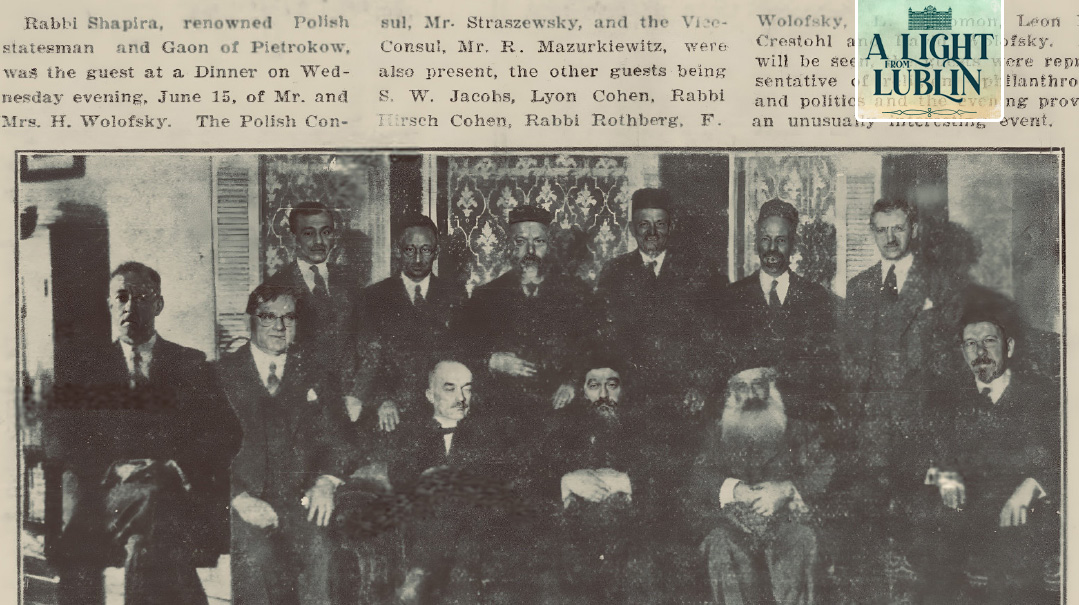
Dismal Results
For the first several months, Rav Meir stayed within the confines of the New York metro area. During the week, his base of operations was the Broadway Central Hotel, while Shabbos and Yamim Tovim were spent with relatives and admirers, such as his cousin Mendel Shapiro of the Lower East Side (who served as president of the Melitzer Shtibel), and Rav Levi Yitzchak Kahane (d. 1950), a rav in Williamsburg.
On the evening of August 31, a grand welcome reception was held at the Beth Shalom Shul in Williamsburg. While New York’s Republican Senator James Wadsworth (1877–1952), then in the heat of what would turn out to be a losing reelection bid that fall, was unable to attend, he did send a close confidante to represent him: Assistant United States Attorney General William “Wild Bill” Donovan (1883–1959), who would later become the founding father of the CIA.
Despite all the publicity, the initial fundraising results were dismal. Rav Meir was so desperate to realize his dream that he accepted a job leading Yamim Noraim tefillos in a Williamsburg shul: davening from the amud, speaking, and even blowing shofar. (When his companion Moshe Eisenberg took ill on Simchas Torah and could not make it to shul, Rav Meir had the sensitivity to put on a full reenactment of the hakafos ceremony in their lodgings, pretending to take the “sefer Torah” out of the “aron’’ and dance, as if there was a large crowd present….) For his services, the shul presented him with $500 in addition to a gold cane.
Part of the problem stemmed from the fact that some American rabbanim simply disagreed with what they viewed as the extravagant plans for Chachmei Lublin. “Why build such an expensive building in such a poor country?” Rav Meir was asked. He responded with a parable about a poor man who was offered a high-risk business venture with a possibility of high profit margin. The pauper’s rebbe advised him that if he had wealthy relatives who could help him were he to fail, then he should proceed. “So too, similarly, in Poland, I feel we can rely on our rich relatives in America.”
Moreover, most of the American Rabbinate at the time aligned with Mizrachi, whereas Rav Meir was a prominent and unabashed Agudist.
When several Mizrachi rabbis who did sympathize with his vision suggested that perhaps he should cease identifying with Agudah to improve fundraising, Rav Meir famously replied: “If I would be ‘in the Agudah,’ I could simply resign… In reality, however, the Agudah is ‘in me’….”
Rav Menachem Mendel Hager, one of the current Vizhnitzer Rebbes of Bnei Brak, related the following episode at a 2013 gathering in Tzfas:
When my holy grandfather [the Imrei Chaim of Vizhnitz] ztz”l was in America in 1949 and 1950 in order to [raise funds to] establish Kiryas Vizhnitz, many people didn’t believe in his vision and even suspected that the whole operation was a scam and that he was taking the money for himself, G-d forbid. He persisted.
One evening, when he arrived back at the (Broadway Central) hotel, the owner honored my grandfather by allowing him to stay as a guest in the room where the Gaon Rav Meir Shapiro had stayed while serving as an emissary for his holy yeshivah in Lublin. The hotel owner told him that even Rav Shapiro suffered many embarrassments. He was broken over the lack of recognition of his mighty enterprise, and upon his arriving at the hotel, paced the corridors engrossed in thought. Suddenly, said the hotel owner, Rav Meir broke out in heartfelt song (one of many he would compose) to the words of Tehillim 94: “Im amarti matah ragli chasdecha Hashem yisadeini — If I said my feet have faltered, in Your kindness, Hashem, You have supported me.” He continued singing and dancing with dveikus until his great exuberance had its effect, and from all of the hotel rooms Jews emerged and gave him hearty donations.
The significance of this, said my holy grandfather, was the great merit of acting with mesirus nefesh in order to strengthen the Torah at any cost, and that is what enabled Rav Shapiro to implement his sacred task of establishing the study of the daf yomi. That same burning desire is what also helped him transform that program into an eternal heirloom for the Jewish People in every place they may be found. There are thousands of Jews following his light each day, and thanks to his efforts, the merit of the multitudes is established for all generations.
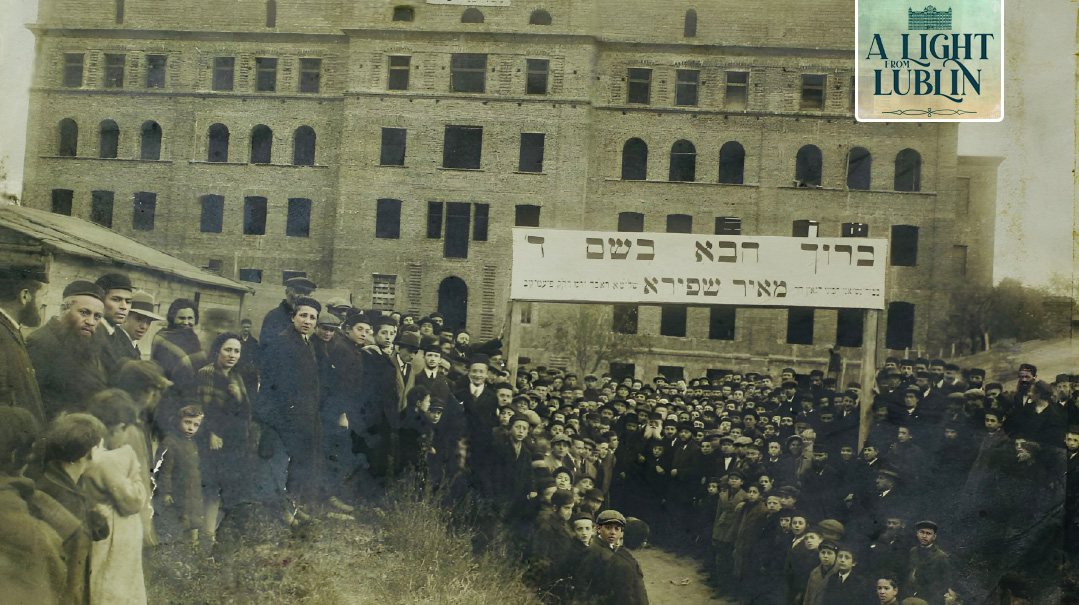
Rav Meir is greeted by a crowd on a visit to the partially completed yeshivah building following 13 months in America
New York & Beyond
Over the fall of 1926, aside from campaigning for Chachmei Lublin, Rav Meir visited and delivered shiurim at the yeshivos of New York: RIETS and Yeshivas Rav Shlomo Kluger on the Lower East Side, Mesivta Rabbeinu Chaim Berlin in Brownsville, and Mesivta Torah Vodaath in Williamsburg. He was particularly impressed with Torah Vodaath and took a special liking to the young man who was likely the continent’s youngest daf yomi maggid shiur: the 15-year-old Gedaliah Schorr (1910–1979), presenting him with a signed copy of his work Ohr Hameir.
Many years later, Rav Gedaliah would still recall the impassioned hesped Rav Meir delivered that autumn on the Lower East Side, marking the passing of Rav Yissachar Dov Rokeach (1854–1926), the third Rebbe of Belz: the room, estimated in the press as packed with 1,500 people, was filled with audible sobs.
At one point, Rav Meir led the entire assembly in sitting on the floor, as a sign of their immense mourning. He reminisced of his personal interaction with the Belzer Rav: The Rebbe was once extremely bothered — to the point of sleeplessness — about a problem he had discovered regarding the measurements of the Beis Hamikdash, remarking that the one who could resolve this difficulty for him would always be remembered by the Rebbe “both in this world, and the next.”
In the fall of 1922, the Rebbe’s son-in-law, Rav Pinchas Twersky (1880–1943), received a letter with a proposed solution to the problem from a relative of his, the 35-year-old Rabbi of Sanok, Poland, Rav Meir Shapiro (see: Ohr HaMeir, #25). The Rebbe was very pleased with this solution, declaring it “Toras Emes!” (Rav Meir offered to discuss the topic with anyone in the audience, following the conclusion of the event.)
In media interviews given shortly before departing Europe, Rav Meir had sounded confident that he could meet his fundraising goals in the United States within three or four months, leaving him time to travel to Mandatory Palestine before returning home. However, it soon became clear that this timeframe had been too optimistic, and that the New York City region alone could not provide the funding necessary to build the yeshivah (by the end of October, the campaign reported a total of $3,000 raised).
On December 16, a week after Chanukah, Rav Meir boarded a southbound train heading for Baltimore.
Aside from a one-day stopover in February, he would not return to New York City until the end of July, spending the next seven and a half months on a whirlwind of fundraising events crisscrossing the continent. From Boston to Denver, and as far north as Canada, he spent time in every major interwar Jewish community in North America, tirelessly campaigning in speech after speech for his vision of Chachmei Lublin.
By the time Rav Meir returned to New York City on July 29, he had $70,000 cash in hand for the cause, with additional funds in outstanding pledges. (The total raised after travel and marketing expenses was $53,000.) The tour of America’s heartland had indeed yielded fruit.
August 1927 was Rav Meir’s final month in the United States. While largely remaining in New York (speaking in Brownsville and the Bronx), he did attend several receptions in the cities of New Jersey, such as Passaic, Paterson, and Jersey City. On August 28, one year and three days after he stepped off the Majestic, a large farewell banquet was held for Rav Meir at Cooper Union in Manhattan. Rav Meir departed for Europe on the liner Berengaria on August 31, having penned a public letter earlier that same day in support of… Mesivta Torah Vodaath. For Rav Meir Shapiro, in the fight of his life to build Yeshivas Chachmei Lublin, all yeshivos were sacred and deserved to be supported generously.
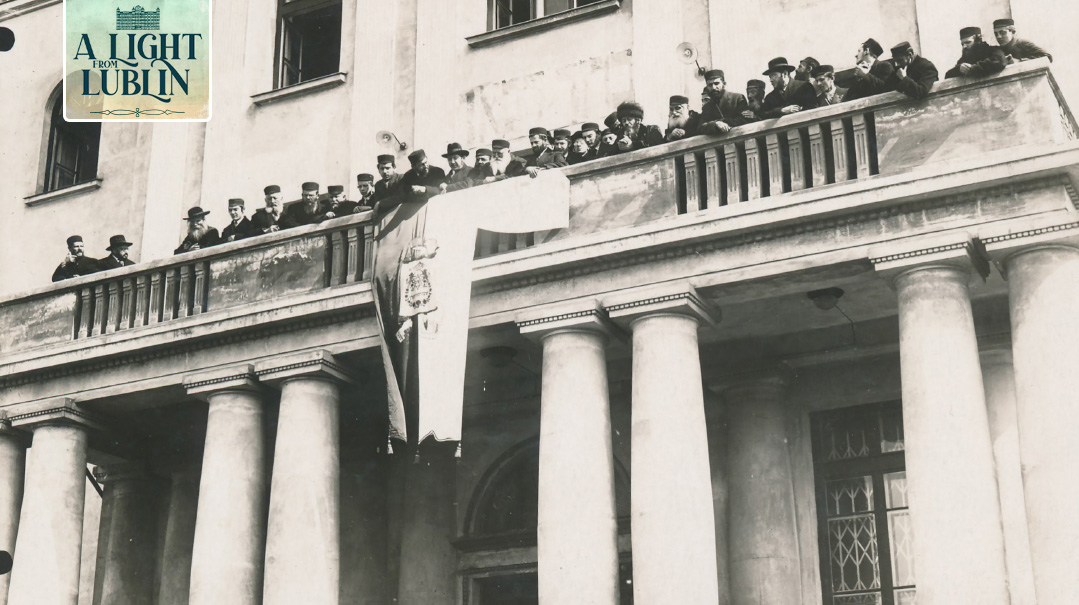
The Chachmei Lublin flag was designed by Rav Meir to embody the values and ideals of Yeshivas Chachmei Lublin. At its center, the flag depicted a Torah scroll supported by hands with “Yissachar” written on the sleeves, and a crown placed on it by the “Zevulun” hand from above. The black and white backdrop of the flag represents the partnership between Yissachar and Zevulun. This partnership highlighted Zevulun’s dedication to supporting the Torah studies of Yissachar.

The black and white colors also alluded to the saying of the Sages that the original Torah existed as black fire imposed over white fire. The Izhbitz-Radzyner Rebbe, Rav Yaakov Leiner (1828-1878) writes in his sefer Beis Yaakov, that while fire symbolizes light, sometimes its brightness requires moderation for comprehension. Just as we use a pinhole to view an eclipse, our bodies serve as vessels to limit the soul’s intensity. The concept of black fire is a necessary filter for the white light, making the Torah’s teachings more accessible. Additionally, fire symbolizes the removal of physical constraints. Thus, the black fire on white fire in the Torah illustrates its multi-layered meanings: some aspects may be beyond human understanding, while others provide guidance and purpose in our lives.
Chapter V: The Dream Comes to Life
Journey to the Land of the Yeshivos
AShis dreams for the yeshivah came closer to fruition, Rav Meir faced a pressing dilemma: Which derech halimud (approach to learning) should the yeshivah adopt? The luminaries of Lublin’s past — the Maharam of Lublin, the Maharsha, and the Maharshal — each had their distinct methodologies.
Rabbi Yehoshua Baumol expounds upon this quandary:
Open, then, just about any large, thick volume of Talmud in a standard edition, and in the back sections you are quite certain to find all three on a single page: on the upper part, Maharsha; and below, side by side, Maharam and Maharshal — three commentaries from Lublin with three ways of study:
Maharsha — a quiet thoughtfulness and a clear, penetrating understanding in depth (the approach is apparent in virtually every line); Maharshal — to derive the essence of the halachah, the normative, definitive law, that can be found in the Talmud text (this approach emerges more emphatically in his Yam shel Shlomo); and finally, Maharam — a simple insistence on the plain, basic meaning of Talmud text.
Thus Rav Meir could find three “chachmei Lublin,” three great scholars of the city’s illustrious past, with three distinct ways of Talmud study. And so the question remained: What method should be adopted for the new, modern Yeshivas Chachmei Lublin?
Unable to decide on his own, Rav Meir decided to take a trip to the “land of the yeshivos,” which following World War I was now Polish Lithuania, to personally observe the Litvish approach to learning. (At that time, Poland and the independent nation of Lithuania whose capital was Kovno did not have diplomatic relations, so he could not travel to the region where Telz, Slabodka, Ponevezh, and other prominent yeshivos were located.)
His first stop was in Radin where he consulted with the elderly Chofetz Chaim, the acknowledged gadol hador and someone who had been instrumental in heartily endorsing his daf yomi concept. (Rav Chaim Kreiswirth, one of the great students of Chachmei Lublin (1918–2001), related that the Chofetz Chaim instructed Rav Meir to arrive late to the keynote session, and upon his arrival the Chofetz Chaim stood up and gave Rav Meir a prestigious welcome, thus ensuring the young rabbi would receive the respect of the audience.)
The Chofetz Chaim held Rav Meir Shapiro in immense respect, largely due to Rav Meir’s revolutionary initiative of daf yomi, which ushered in a renaissance in the study of long-neglected “orphaned” masechtos. Traditionally, many Jews had focused their studies on just a few select masechtos, often sidelining others. Daf yomi shifted this paradigm, democratizing the entirety of Shas. Previously, engaging with all of Shas was a privilege held mainly by distinguished scholars. With the introduction of daf yomi, even ordinary Jews were presented with the opportunity to delve into every single masechta.
Recognizing the magnitude of Rav Meir’s accomplishment, the Chofetz Chaim drew a symbolic parallel between the mitzvah of pidyon shevuyim (ransoming captives) and the rescue from obscurity of these “imprisoned” masechtos, especially those of seder Kodshim (for which the Chofetz Chaim had a special affinity). At this historic meeting in Radin, the Chofetz Chaim prophetically remarked that the study of Kodshim (both through daf yomi and as it was popularly studied in Yeshivas Chachmei Lublin) would play a role in expediting the arrival of the redemption.
Rav Meir Shapiro also visited the great Torah citadel of Mir, where he drew encouragement from Rav Yerucham Levovitz (1875–1936), who spent hours discussing each and every detail of the planned yeshivah. During davening, Rav Meir grew curious when he noticed that the Mirrer Yeshivah students did not appear to be wearing tzitzis. (They were in fact tucked in, a style that seemed foreign to the visiting chassidish scholar.) When Rav Meir questioned one of them regarding the oddity, the bochur answered in jest based on the mishnah in Taanis 26, “In order not to shame those who are lacking them.” A short time later, a package arrived at the Mirrer Yeshivah filled with tzitzis. It was addressed to “the students who don’t have them,” courtesy of Rav Meir Shapiro.
(When word of its arrival reached Rav Yerucham, he admonished the students, explaining another mussar principle: that one may joke with someone who will understand the witticism, but not with someone who will take it seriously.)
Rav Meir also visited Baranovitch, where he was so impressed with Rav Elchonon Wasserman (1874–1941) that he asked if the famed rosh yeshivah would consider joining the faculty in Lublin. Rav Elchonon pointed to his students and asked, “But what would I do with my children?”
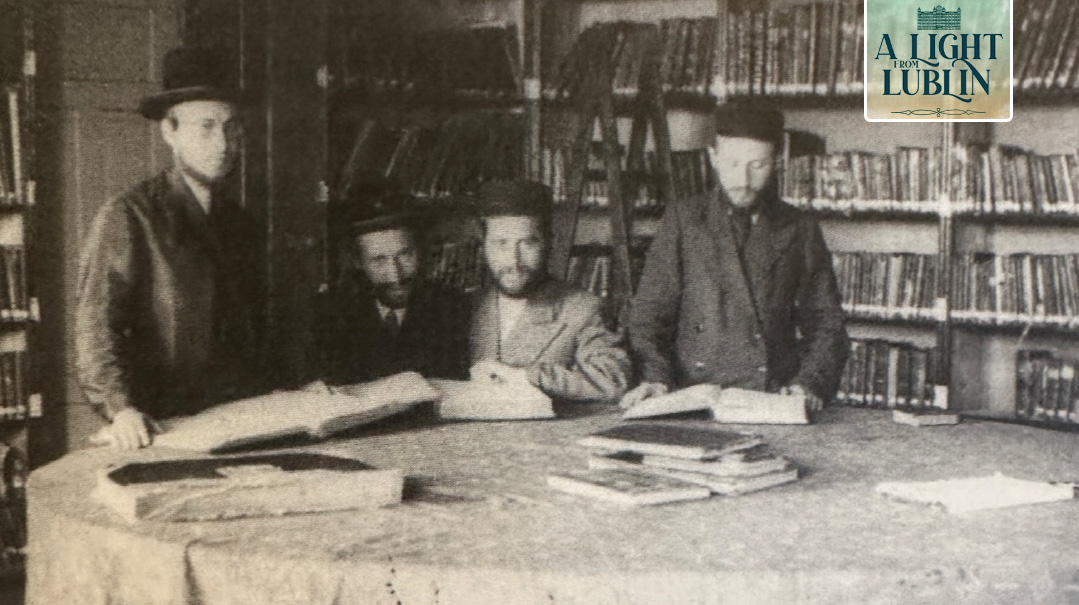
In the prized library of Yeshivas Chachmei Lublin (R-L): Rav Pinchas Hirschprung, Rav Binyamin Yitzchok Vernick, yeshiva librarian (and editor of the journal Kerem Beis Shmuel) Rav Yisrael Yitzchak Weinacht, and Rav Yaakov Moskowitz
Chassidus Is Essential
IN general, Rav Meir brought back a favorable impression of the yeshivahs in Lithuania, with their strong discipline, persistence, assiduous study, and an essential inner love for Torah lishmah.
Yet at the same time, he came to realize a tremendous distinction between the outlooks of the chassidim and their counterparts in Lithuania, something Rabbi Baumol recalled him asserting with a parable, another testament to Rav Meir’s legendary wit:
A chassid and a misnagid were studying Gemara Sukkah together. They came to the daf (28a) that speaks of the greatness of Rav Yonasan ben Uziel. The Gemara recounts that when a bird flew over him while he was studying, it was immediately consumed by fire.
The chassid immediately exclaimed: “Can you imagine the extraordinary level of holiness that Yonasan ben Uziel attained? I wonder how one can reach such lofty spiritual heights!”
The misnagid, however, was lost in a totally different train of thought. “Was the Tanna obligated to pay for the bird or not?” he wondered. “Is this considered direct damage, or indirect damage?”
“That,” concluded Rav Meir, “is the difference between the thinking of a chassid and a misnagid.”
(Rav Lipa Geldwerth, rav of Khal Kol Torah in Flatbush related to me that he once heard from Rav Avraham Shkop that he repeated this anecdote to his grandfather, the Grodno rosh yeshivah, Rav Shimon Shkop, who immediately replied, “Takke, min daf klerrin!”)
Chassidus itself, Rav Meir decided, was to be an integral feature of the students’ chinuch. What the Mussar Movement founded by Rav Yisroel Salanter accomplished in the Lithuanian yeshivos, chassidus would achieve in Yeshivas Chachmei Lublin. Beyond studying Gemara and halachah, chassidus was necessary for avodas Hashem, the refinement of middos, uplift of the neshamah, enthusiastic tefillah, and the joyous celebration of every Shabbos and Yom Tov.
(In fact, the yeshivah would later become a haven for Breslover chassidim at one point. When the border dividing Poland and the Soviet Union became impenetrable in the aftermath of World War I, Breslover chassidim in Poland sought an alternative locale to spend Rosh Hashanah since they could not reach Uman.
At first, gatherings were held in all major Polish cities, like Warsaw, Lublin and Lodz. Around 1928, however, the decision was made to consolidate all the various groups into one, and on Rosh Hashanah of that year, Breslover chassidim in Poland traveled en masse to Lublin, marking the Yom Hadin in a large building (used as a cigarette factory) that the community offered them.
This scene repeated itself the next year as well, but in 1930, the Breslov community asked Rav Meir Shapiro whether they might use the newly opened Chachmei Lublin campus (since the student body comprised primarily chassidic young men, it tended to empty out on Yamim Noraim, as the different groups flocked to the courts of their respective rebbes). Rav Meir not only acquiesced; he actively participated, serving as the baal tokeia and davening Maariv from the amud. The visitors were offered a tour of the library, which featured an impressive model of the Beis Hamikdash along with its seforim collection.
Breslover chassidim continued using Chachmei Lublin in lieu of Uman, with the exception of one year, right up until the Holocaust. The one year that they did not utilize the main beis medrash was the last Rosh Hashanah of Rav Meir’s life, when he implored his talmidim to stay in yeshivah for the Yamim Noraim. The Breslover chassidim had to use the downstairs area. However, at various points during davening, they came up and joined the main minyan with dancing, creating a special synergy.)
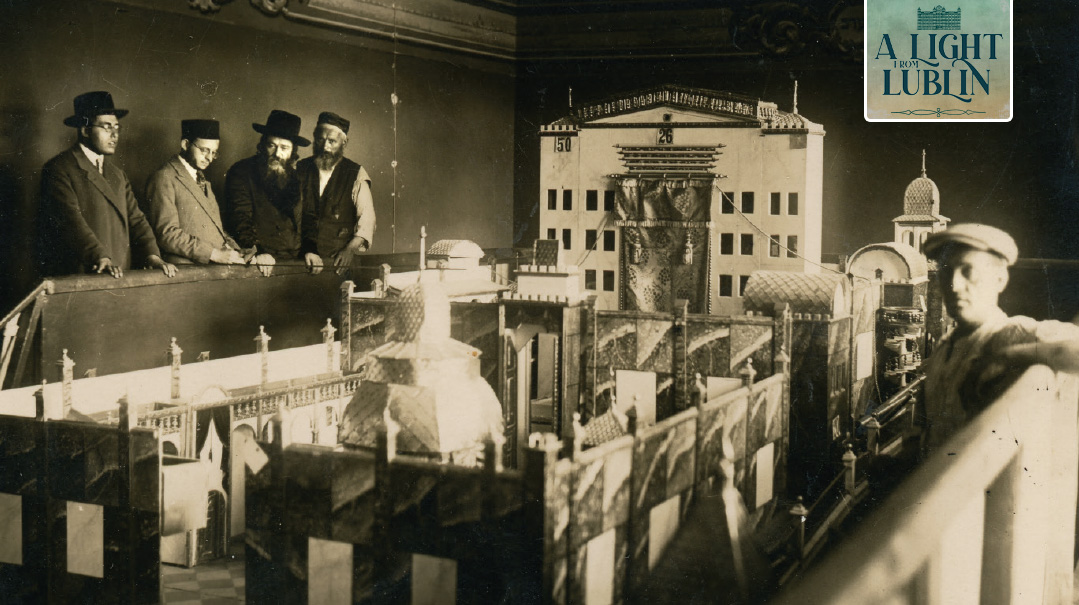
The Gates Open
After more than five years of trials and tribulation, construction was finally complete; the building of Yeshivas Chachmei Lublin stood ready for its students. The building had five floors (a sixth remained unfinished) and over a hundred rooms. There were washing machines and dryers for the students’ laundry, a large dining hall 30 meters in length, where meals were served by waiters on china, a heated mikveh, a double kitchen for meat and dairy, an infirmary, shiur rooms, a three-story beis medrash, a vast library, luxurious dormitory rooms, and more.
In line with the emphasis on learning Kodshim, there was a room that contained a model of the (second) Beis Hamikdash built by the artisan Chanoch Weintraub. And there was also a large garden where students could stroll and relax while remaining inside the safe environs of the yeshivah.
Upon entering the yeshivah, each student was issued a number that identified his place in the dining room and seat in the beis medrash. This number was sewn into all of his clothes. If his things needed cleaning, he deposited them into the laundry basket in his room and the next morning would find his laundered clothes in the box bearing his number.
At the front of the building, a sign in gold letters spelled out the verse, “Come, children, listen to me: I will teach you the fear of Hashem” (Tehillim 34:12).
Before the yeshivah opened, the Tchortkover Rebbe told Rav Meir, “Perhaps you should open the yeshivah quietly, so that it will not be affected by ayin hara, for we find that the first Luchos, which were given at Har Sinai before all of the Jewish nation and with the knowledge of the entire world, were broken.”
Rav Meir asked permission from his Rebbe to respond, and when this request was granted, he answered as follows:
Didn’t Hashem know that giving the Luchos publicly would prove harmful and that they would ultimately be broken? Why then did He give them with such fanfare?
In those days, before the giving of the Torah, the world was filled with ignorance and idolatry. Had Hashem given the Torah in silence, how would people have known that He controls the world? How would they have heard the voice stating, “I am Hashem your G-d”?
Hashem, as it were, said, “Even if the Luchos will be broken later, let everyone hear that Hashem gave the Torah to His nation.”
So, too, at this time, a great public ceremony marking the opening of the yeshivah will cause a stir in the world, and will thereby bring about a kiddush Hashem and will raise aloft the banner of Torah.
The Rebbe greatly appreciated Rav Meir’s reasoning and granted his approval to the festive opening. Again, tens of thousands of people streamed to Lublin from near and far to see the glory and radiance of Torah.
Rav Meir commenced his address with the words of David Hamelech: “In my trouble I prepared a House for Hashem” (Divrei Hayamim I 22:14), and ended with a fervent prayer: “He Who created the world and all within it, may He complete (hashleim) this building.” He homiletically used the word “hashleim” in the sense of payment, saying that he hoped that the yeshivah would be able to pay all its debts.
The Gerrer Rebbe shared a blessing that the building become great, a place where Torah and yiras Shamayim would be taught together, and those who studied within it would succeed. The Tchortkover Rebbe proclaimed that the true construction of Yeshivas Chachmei Lublin — that of its spirit — was just beginning, and the holy Torah was celebrating its entry into this new house. The Rebbe was honored with affixing the mezuzah on the yeshivah gate.
It is said that Rav Meir gave the youngest of the students the golden key to open the yeshivah and said in a loud voice, “Just as the gates of the yeshivah below have been opened, so You, Hashem, open above the gates of salvation and consolation for Israel.” All answered, “Amen, Amen!”
The next day, 29 Sivan, Rav Meir delivered the first shiur in Yeshivas Chachmei Lublin. All the students came, as well as hundreds of invited guests and Jews from Lublin and the surrounding area. Rav Meir arose with a mixture of joy and awe, and in a trembling voice pronounced the prayer of the Tanna, Nechunya ben HaKanah: “That I should not err in a matter of halachah, and that my friends should delight in me… and save me from any obstacle or error, both in teaching and in learning Torah… Open my eyes so that I may see the wonders of Your Torah.”
A new era had begun for Poland’s yeshivah students.
(Rav Meir was also appointed as Rav of Lublin, but that did not happen until a year later, as he awaited the endorsement of the previous rabbi, Rav Eliyahu Kletzkin (1852-1932), who had departed for the land of Israel several years earlier, as well as approval from municipal authorities.)
Give Me Your Seforim
E
ver the ambitious visionary, Rav Meir was not satisfied with a grand building. He also saw the need for a comprehensive “Central Torah Library of Lublin.” He reached out to the global Jewish community, urging contributions to create an expansive collection encompassing every important work of Torah, from ancient to contemporary.
As modernity’s influence grew, many Jews distanced themselves from Orthodoxy and stopped learning the holy seforim, leading to neglected collections of Jewish texts. Rav Meir aimed to prevent the disrespectful disposal of texts containing the written name of G-d and to uphold Orthodox pride. He encouraged people to donate their collections to Yeshivas Chachmei Lublin and even sent representatives to gather books.
The response was inspiring. Jews, even those with limited means, came forward with sacred books. Rav Binyamin Guth of the Chasam Sofer Shul in New York (the first shul to host Rav Meir on his trip to America) donated as many as 4,000 volumes and $1,000 to the library. Special committees established throughout Poland sent thousands of books to Lublin, including priceless old prints and manuscripts, which they collected from institutions and private donors.
When the yeshivah opened in 1930, the library already included several thousand volumes and was constantly growing. It had become one of Poland’s largest and most valuable Jewish religious libraries at that time, eventually reaching some 60,000 volumes in 1938.
Yet Rav Meir’s ambitions went further. Recognizing that many students had access to only basic texts, he drew inspiration from the Shitah Mekubetzes, a collection of Talmudic commentaries by the 16th-century gaon, Rav Betzalel Ashkenazi. Rav Meir proposed a groundbreaking initiative: young scholars at his yeshivah would use the yeshivah’s vast library to create a series of new, profound commentaries on all the tractates they studied. This project would gather novel insights and interpretations from the vast rabbinic literature.
Furthermore, Rav Meir envisaged a synergy between spirituality and practicality. In collaboration with donors, he hoped that these new insights would be published as affordable volumes, democratizing access to deeper Torah knowledge. According to his plans (which unfortunately were not realized) this endeavor would not only stimulate renewed enthusiasm for learning, but also provide sustenance for the scholars and students, marrying spiritual growth with material support.
Countless legends surround the fate of the grand library of Yeshivas Chachmei Lublin following the building’s seizure by the Nazis in 1939. The theory that the collection was burned by the Nazis has never been verified by any legitimate source. While various seforim have turned up in different libraries and private collections throughout the world, the vast majority of its holding have never been found.
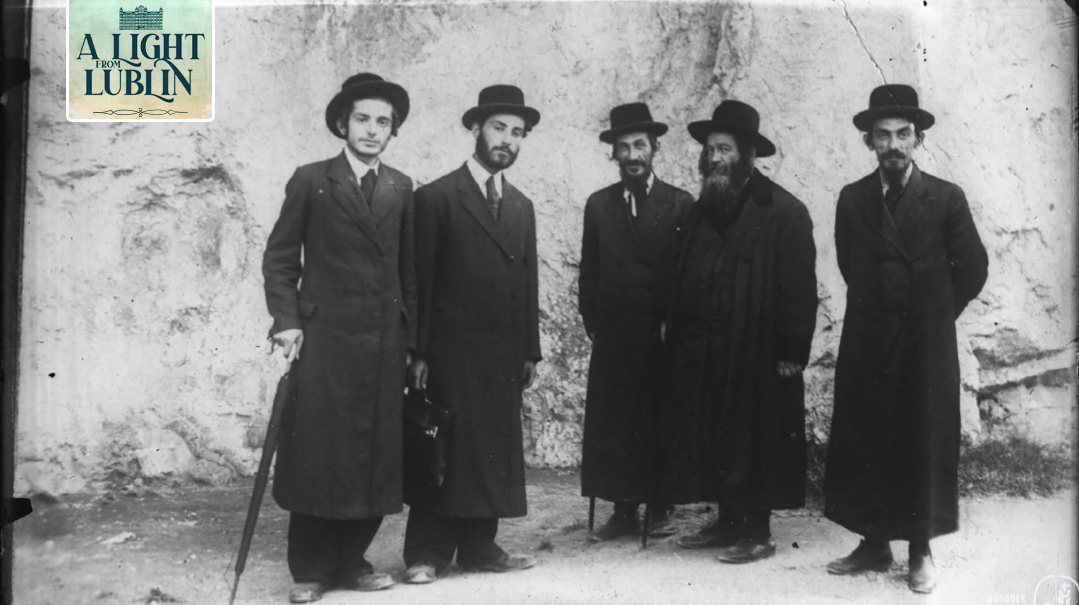
Rav Meir with members of the Baumol Family (L-R): the author Rav Yehoshua (1913-1942), Rav Yosef Mordechai (1911-2006), their father Rav Yoel Moshe (1886-1937), Rav Meir Shapiro, and Rav Naftali Hertz (1890-1975), the brother of Rav Yoel Moshe
Chapter VI: The Glory Days
Elite Strategy
Soon enough young men in the hundreds flocked to the new yeshivah from all over Poland. A core group arrived from Rav Meir’s yeshivah in Piotrkow, where he’d served as rav since 1924. Rav Meir knew he would be unable to accept all the others who hoped to attend and so he instituted a basic condition: before a student could be accepted, he must know 200 dapim of Gemara by heart. While it’s unclear how long this requirement lasted, the first crop of students (approximately 70) to be accepted did apparently meet it.
Rav Meir’s selectivity stemmed from his desire to raise the status of yeshivos and the perception of bochurim, by making Yeshivas Chachmei Lublin — or Yachal, as he called it for short — an institution for the most outstanding students. The demanding entrance requirements left no doubt as to the extraordinary qualities of those students who learned at his yeshivah and as a result, public appreciation for both the institution and its students increased.
During one entrance exam, Rav Meir asked prospective student Shmuel Tanchum Rubenstein (1916–1998) whether he had studied the whole Yoma by heart. Testing his affirmative response, Rav Meir asked how many times Rav Ada Bar Ahava was mentioned in the mesechta. Rubenstein answered that this name was mentioned four times, and listed them as being on dapim 14a, 16b, 44a, and 44b. Rav Meir subsequently asked him if he had learned the seventh perek, to which he responded, “No.” Later, when Rubenstein looked in the last perek, he found that the name appeared again on daf 72b.
The yeshivah used a scouting system, similar to that used by professional sports teams today. Using this technique, many Jewish prodigies were discovered. One of the yeshivah’s greatest students (and later a member of the hanhalah) was Rav Pinchas Hirschprung, originally from Dukla. Gifted with a compassionate heart, brilliant mind, and photographic memory, he became a prime student of Rav Meir, who once attested that Rav Pinchas has mastered all 2,711 dapim of Gemara by heart while still a youngster. By the time he was a teenager, he had already written two seforim and was among those who would test the prospective talmidim seeking to gain entrance. Rav Moshe Chaim Lau (who inherited Rav Meir’s position in Piotrkow), Rav Avraham Dovid Gelbfish (the head of the Chachmei Lublin affiliated mesivta in Otwock), and several senior students also assisted with the testing process across Poland.
Rav Hirschprung was regularly sent on scouting missions for the yeshivah and it was on one of these trips that he “discovered” 12-year-old Velvele Cohen in Lodz, who informed him that while he did not know the required 200 dapim by heart, he did know the entire Nedarim with the Ran and the Rosh. Seeing such acumen at such a young age was enough for Rav Hirschprung to recommend his acceptance — based on potential alone.
Rav Shmuel Wosner was one of those who did not pass the examination. As he had to wait several hours until the next train departed for his hometown of Vienna, he sat down in the beis medrash and used the time to learn. Observing this, Rav Meir promptly accepted him to the yeshivah.
Avrohom Mordechai Hershberg (1916-1985), later a rav in Chicago and Chief Rabbi of Mexico, was another student who applied. While awaiting the official reply, he worked in the dining room. One of his jobs was to set the table. He knew he had been accepted in the yeshivah when he was informed to start setting another place.
Special exemptions were made for heirs apparent of chassidishe rebbes; they were accepted to the yeshivah even if they were less academically accomplished. Rav Meir explained that since they were going to become rebbes in any case, it would be better for them and their followers if they had a rigorous Torah education. (There are stories of rebbes’ children arriving at the yeshivah with two or three attendants, though it’s unclear whether the attendants were permitted to stay.)
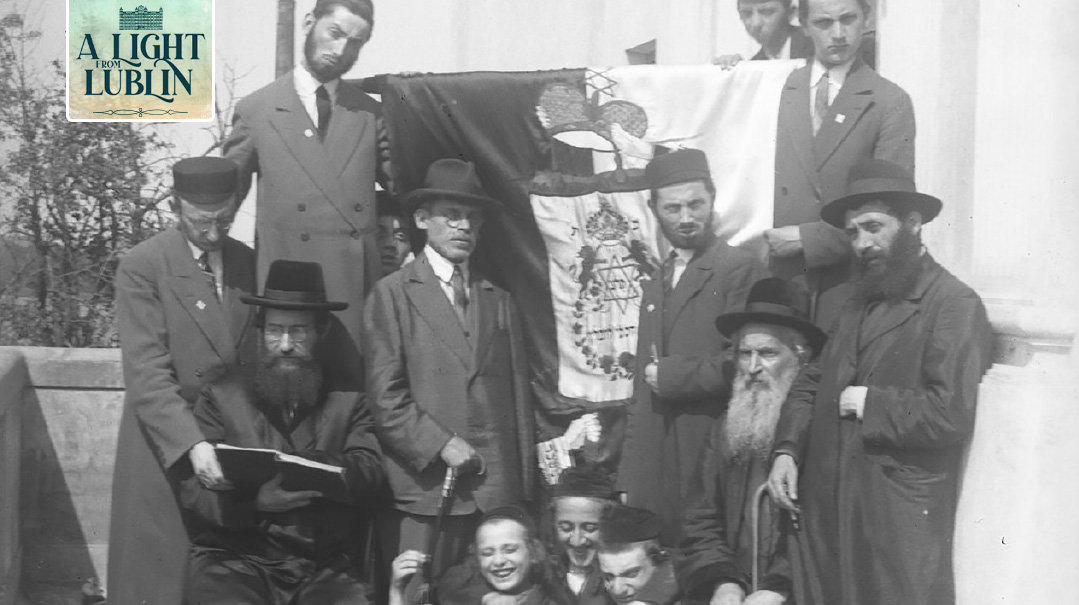
Seated on left: Rav Moshe Chaim Lau (1892-1942) Middle row L-R: Rav Shabsi Schonfeld, Dr. Levi Nimtzotz, Rav Avraham Lebel (note the yeshivah flag in the background)
Around the Clock in Yachal
AT its high point, Yachal housed close to 400 students. A reporter once asked Rav Meir where he expected to find 400 rabbinical posts for all the students in the yeshivah. “Perhaps only two will become rabbis,” Rav Meir answered. “But the other 398 will become balabatim capable of appreciating a rav!”
(Another version of the story was written in the book Merry Heart by Felix Mendelssohn in 1951. He writes that when Rav Meir came to fundraise in the US, he visited the secular German-Jewish philanthropist Felix M. Warburg (1871–1937). “How many students will study in your academy?” asked Warburg.
“About 400, maybe more,” replied Rav Meir.
“And how many will be ordained as rabbis?” inquired Mr. Warburg.
“Not more than five or six.”
“If that’s the case,” commented Mr. Warburg, “I see no reason why you should maintain so many students.”
“The reason is very simple,” Rav Meir explained. “We need learned laymen so that they may intelligently choose rabbis for their congregation.”)
As the yeshivah grew, Rav Meir found himself weighed down by the growing administrative responsibilities. In addition to Reb Yosef Koenigsberg (1881-1943), a local businessman who came aboard as executive director (and later took on more duties), he hired Rav Shimon Engel, known as “Rav Shimele Zelechover,” to join the yeshivah’s leadership. Rav Shimele became a revered mashgiach ruchani who inspired and led the students, thanks to his prodigious knowledge and pious behavior.
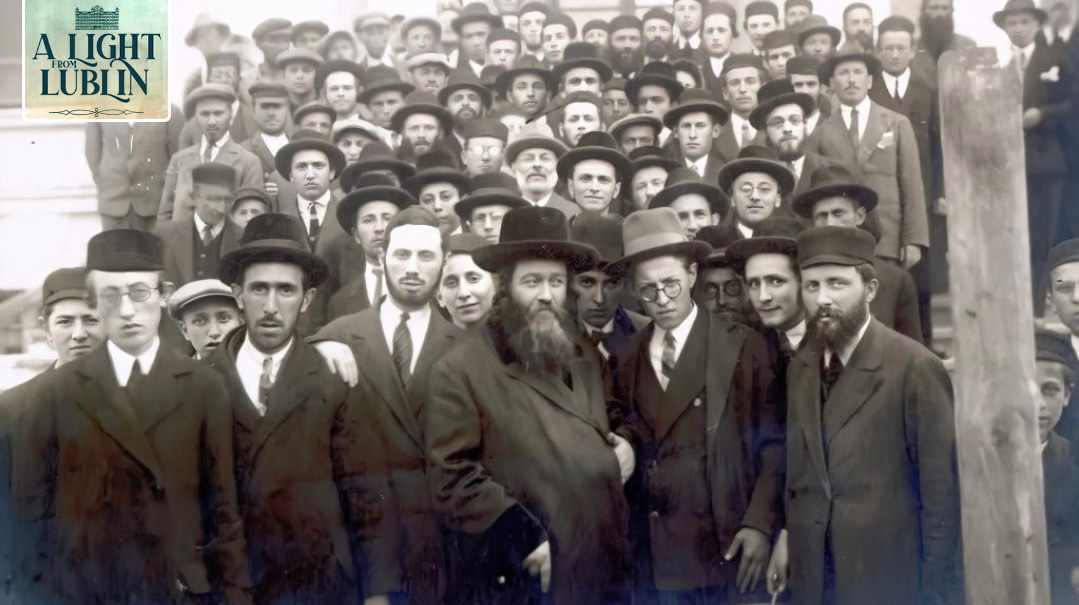
Rav Meir poses with journalists and students at the yeshivah’s opening in 1930
In Yachal, the yeshivah day began at 5:30 a.m. with bells ringing to wake the students. (Some have asserted that the bells were unnecessary because many of the students were already awake and in the beis medrash.) The first shiur began at 6:15 a.m.
Study continued until 7:30 a.m., when Rav Meir entered the beis medrash wearing his tallis and tefillin, marking the beginning of Shacharis. Davening took an hour and a half, during which time no student left his place as a mark of respect and discipline. (One student described the davening of Rav Shimele Zelechover, the mashgiach, as “awe-inspiring, sometimes exceeding four hours.”)
An interesting observation was made by Rav Mendel Meir Morgenstern, the Sokolover Rebbe, who was a student at the yeshivah in 1936. He recalls that to ensure bochurim arrived to seder on time, the doors were open for only 15 minutes, after which they were locked. After 15 minutes they were reopened, but only briefly. This sequence continued another few times. Its point was to prevent bochurim from arriving intermittently every two or three minutes. If they were late, they would be (at least) 15 minutes late.
To ensure the students would arise early, the lights were turned off in the beis medrash at 11 p.m. sharp. Only the light in the stairwells stayed on throughout the night. According to a reporter from Riga’s Heint, that hardly ensured that the light of Torah stopped burning:
The studiousness that burns in the yeshivah still hasn’t ended the old “fight” between the students and the yeshivah administration. Usually, the administration wants the students to sleep at night, to rest up, while the students want to learn. The Rav ztz”l ruled that at 11–12 at night, the electricity shall be turned off in the beis medrash. The bochurim don’t capitulate however, and they go into the spacious hallways and sing to themselves the sweet Gemara melody. Hearing this, the remaining masmidim throw themselves out of bed, and so turn the wheels of “kinas sofrim.”
It is said that the Rav ztz”l one time became very “angry” when this occurred. In the middle of the night, he dressed and came and “shouted” at the bochurim, “Why don’t you let me sleep?” The bochurim ran out of the hallway of the Rebbe’s residence and found positions in other hallways. This hallway battle still takes place to this day.
Daf yomi’s role in the daily schedule of the yeshivah is debated among former students and historians. Rabbi Eliezer Katzman writes in his essay Nitzotzei Ohr HaMeir that when Rav Meir was setting up Yeshivas Chachmei Lublin, he consulted with different Polish Torah leaders regarding the role daf yomi should play in the yeshivah’s daily schedule. One suggestion was that since daf yomi was Rav Meir’s “child,” it would make the most sense to conduct the yeshivah’s learning based on the daf yomi learning cycle: a page daily.
He then asked one of Warsaw’s rabbinic leaders, Rav Avraham Weinberg (1872–1942), for his opinion on this issue, and he was answered with the following parable: “A man entrusts his son to a baker to learn the trade. The baker places him at the front of the shop by the till. The boy may sell a lot of bread, but he will not become a proper baker unless he is placed in the back of the shop. Similarly, just hearing a daily lecture on daf yomi, he will only learn the skill of delivering a shiur but will never learn how to delve into a sugya.”
As a result of this advice, Rav Meir did not structure the study schedule based on daf yomi. There are accounts that some students studied the daf but according to Rav Tzvi Meir Lichtig, later a rav in Brooklyn, it was not part of the regular curriculum but rather an optional shiur.
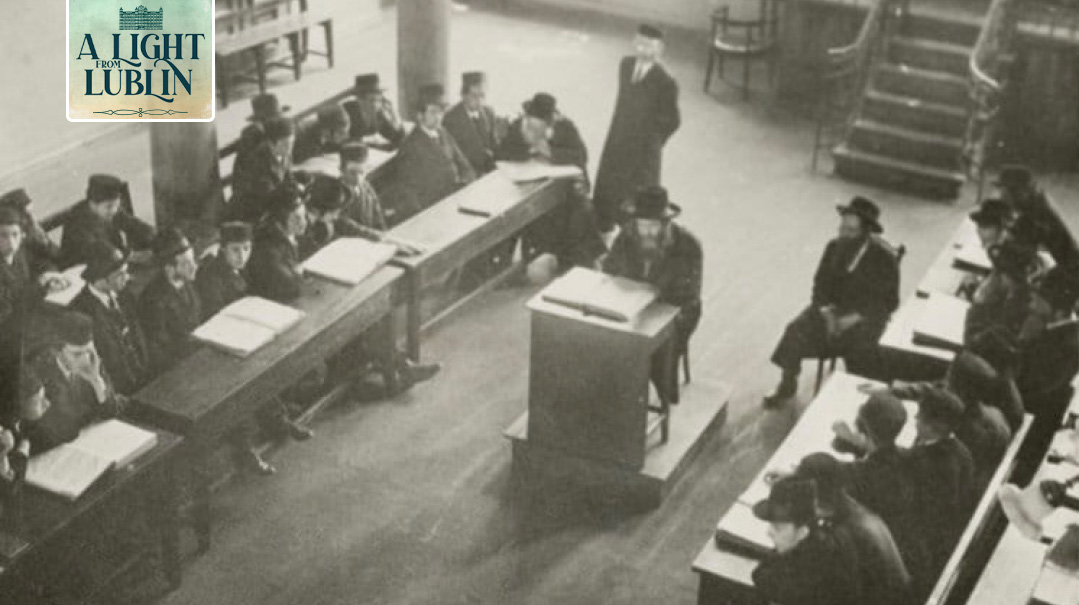
Rav Meir saying a shiur in the yeshivah
No Separations
During Rav Meir Shapiro’s lifetime, the students of the yeshivah were not separated into different classes or levels. Everyone attended the same shiur — everyone was considered elite. (That changed following Rav Meir’s death, when several different levels of classes were implemented.)
An outstanding feature of the yeshivah — arguably the most important — was the fact that it welcomed students from all chassidic affiliations and was not designed to promote or strengthen a particular chassidic court. In the words of Rabbi Slavin:
Rav Meir Shapiro aimed to develop a chassidic identity that was deeper than just allegiance to one’s own rebbe, but was viewed as an effort in ‘pan-chassidic’ solidarity that would have Torah learning at its core. He wished to transcend chassidic sectarianism and to create a place where all chassidim were welcomed and felt at home, based on the centrality of the high-level Torah scholarship.
(Even while maintaining its chassidic roots, the yeshivah was so innovative that it was perceived as too “modern” by some of the fiercely traditionalist elements in Poland and Hungary. The story is told that a student returned home for Pesach, now brushing his teeth daily as was customary in yeshivah; his father, convinced his son had been ensnared by modernity, banished him from the home.)
A reporter from the Warsaw Yiddish daily Unzer Express who visited the yeshivah in its later years observed that Rav Meir had succeeded in eradicating the petty partisanship that existed elsewhere:
Even the various chassidim live together here. In the dining room, usually 12 sit per table — six on each side, forming small cliques. In this fashion, a Belzer table is formed, a Tchortkover table is formed, and so on. At the celebrations, however, this neat system became a little mixed up, in order to accommodate the guests and because it was necessary. I observed the unity of the Belzers with the Tchortkovers and others. This gives the yeshivah a style of the academia. However, all of the differences are wiped away when it comes to dancing. Here in Yeshivas Chachmei Lublin was where I first saw that a dance is an avodah!
He continues with his impression of the yeshivah:
The yeshivah is satisfied with, for example, a bochur such as Mordechai Yehuda Lubar, of Kutna, who spurred himself to go through seder Kodshim tens of times, clearly a great accomplishment. And a bochur like Velvele Cohen [the same Velvele Cohen that Rav Hirschprung discovered], who knows 500 blatt Gemara by heart — that’s also no small thing. And a bochur such as Yossel Ehrlich, the talmid from Vlatzlavk, who learns 20 hours out of every 24, without exaggeration — this is something special in today’s day and age.
However, here, you have different types and different approaches to things. It is certainly praiseworthy that the yeshivah administration doesn’t squelch the unique nature of the talmidim; rather it unites them and lets each develop individually.
They don’t want to stereotype or dictate — learn a certain way, act a certain way. Therefore, each gifted student is encouraged to remain an individual. In line with this approach, the yeshivah does not overly emphasize studying b’iyun. A student with a natural affinity for bekius is permitted to work on bekius.
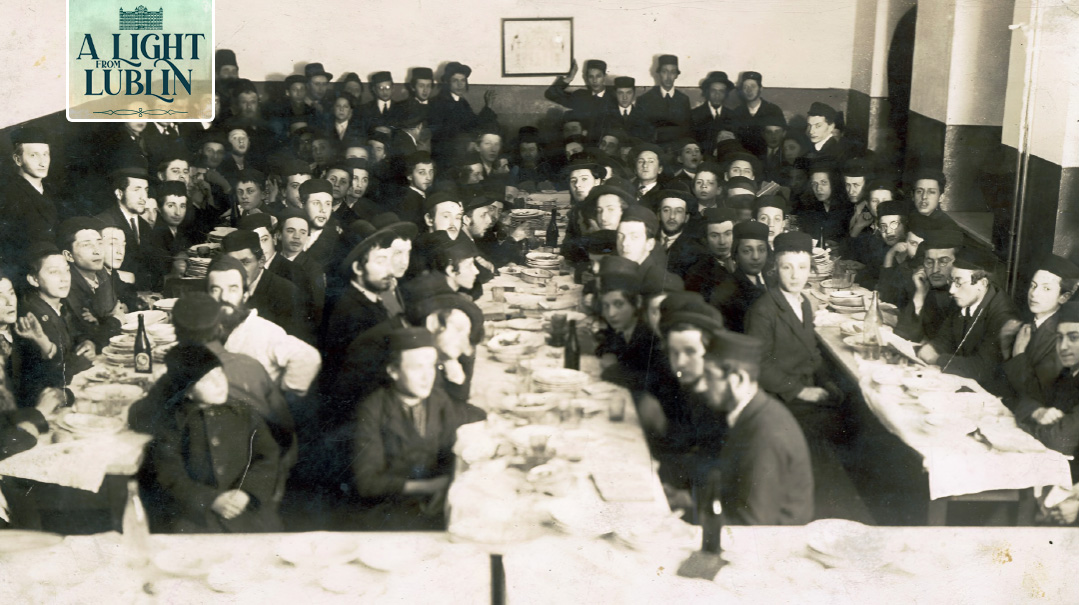
Rav Meir would eat his meals with the students, a time he often utilized to learn Shaarei Teshuva or share stories of tzaddikim with them
More than a Father
Misbehavior was extremely rare in the yeshivah. Chachmei Lublin alumnus Rabbi Chaim Meir Yechiel Shapiro (because he shared his name with Rav Meir Shapiro, fellow students affectionately nicknamed him “The Yid Hakadosh,” an ode to Rav Yaakov Yitzchak Rabinowitz (1766–1813), who was known by that moniker because he carried the same name as his teacher, Rav Yaakov Yitzchak Horowitz, the Chozeh of Lublin), said that the concept of wasting time simply didn’t exist among the students of Yeshivas Chachmei Lublin. He referred to a comment that the Gerrer Rebbe made to Rav Meir: “The yeshivah was not designed to turn bochurim into geonim; rather it was an institution for those who are already geonim.”
No tests or “report cards” were needed, but it was clear that Rav Meir and other hanhalah members were monitoring the progress of each and every student. The year was divided into two zemanim, or semesters. Just because one was admitted for a semester did not guarantee he would be invited back the following semester.
In an interview with Rabbi Slavin, the future Sokolover Rebbe recalled the humiliation of a student was not invited to return. “It was a terrible blow to both the student and his family and these decisions were final. Gornisht geholfen, nothing whatsoever could help.”
But for those within the yeshivah walls, Rav Meir’s affection was abundantly clear. Rav Meir’s close disciple, Rav Shmuel Wosner, writes:
One of the signs of his love for, and closeness to, us, the students, could be seen in his custom of eating lunch together with us every Monday and Thursday, in the dining room of the yeshivah. During the meal, he would learn Shaarei Teshuvah of Rabbeinu Yonah with us. So too, it was his custom on Shabbos to eat all three meals with us.
On the same topic, the famed Yiddish journalist Moshe Prager writes:
He was not just a father to his students. All his students, and especially the exceptional ones, were like only sons to him…. The Lubliner Rav was the father of hundreds of only sons… and his wife, the Rebbetzin, who outlived him by only half a year was his helpmate in this regard. A motherly heart for the students beat within her. She would seclude herself in a corner of the yeshivah kitchen and help peel the potatoes for the precious students. She would stay up until midnight in her room, mending clothing and knitting socks for them, though she rarely saw them… If a student became seriously ill, the Rav would remain awake the entire night at his bedside… If a student felt depressed, the Rav immediately sensed it… If there was a simchah in a student’s family, oh, how the Rav would rejoice!
I once took part in the funeral of one of the students of Yeshivas Chachmei Lublin. Yaakov Yitzchak of Tashnastachov, one of its best students. He was the son of poor parents, and their only consolation in life. The Angel of Death came and snatched the crown from their heads. The bereaved parents stood before their son’s coffin and the sound of their weeping tore at the heavens.
Suddenly, a shudder seized those present. The Lubliner Rav had come! He had managed to arrive at the funeral at the last moment, after a lengthy and arduous journey. The Rav fell upon the coffin of his beloved student, and it was like a storm — a heart-rending storm of distress and pain.
I do not know what the other people present felt at the time, but I have to confess that I instinctively looked at the bereaved parents. The father and mother suddenly went silent, standing as if frozen at the coffin. It appeared to me that they were ashamed to show their grief. Here they stood, the father and mother who had given birth to the boy and raised him, and here was the rebbi who had taught him Torah. Yet, his weeping was more intense than theirs had been. The parents were ashamed, and their weeping ceased….
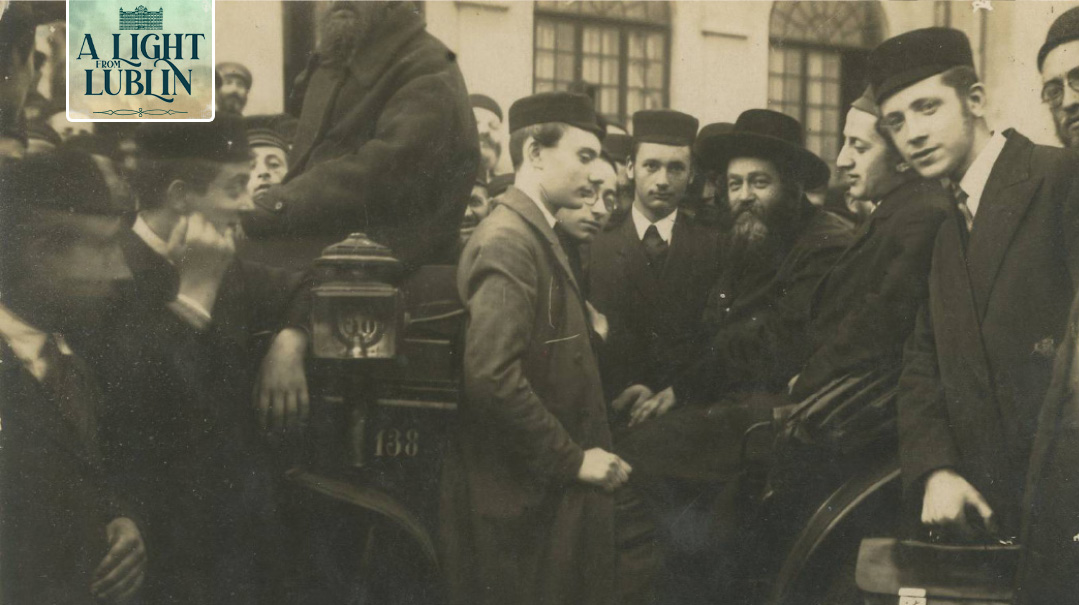
Rav Meir would often take students to meet his rebbe, Rav Yisroel of Tchortkov, where they would receive special attention from the rebbe
Rav Meir’s fatherly love for his students earned their own love and esteem in return. Rav Shmuel Wosner remembered that one year, as the 7th of Adar approached, marking Rav Meir’s birthday, a student posed a touching query: “What gift would the Rebbe appreciate on his birthday?” Without missing a beat, Rav Meir’s shared his wish: for 60 bochurim to apportion the entirety of Shas among themselves, dedicating the day to its intense study and finishing with a siyum as a birthday gift.
The hallowed halls of the yeshivah echoed with fervor and zeal as the day dawned. Each bochur was ensconced at his shtender, immersed in the sea of Shas. Among the sea of inspired faces, Yosef Boim emerged as a beacon, navigating the vast waters of Maseches Bava Basra in its entirety, all 176 pages. Another student took on Maseches Nazir, completing it with all its mefarshim (commentators).
By twilight, a monumental feat was achieved: the entirety of Shas had been studied. Rav Wosner, with an unmistakable gleam in his eye, reminisced, “Our hearts swelled with a joy so profound, it defies articulation.”
A Humble Mystic Hovers over Yachal
Rav Shimon Engel was born in Zolichov, Poland, in 1877 (he was known as Rav Shimele Zelechover). For reasons unknown, he left home as a child and was raised within the hallowed walls of the Kozhnitzer Rebbe, Rav Zelig Eliezer. After returning to his hometown, Rav Shimele explored the world of business, but destiny soon redirected his path. He became the Rosh Yeshivah of the Sanz Yeshivah. In Kishinev and later led the Tomchei Temimim yeshivah in Warsaw, also spending time at the helm of branch of Keser Torah in Chrzanow as well as the Beis Yisrael yeshivah in Stolin.
When Rav Meir sought another staff member to help lead the yeshivah, he employed an unconventional approach, placing an advertisement in newspapers inviting candidates to present their credentials to join the yeshivah’s leadership.
The application Rav Meir received from Rav Shimele was a testament to both his erudition and profound humility. Declaring mastery over both Talmud Bavli and Yerushalmi, Midrash, Zohar, sifrei Maharal, sifrei chassidus, and the Arizal, his credentials were almost surreal. For Rav Meir, it seemed like someone was playing a practical joke, until he showed the résumé to the Tchebiner Rav. Knowing Rav Shimele’s depth, the Tchebiner Rav assured that this was merely a glimpse into his capabilities — and he had yet much more to offer!
Subsequently, Rav Shimele began his tenure at Yeshivas Chachmei Lublin. Starting with teaching a Gemara shiur, he soon became Rav Meir’s trusted confidant, taking on the role of mashgiach ruchani, guiding the spiritual journeys of the students.
Word of his dedication and fervor spread like wildfire across Poland. Each dawn saw Rav Shimele engrossed in comprehensive studies even before davening. His routine encompassed the weekly parshah, intricate commentaries, several pages of Gemara, and numerous chapters of Mishnah, all before Shacharis, which was a sight unto itself.
Rabbi Chaim Meir Yechiel Shapiro once shared his recollections of Rav Shimele with renowned author Yisroel Besser: “I slept in a room with him. He didn’t do much sleeping since his nights were spent learning Kabbalah. He seemed to inhabit a different world. Reb Shimele saw the world through his mystical perspective.
His Nishmas on Shabbos morning was not of this world — there was so much shiflus, humility, in it. It was an ode of praise, but it was offered from the depths of a broken heart.”
Rav Shimele’s reverence for Rav Meir Shapiro was evident. He frequently extolled Rav Meir, particularly highlighting his unwavering allegiance to the Tchortkover. To Rav Shimele, Rav Shapiro’s humility, even in the face of his immense stature, and his deference to his rebbe, exemplified true spiritual magnanimity. At the same time, there were differences between the two giants regarding the yeshivah’s derech halimud as well as the high standard of living at the yeshivah, which Rav Shimele did not approve of.
Following the passing of Rav Meir, Rav Shimele grappled with educational challenges at Yeshivas Chachmei Lublin. His fervent belief in teaching Kabbalah to younger students was met with resistance from the new hanhalah. This eventually led him to set roots in Kraków, where he established the kloiz of Rabbi Aaron. In Kraków, Rav Shimele penned influential works, most notably Kochavei Aish, where he explored the profound depths of the Maharal’s teachings in light of Kabbalistic and chassidic thought.
Even the dark shadow of the German occupation could not deter Rav Shimele’s indomitable spirit. In the Kraków ghetto, he exemplified unwavering commitment to the Torah, continuing his teachings against all odds until he was massacred by the Nazis in 1943. Despite the void of his passing, his teachings and influence continue to reverberate through the annals of Jewish history. The stature of Rav Shimele is aptly encapsulated in the words of the Rebbe Rayatz of Lubavitch: “For several hundred years, there wasn’t in the world a mind with a memory like that of Rav Shimele of Zelechov.”
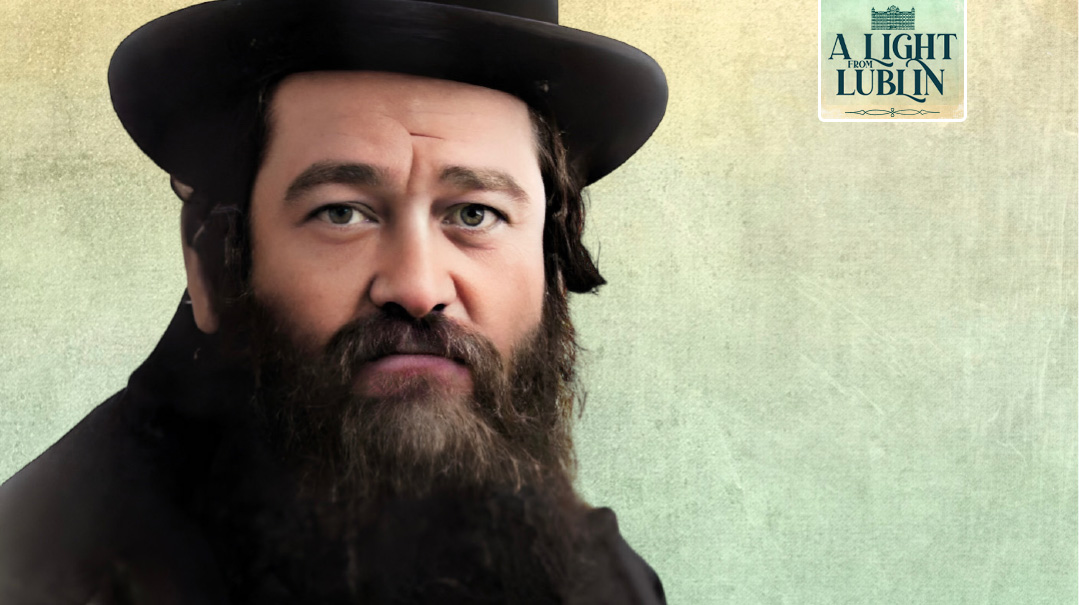
Even as the yeshivah struggled financially, Rav Meir made plans to grow. One of his pet projects was building a mechinah (preparatory school) network across Poland. Via these yeshivahs for 13-17 year-olds (which were staffed by alumni), Rav Meir hoped to prime the greatest young minds across Poland for entry into Yeshivas Chachmei Lublin
Chapter VII To the Last Breath
Until the Bitter End
The weight of sustaining Yeshivas Chachmei Lublin grew heavier with each passing year. Rav Meir tirelessly roamed across Poland to garner the funds needed to keep the yeshivah’s doors open. The local community, which had promised kehillah funds, was unable to keep its promise as the Polish currency deteriorated further.
At the same time, Rav Meir became more vocal about another dream he’d long harbored: opening a branch of Yeshivas Chachmei Lublin in Eretz Yisrael. He even made plans to visit there for Pesach of 1934, with some speculating that he would be scouting out locations to move the yeshivah there in its entirety, either to Jerusalem or to Tzfas, where his ancestor, Rav Yaakov Shimshon of Shepetovka (1720-1801) had resided for a short time following his ascent to the Land of Israel in 1794.
Years earlier, he had discussed the idea of establishing a yeshivah there with the Tchortkover Rebbe. The Tchortkover, like many other Ruzhiner descendants, had a special affinity for the land and also wished to move there. Following World War I, which had seen him flee to Vienna, his chassidim begged him to return back to Tchortkov, but he refused, citing the fact that Vienna was just a stop en route to the Holy Land and he could not turn back. However, when Rav Meir asked him about establishing his yeshivah there initially, he told him that in galus, the “daled amos shel Torah” contain the holiness of Eretz Yisrael. Thus, Rav Meir focused on building the yeshivah in Poland. Hillel Seidman writes of another explanation that Rav Meir had conveyed to a close confidant:
“There is no completeness and no certainty in what we build in the Diaspora. I didn’t start building in the land of Israel because I didn’t properly assess the mood of the Jewish nation. People are more likely to contribute to a yeshivah in Eretz Yisrael. Now I have gained experience and I hope to establish a yeshivah in Jerusalem whose buildings will outshine the buildings of ‘the university’ (Rav Meir was clearly bothered by the fact that the campus of Hebrew University in Jerusalem was grander than any of the yeshivahs in the land of Israel).”
But it took a mighty and continuous effort to keep procuring the necessary funding. To the world outside, Yeshivas Chachmei Lublin appeared to be thriving. Rav Meir was intent on hiding the yeshivah’s financial struggles, fearing that even a whisper of his distress might disrupt the serene atmosphere that was so conducive to the students’ learning. However, when the local council cut off the yeshivah’s water supply, the secret was no longer.
Rav Meir lamented in a poignant letter from that period, “I am at a loss for words. We are ensnared in a quagmire of challenges; the predicament is dire. Our yeshivah is on the brink, teetering between continuation and closure, with no respite. Our heart yearns to welcome more students, but reality ties our hands. Our foremost hope is to provide for those seeking Torah within our walls.”
At that time, Prudential, the American insurance conglomerate, expanded its operations into Poland. Eager to ingratiate themselves with the local populace, they reached out to prominent figures, offering them life insurance policies. In a shrewd move to win Rav Meir’s patronage, they presented an enticing proposition: in return for him securing a life insurance policy with them, they would extend a loan to clear all the yeshivah’s debts. Seeing the lifeline it offered to the institution he cherished, Rav Meir assented.
There were moments, steeped in desolation, when Rav Meir mused, “It seems the yeshivah’s salvation hinges on my very demise.” This somber sentiment would, tragically, echo with prophetic resonance. When pressed on how he intended to settle the substantial loan, Rav Meir’s response was chilling. Drawing from the mystical depths of the Zohar HaKadosh, he intoned, “Some discharge their debts with coins, while others do so with their very essence.”
Yet even the Prudential loan was insufficient to keep the yeshivah going long-term. When the yeshivah closed for the annual Pesach holidays on Rosh Chodesh Nissan of 1933, it was unable to reopen for another three months due to a lack of funds. Rav Meir and his wife Malka had donated every dollar they had (including a $30,000 inheritance) to build the yeshivah so they had little left even for their own basic needs.
When the Chofetz Chaim was niftar in Elul of 1933, Rav Meir did not attend the levayah because he lacked the funds to travel to Radin. Instead, he gathered the entire yeshivah and delivered a masterful hesped. Rav Meir drew analogies between the Chofetz Chaim and the role of the Kohein Gadol as described in Chazal (as well as drawing a comparison to the personality of the Chasam Sofer). He also recounted for the audience a moving conversation he witnessed between the Chofetz Chaim and Polish Prime Minister Kazimierz Władysław Bartel (1882–1941). Rav Meir concluded the event by insisting that the entire assembly join him for ten minutes of aveilus by sitting on the ground.
The new year did not bring better news, and the hard times continued for the yeshivah. A student related that when the rebbetzin discovered that there were no funds for a succah large enough to host several hundred talmidim, she sold her diamond ring. Their destitution reached the point that the rebbetzin would have to receive her meals from the yeshivah kitchen.
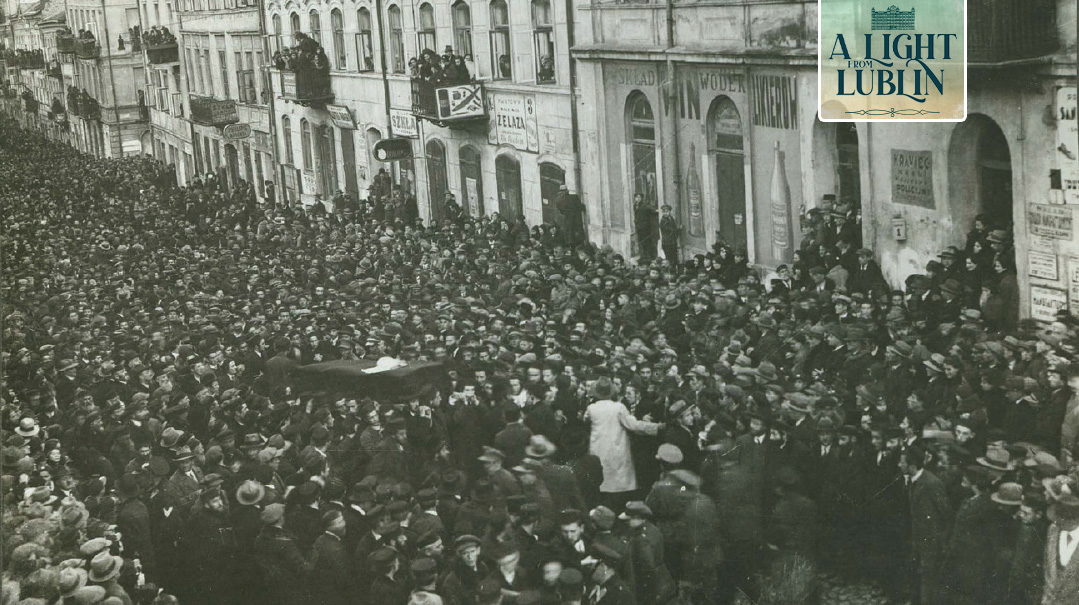
Photos from Rav Meir’s levayah
Taking Leave
Salvation, though, came from an unanticipated source. The burgeoning industrial city of Lodz approached Rav Meir and offered him a post as rav. In exchange, it offered to fund the yeshivah to the point where Rav Meir could cease fundraising activities. As rav of Lodz, he would still spend one week a month in Lublin, returning to Lodz for the other three.
Ultimately, Rav Meir accepted the position because it would allow him to save the yeshivah from financial ruin. His conditions were that the Lodz kehillah underwrite the yeshivah’s deficit, and he be allowed to split his time equally between Lodz and Lublin. The Lodz community agreed to donate 50,000 zloty to be paid in monthly installments of 5,000 to 8,000 zloty and that he could spend two weeks of every month in Lublin, with the remaining time being spent in Lodz.
On Monday, 3 Cheshvan of 1933, a messenger arrived from Lodz to deliver the official Ksav Harabbanus to Rav Meir. But Rav Meir was ill, likely with diphtheria; he received the document while propped up in bed. That exchange ultimately became a portent of tragedy.
On Tuesday morning he was transferred to the hospital down the street from the yeshivah. As the week went on, Rav Meir’s illness grew worse. On Thursday, he asked the students attending to him for a change of clothing and a fresh tallis katan. His wife, who wore the burden of his years of suffering on her face, noticed a change in his countenance, and began weeping emotionally. Rav Meir did his best to calm her, as he wrote the message, “Now the true simchah begins.” What followed was an otherworldly scene of leave-taking against a backdrop of elevated song.
Rabbi Yehoshua Baumol described the tragic scene:
In a broken, barely legible scrawl he wrote, “Trinkt alleh l’chayim — All of you, drink l’chayim!” Some liquor was poured out into tiny glasses, and all who were there drank and wished him l’chayim, “to life!” Then he shook hands with them all, one by one, holding each one’s hand in his for a long time.
And now he gave his [next] instruction: “Macht rikkud’l — dance — to the words, becha batchu avoseinu —In You our fathers trusted; they trusted, and You rescued them” (Tehillim 22:5).
His wishes were obeyed: they joined hands and lifted their feet in rhythm as they sang the holy words to the melody they knew so well — the melody (was one of the many) that he himself had composed.
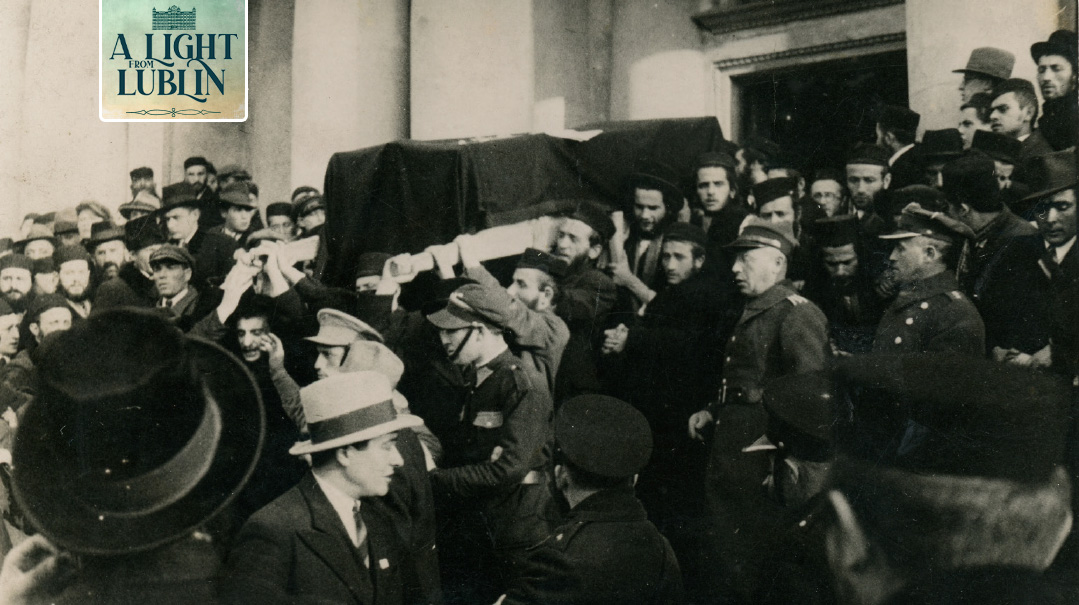
How many times had they sung it in the past, when the lovely, inspired niggun could bring its cheer to their hearts. Now they glanced at him as they danced by, joined in their circle, and they saw how dim his eyes were, the light gone out of them; how sallow his complexion; how the tears kept falling and falling without stop….
And yet they had to dance. The Rav had ordered them…. Where are the words to describe the infinite tragedy in that scene?… the rhythmic motions of life and… death… the last chassidic dance that he would see on this earth?
It was clear that the end was approaching. Into the great shul, the Hall of Prayer, the young scholars came streaming now to say Tehillim, to invoke Heaven’s mercy for him. In the corridors the voice of a talmid could be heard rousing everyone with two simple words that he chanted over and over to a soft haunting melody: “Rachamim gedolim: much compassion, much compassion!”
The talmidim were woken from sleep… The sounds in the air hurtled them from their beds and sent them rushing through the corridors, unable yet to realize just how terribly fateful the present moments were.
And in the great shul there was only stormy agitation: a heartrending tempest of attempts to tear through the Heavens and bring down pure Divine mercy. Here and there young people were beating their heads against the wall. There were outcries of “oy na lanu ki chatanu — woe to us that we have sinned! (Eichah 5:16). It’s all, all on account of our sins!”
One individual after another began crying out a donation of years, to be deducted from his allotted lifespan and given to the Rav, so that he could go on living. “I give five years,” one voice called out; “I give ten,” exclaimed another, and so on. And a short while later, one mighty declaration sounded and echoed from the beis medrash: “We give away all our remaining years to the Rav!”
A sense of terrible destruction and devastation saturated the air. And the frightful wailing and lamentation reached his ears…. Clearly and distinctly, he pronounced two words: “Nohr b’simchah — only with joy.” Then he snapped his fingers — and expired.
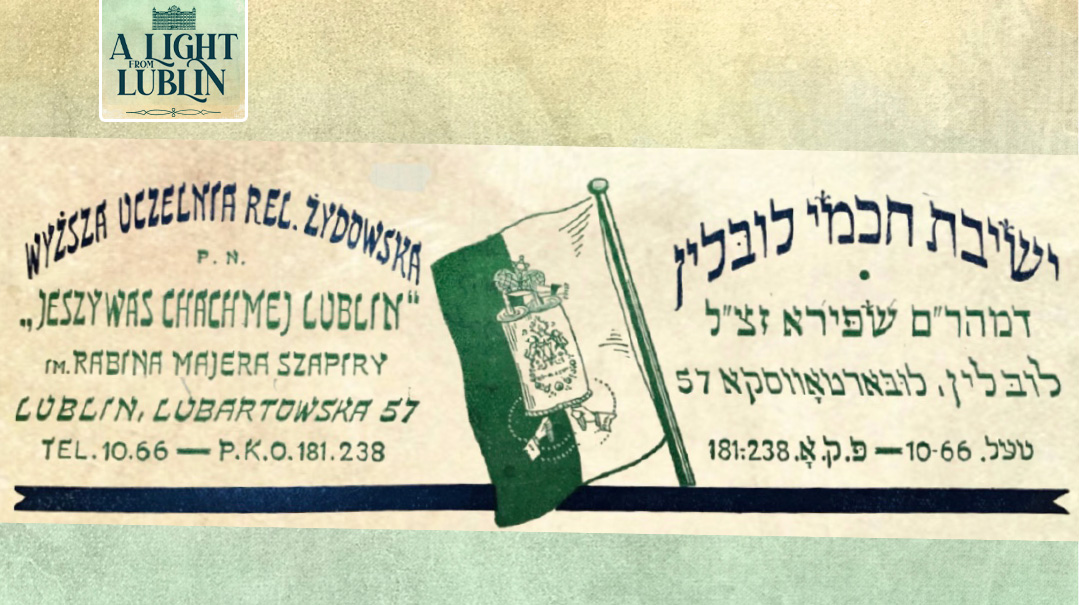
Chapter VIII: The Yeshivah Carries On
An Orphaned Era
ASthe product of the vision and initiative of Rav Meir Shapiro, the great edifice and institution of Yeshivas Chachmei Lublin is intertwined with the biography of its illustrious founder. But although his shadow loomed over the entirety of the yeshivah’s short history, he presided over it for less than three years. The yeshivah lasted only nine years, but two-thirds of that time was after the untimely passing of its founder. What was Yeshivas Chachmei Lublin like in the years following his passing? Which Torah personalities stood at its helm? How did it maintain the legacy of Rav Meir Shapiro and continue to grow in his absence?
Rav Meir Shapiro passed away early Friday morning, 7 Cheshvan, 1933, the 93rd daf in Daf HaYomi’s second cycle learning Masechta Kesubos. It was decided to postpone the levayah until Sunday to allow the throngs who wished to participate to arrive in time. During that interval, an emergency meeting was held in Lublin to ensure the yeshivah’s financial future.
Participants in this emergency ad hoc assembly included rabbinic personalities, communal activists from across Poland, students and alumni of the yeshivah. The president of the Warsaw Jewish community and Agudah leader Eliyahu Mazur led the assembly. He later served as president of the Yeshivas Chachmei Lublin administrative council.
He called upon the assembled to support the yeshivah during this challenging time. “We must safeguard this yeshivah, to make sure it does not crumble, Heaven forbid; to make sure this hallowed building never falls into non-Jewish hands. Dear brethren, by freeing the yeshivah from its burden of debts and ongoing expenses, let us try to atone and find forgiveness for the enormous crime we committed against the Rav and his sacred yeshivah [by not supporting it sufficiently until now].”
At the levayah itself, following the stirring hesped of Rav Menachem Ziemba (1883–1943), a representative of the student body chosen as their spokesman took an oath in front of the coffin. “Brothers, companions, let us cling together closer, and standing now before the sacred bier of our holy Rebbe, let us take a fervent oath that we will never abandon and reject the walls of this yeshivah. And you, holy Rebbe: do not forget us and lose sight of your loyal, devoted pupils. Remain our eternal head of the yeshivah, ever our guiding leader. Infuse into us the influence of your holy spirit.”
In the months that followed, an emergency campaign was undertaken by alumni and students of the yeshivah. They traversed Poland in what they referred to as the “kofer nefesh” campaign, encouraging the rank and file of an impoverished Polish Jewry to participate in preserving the legacy of the beloved Rav Meir Shapiro by saving his yeshivah from financial ruin. This campaign, coupled with the life insurance payout, staved off enough of the debt so that a more sustainable long-term solution for the yeshivah to maintain solvency could now be developed.
Rav Meir Shapiro had once expressed his wish that the alumni maintain their relationship with the yeshivah. Shortly after his passing an alumni association was established. Rav Meir Shapiro had referred to the yeshivah by its acronym Yachal, and the alumni association named itself Achai — Agudas Chanichei Yachal.
The first, essential purpose of this new body was to form a strong organized force out of his students to live by his teachings and his guidance. By linking firmly together, they could seek and find ways to realize, through the yeshivah, his timeless ideals. Through Achai, the alumni could also stand ready to assist the yeshivah as needed and gather material support. The number of students grew to about 300.
Now the administration looked forward to an improved situation. The yeshivah’s burden of debt was eased considerably. Payments at the national bank were made on a regular basis.
At the start of the summer of 1936, the yeshivah was even able to begin construction work on the interior of the building’s sixth floor, which had been left untouched all the years for lack of funds. On completion, it would enable the yeshivah to accommodate still more students. And in fact, the yeshivah was flooded with hundreds of applications.
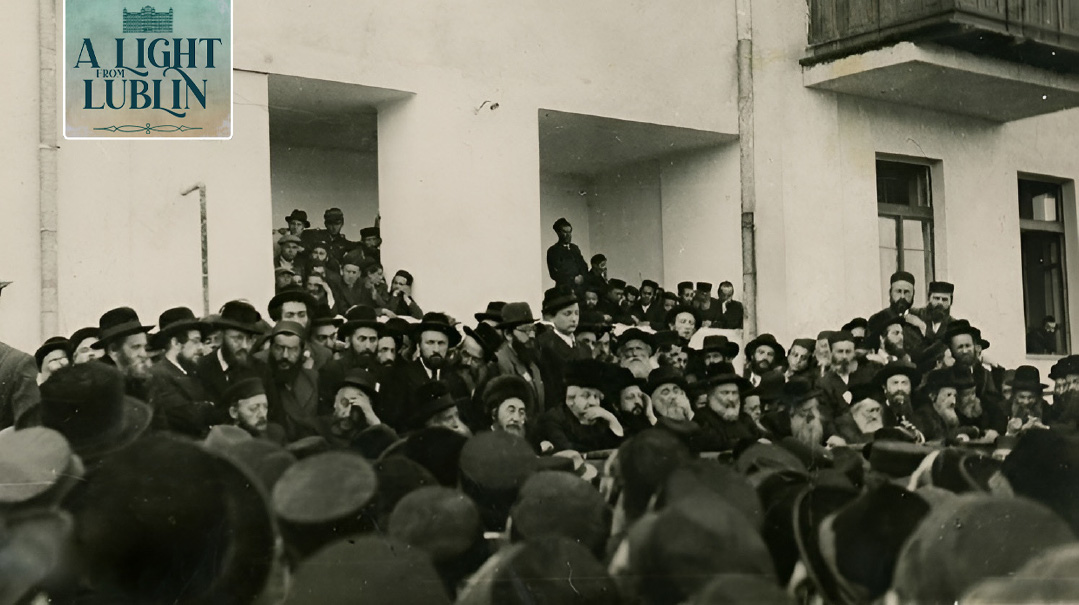
The second Siyum Hashas at Yeshivas Chachmei Lublin in 1938 (L-R): Rav Menachem Ziemba (standing); the Rebbe Rav Dovid of Sochotchov; Rebbe Moshenyu of Boyan; the Rebbe Rav Avraham Yaakov of Boyan-Ivov; the Sadigura Rebbe; Rav Meir Mauser; the Modzitzer Rebbe. The Tchebiner Rav is seated behind (partially blocked)
Hiding in Plain Sight
IT had hundreds of students, it has a magnificent building, it had devoted supporters — but Yeshivas Chachmei Lublin had no rosh yeshivah.
The Achai alumni association appointed a “shilton haruchani,” a spiritual governing board to oversee the educational and rabbinical elements of the yeshivah’s continued functioning and excellence. Among them were some of the greatest rabbinical leaders from across Poland, including Rav Shlomo Eiger, Rav Menachem Ziemba, the Tchebiner Rav, and Rav Avraham Weinberg of Warsaw. It was headed by the Boyaner Rebbe of Krakow, Rav Moshenyu Friedman, who took personal responsibility for the yeshivah’s spiritual leadership.
The shilton haruchani undertook the task of seeking out a successor as rosh yeshivah. For a full year following the Lubliner Rav’s passing, candidates were considered for the position of rosh yeshivah. The Lubliner Tagblatt provided coverage of the situation.
Rav Shlomo Eiger, who had been close to Rav Meir and vigorously supported the yeshivah, was first to be considered. Rav Shlomo was a bibliophile and possessed one of the most extensive seforim collections in all of Poland. As the most prominent local rebbe in Lublin, students from Yeshivas Chachmei Lublin would frequent his menorah lighting on Chanukah, where he would share Torah remarks. But he turned down the day-to-day responsibility of running the yeshivah and received more of an honorific role as president.
Offers were made to Rav Yosef Rozin, the Rogatchover Gaon (whom Rav Meir had pursued since the inception of the yeshivah), the Tchebiner Rav (1881–1965), and Rav Menachem Ziemba. Rav Dovid Moshe Rabinowitz, son-in-law of the Radomsker Rebbe and the rosh yeshivah of the Kesser Torah network, was another candidate.
Candidates were brought in from as far away (both literally and ideologically) as Lithuania, including Rav Dovid Povarsky (1902–1999) and Rav Yosef Begun (1901–1942), who delivered shiurim for a week at Yeshivas Chachmei Lublin before returning home.
From Vilna, Rav Chaim Ozer Grodzensky (1863-1940) recommended a budding maggid shiur in Kletzk named Rav Elazar Menachem Shach (1899–2001) for the position. Upon receiving the offer, Rav Shach journeyed to Lublin, where he delivered a shiur on the subject of mechubar b’get, concerning the laws of divorce. Soon afterward he traveled to Vilna to consult with Rav Chaim Ozer on the visit and hear his thoughts about him taking on the new position. After questioning him for some time, Rav Chaim Ozer advised him to turn down the offer.
Rav Chaim Ozer’s answer pained Rav Shach, who could hardly feed his family. Yeshivas Chachmei Lublin, unlike the yeshivos of Lithuania, was known as a wealthy yeshivah, and Rav Shach felt he was turning down potential “riches.” Rav Chaim Ozer instructed him not to worry, telling him “sof hakavod lavo, it will turn out for the best.” Of course, his prophecy would prove correct.
The writer Dovid (Weisbrod) Halachmi (1912–2007), a prominent student since the yeshivah’s inception, writes about the visit of Rav Yosef Zusmanowitz (1895–1941), a son-in-law of Rav Moshe Mordechai Epstein (known as “the Yerushalmi” for having grown up in Yerushalayim), who came to Yeshivas Chachmei Lublin for a trial period and gave enthusiastic lectures. Naturally, his innovations were in the Lithuanian style — logical inquiries and clarifications on the subject matter — and this made a strong impression on the students.
Unlike the other Lithuanian candidates, he arrived dressed in chassidic attire, intending to blend in among the students. Halachmi points out that “indicative of his vast Torah knowledge is the fact that during the few weeks he taught there, he managed to study and know all parts of Avnei Nezer, the sefer of the Admor of Sochatchov, with which he’d been previously unfamiliar. However, he did not adapt to the chassidic atmosphere and after a few weeks, he returned to his previous position.”
Several other candidates were given chances until finally, the committee concluded that the solution had been hiding in plain sight.
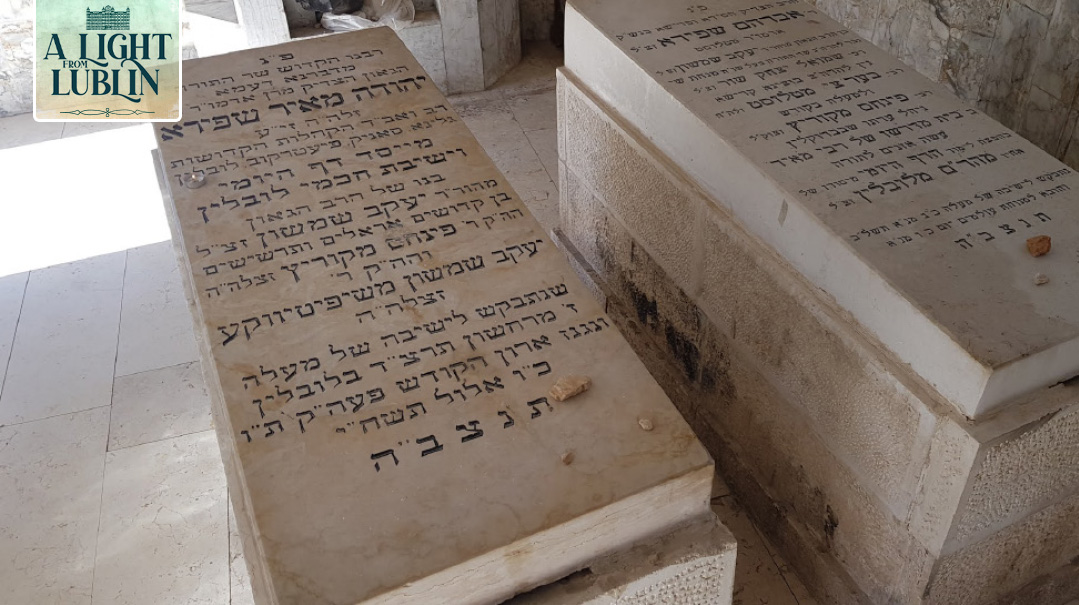
In 1958, thanks to the efforts of his brother Reb Avraham, Rav Meir’s remains were transferred to Har Hamenuchos, where an ohel was erected above his grave. When Reb Avraham was niftar in 1972, he was buried alongside him in the ohel
A Successor Is Found
Rav Meir Shapiro had a close relationship with Rav Aryeh Tzvi Fromer (1884–1943), known as the Kozhiglover Gaon and author of the sefer Eretz Tzvi (published in 1939), and had asked him to join the faculty of the yeshivah early on. The Kozhiglover would regularly make the trip to the yeshivah from Sosnowiec, where he was then serving as rav. Now he was formally appointed rosh yeshivah.
As one of the closest talmidim (and, ultimately, successor as rosh yeshivah) of the Avnei Nezer, Rav Aryeh Tzvi had subsequently served as a rabbi and rosh yeshivah in several towns for decades and now emerged as the beloved rosh yeshivah in Yeshivas Chachmei Lublin. As he stood at its helm for the majority of the yeshivah’s nine-year existence, most alumni of Yachal were actually students of the Kozhiglover, with whom they enjoyed a close relationship.
One of his more ambitious communal projects was the addition of the mishnah yomi to the daf yomi cycle instituted by Rav Meir Shapiro. The idea was to incorporate the Mishnayos that didn’t have corresponding masechtos of Gemara, as well as to make the daily learning regimen accessible to those who weren’t capable of studying Gemara. The new rosh yeshivah disseminated the idea via the religious Yiddish press, and he himself delivered a mishnah yomi shiur in Yeshivas Chachmei Lublin.
Later on, Rav Aryeh Leib Landau (1895-1943), who served as rav of Kolbiel, was named a rosh yeshivah alongside the Kozhiglover, with a focus on instructing the younger students.
The intermediate level was taught by one of the yeshivah’s top students, Rav Moshe Okonovsky, who began teaching a small group during the lifetime of Rav Meir Shapiro as a 20-year-old. Little is known about his past, but it seems that he was recruited by Rav Meir from Yeshivas Toras Chaim in Warsaw, a Lithuanian-style yeshivah founded by Rav Hirsch Glickson, the son-in-law of Rav Chaim Soloveitchik. Even though he was a rosh yeshivah by title, he insisted on conducting himself as a student, continuing to live in the dormitory until marriage and eating meals together with the students. He was loved by students and faculty alike.
After Rav Shimele left his position as mashgiach, Rav Dovid Minzberg (1903-1942) from Ostrov took on the role. Despite his new appointment, he remained an extremely humble individual and chose not to wear the conventional rabbinical coat. Additionally, he declined to be addressed by the formal title “Rav,” opting instead to be called Reb Dovid, in the manner one would address a fellow chassid.
As the yeshivah continued to grow and develop, the alumni association undertook the burden of the long-term fundraising for the operating costs of the yeshivah in order for it to function within a reasonable budget. Its members also planned and executed a significant milestone in the yeshivah’s history. On 27 Sivan 1938, the second siyum of the daf yomi cycle was celebrated across Poland. The primary venue for the festivities was the yeshivah building, absent its founder and the visionary who conceived of the daf yomi. His successor, the Kozhiglover, presided over the event, which included a hachnassas sefer Torah in memory of Rav Meir Shapiro.
The event also served as a second chanukas habayis, as the sixth floor was finally complete, and now the yeshivah edifice was finally fully built. It also coincided with the eighth anniversary of the yeshivah’s opening, and the throngs who gathered in Lublin celebrated the twin pillars of the Torah legacy of Rav Meir Shapiro.
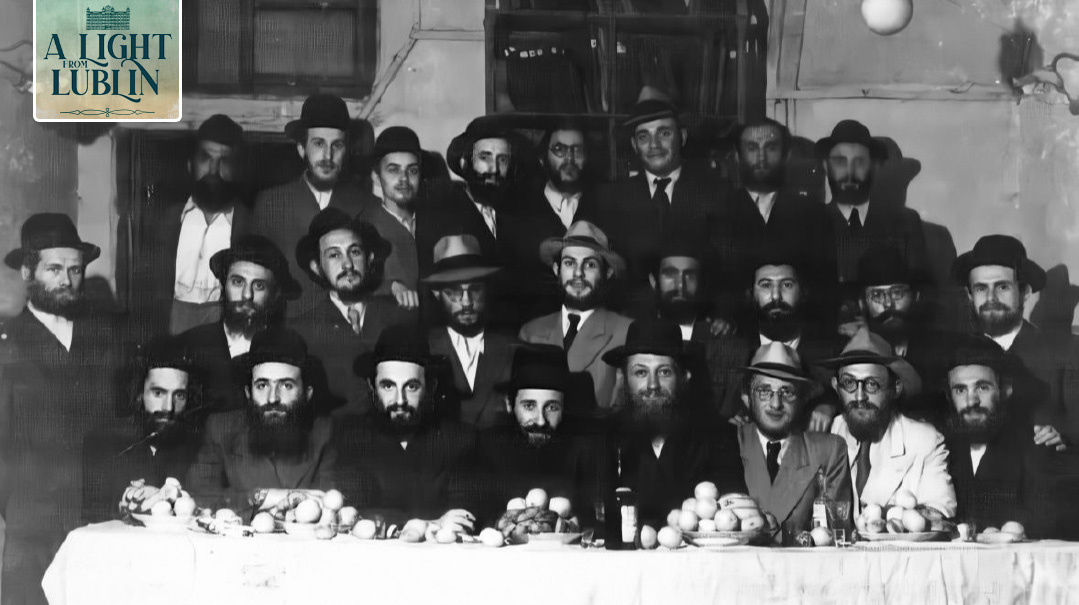
A group of talmidim (above) fled to Vilna and set up the yeshivah in the Koidanover Beis Medrash there. Under the stewardship of Rav Chaim Ozer’s Vaad Hayeshivos and the leadership of Rav Menachem Tzvi Eisenstadt (1901-1966) of Krakow, the makeshift yeshivah was run day-to-day by a group of elite students, which included: Rav Pinchas Hirschprung, Rav Avraham Mordechai Hershberg, Rav Avraham Dovid Gelbfish, Rav Mordechai Yehudah Lubart, and Rav Moshe Rotenberg
Even in the Ghetto
Shortly following the Nazi invasion of Poland in September 1939, the great Yeshivas Chachmei Lublin officially closed and the students scattered. The Kozhiglover escaped to Warsaw, where he was ultimately incarcerated in the Warsaw Ghetto with the rest of Warsaw Jewry. With the encouragement of his rebbe the Chasdei Dovid of Sochatchov (1876–1942) — who was also in the ghetto — he and his close friend Rav Avraham Weinberg set about a seemingly insurmountable task: establishing a yeshivah in the midst of the ghetto horrors.
Rav Yehoshua Moshe Aharanson and Shmuel Rotshtein both recalled in their memoirs that tens of bochurim studied in a room in 14 Mila Street. As Rotshtein writes poignantly, “Yeshivas Chachmei Lublin continues within the ghetto walls.”
The overwhelming majority of the talmidim, alumni, and faculty of Yeshivas Chachmei Lublin fell victim to the Nazis’ Final Solution. These included the Kozhiglover himself, who was caught by the Nazis during the Warsaw Ghetto uprising in April 1943, and transported to Majdanek, where he was promptly sent to the gas chambers on 27 Nissan.
There were some important exceptions, however. A contingent of students was able to make it to Vilna in the early months of the war. There, they reestablished the yeshivah under the leadership of senior talmidim and the guidance of Rav Chaim Ozer. They eventually obtained the famous Sugihara visas and spent the war years in Shanghai, China. Though much smaller than its more famous Mirrer Yeshivah counterpart, Yeshivas Chachmei Lublin (along with a branch of Tomchei Temimim of Lubavitch) flourished in Shanghai under the guidance of the Amshinover Rebbe, Rav Shimon Shalom Kalish.
In 1942, Rabbi Moshe Rotenberg (who would go on to become the rosh yeshivah of Ger in New York) founded Chachmei Lublin in Detroit. It was that yeshivah’s illustrious name that made it the ideal host for the bittersweet third Siyum HaShas, held in 1945. Another namesake yeshivah was established in Bnei Brak by Rav Shmuel Wosner (1913–2015). Rav Wosner served as rav in the Zichron Meir neighborhood, named for his rebbi, and the yeshivah remains there until this very day.
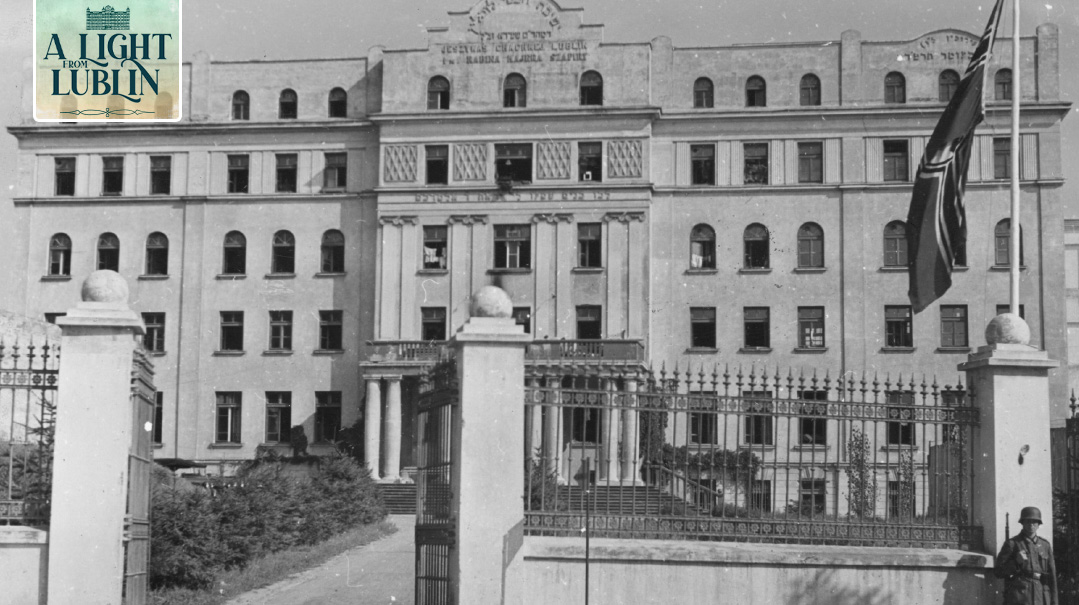
Yeshivas Chachmei Lublin under Nazi control in 1940. The vast majority of its students and alumni were murdered in Majdanek, Belzec, and other Nazi killing sites during the Holocaust. This article is dedicated to the memory of these holy kedoshim Hy”d, whose Torah legacy lives on for eternity
In 1958,
Rav Meir’s remains were reinterred on Har Hamenuchos in Yerushalayim. Tens of thousands attended this second levayah, where hespedim were delivered by leading rabbanim and roshei yeshivah, along with several prominent Yachal students who had survived the Holocaust.
A quarter-century after his passing, the twin legacies of Rav Meir — the visionary builder with no flesh-and-blood children — had endured beyond anyone’s expectations. His first child, the daf yomi program, was experiencing a vibrant resurgence in the postwar era and become a vital and respected cornerstone in so many Jews’ Torah learning. His second child, Yeshivas Chachmei Lublin, was no longer, but its underlying goals had persevered and helped shape the contours and priorities of the postwar yeshivah world.
Rav Mendel Geldwerth, a renowned Vienna-born talmid chacham, recounted a vintage derashah that Rav Meir once delivered. Rav Meir recalled how during the early stages of his revolutionary project, detractors arose with all sorts of questions with regards to the “necessity” of such a yeshivah, and he addressed them “kurtz un scharf” — short and pointedly:
“Oyf mir iz doh tzu fregen toizend kashes, when it comes to me, there are a thousand questions one can ask. Farvos macht mehn a yeshivah gedolah in a groiz shtuht, why are you departing from tradition and opening a yeshivah in a large, metropolitan center like Lublin, instead of small towns like in the past? Un vie azoi macht men shlufshtiber anshtat essen teg, and since when do we have dormitories, and so on.
“Oyf eich iz nur tzu fregen ein kasha, but when it comes to you there is just one question to ask: Farvos tuht ihr gornisht, why do you all do absolutely nothing?”
Back when he was just a youngster, Meir from Shatz had vowed to effect real change in the perception and status of yeshivah students. He aimed not just to erase the degradation and utter shame heaped on yeshivah students, but rather to elevate an entire generation’s respect for Torah and those who studied it. With his vision for Yeshivas Chachmei Lublin, he hoped to restore the lomdei Torah to their rightful position as our nation’s true aristocracy. We are all the beneficiaries of his tireless efforts.
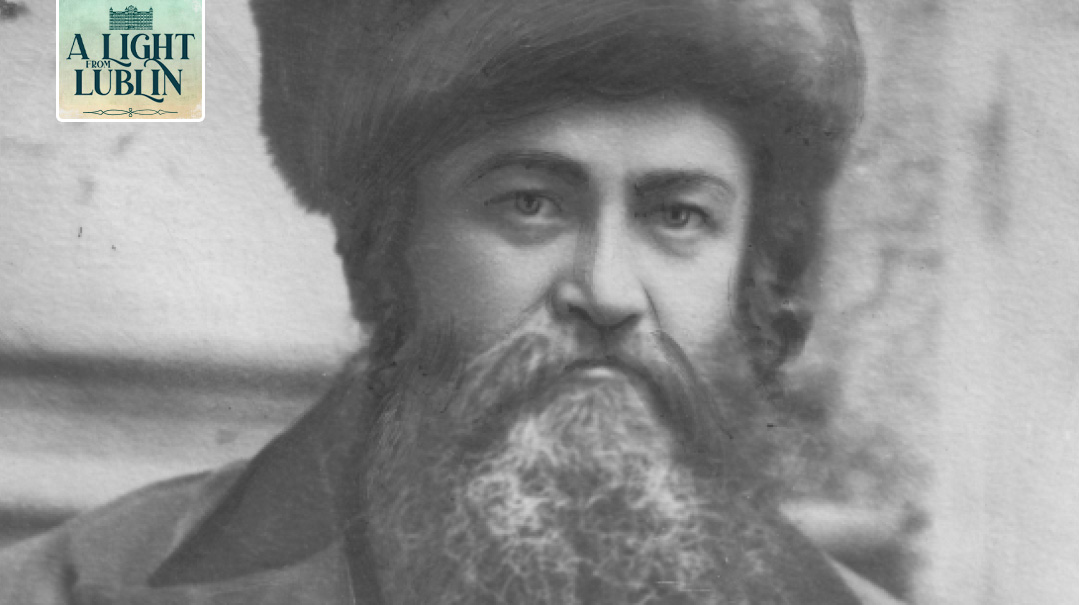
From Yavneh to Lublin
By Reb Sruly Bornstein and Dovi Safier
IN the introduction to his magnum opus Ohr Hameir, Rav Meir outlined his vision for building Yeshivas Chachmei Lublin. He begins by citing a Yerushalmi in Demai regarding the purification process of the Parah Adumah, in which Rav Yehoshua ben Kavsai cites the transformative understanding he learned from the “Otzar [vault] of Yavneh”: one pure individual has the limitless capability to sprinkle the purifying waters on an infinite number of impure individuals.
Rav Meir Shapiro understands this “Otzar of Yavneh” to refer to the famous yeshivah that was spared from the destruction of the Churban by the Roman general Vespasian, thanks to the personal appeal of Rabban Yochanan ben Zakkai. Because of the protection of “Yavneh v’chachamehah” that he extracted from the Romans, the yeshivah blossomed into the post-Churban era’s epicenter of Torah learning.
From the story of Yavneh, Rav Meir learned that the ratio of ohr to choshech does not have to be quid pro quo. The small bit of light that Rabban Yochanan ben Zakkai preserved ultimately overpowered immense darkness. This was Rav Meir’s hope for Yeshivas Chachmei Lublin — that it would serve as the Yavneh of his generation, which was marred by so much spiritual darkness.
Rav Meir laid out this vision in an editorial in the Yiddishe Togblatt, claiming that the names of their yeshivos shared a similarity, too: Yavneh V’Chachmehah and Yeshivas Chachmei Lublin. He even used Rabban Yochanan ben Zakkai’s legendary wording as he pleaded, “Tein li Yeshivas Chachmei Lublin, v’chachamehah.”
Rav Meir’s perception of his yeshivah as a lighthouse for an entire generation is likely why he felt so strongly that America’s Jews should share in the burden of sustaining this vision. In his heart, he believed that he was doing them a tremendous service by garnering their support.
A report in Der Amerikaner cites a derashah delivered by Rav Meir at Boston’s Beis Hamedrash Hagodol on Shabbos Mevarchim Adar Alef of 1927, before Mussaf. Playing on the timeless words just recited by the congregation, he noted that Poland offered “chayim shel ahavas Torah v’yiras Shamayim,” whereas America provided “chayim shel osher v’kavod.” Rav Meir hoped to address this imbalance by enabling America to utilize its financial resources to support its spiritual institutions.
IN some ways, Rav Meir Shapiro’s efforts are somewhat incongruous: in creating the Daf Yomi program, he was looking out for the layman. But he was simultaneously building an elite yeshivah, designed for the most brilliant and talented young men in Europe.
The common thread running through both of these very different endeavors stretches back to Rav Meir’s understanding of Rabban Yochanan Ben Zakkai’s mission. He did not intend for Yeshivas Chachmei Lublin to be a secluded haven whose influence would be limited to the best and brightest. Rav Meir envisioned the yeshivah as a blazing beacon of light amid the spiritual darkness encroaching on Poland, Eastern Europe, and even the greater Jewish world.
It is no coincidence that Daf Yomi and Chachmei Lublin were introduced simultaneously. Rav Meir understood that in order for the Daf Yomi movement to be successful, you almost needed a Yeshivas Chachmei Lublin. You needed that lighthouse of Torah and chassidus to shine forth from the heart of Poland so that the pashute Yid would have the capacity to sit down, open up a Gemara, and learn the daf at the end of a long, draining workday.
Rav Yehuda Meir Abramowicz (1914–2007), a student at Chachmei Lublin (who would go on to become the chairman of World Agudah and an influential representative of the party in the Knesset), recalled that one night Rav Meir gathered a group of his elite students and instructed them to head out into the local shuls and initiate Daf Yomi shiurim. Rav Yehuda Meir was assigned the ancient kloiz of the Chozeh of Lublin. “I admit that when I entered the shul for the first time, I was alarmed and frightened,” he said. “The study hall was empty and abandoned. Behind the stove crowded a few indigent peddlers, merchants, and tired wagon-drivers who came to the study hall to warm up a bit. And that was it.”
But as a faithful talmid, he obeyed his rebbi’s command. “Slowly, slowly, these simple and downcast Jews were drawn into the shiur…. Each night, fifty to sixty men would gather, and they were surprisingly diligent in their learning… the desolate and abandoned study hall was once more filled with the life of Torah. So it was in all the study halls in Lublin, and many other Jewish communities in Poland.”
In the essence of Rav Meir Shapiro’s lifework lies a profound understanding of the timeless interplay between ohr (light) and choshech (darkness). Drawing inspiration from Yavneh’s storied past, Rav Meir saw beyond the superficial dichotomies of his age, recognizing the indispensable role both Torah scholars and the layman played in the sustenance and proliferation of Torah.
Only a visionary of his caliber could even dream of bridging these gaps through the twin pillars of Yeshivas Chachmei Lublin and the Daf Yomi movement. Through Daf Yomi shiurim and his very own “Yavneh,” Rav Meir was responsible for not just restoring the Torah crown to its past glory in Lublin, but also for rekindling the spirit of Torah learning among the masses, cementing his legacy as a visionary leader who recognized and harnessed the boundless potential of every Jew, transcending both time and place in accomplishing the impossible.
The comprehensive works and vast knowledge of the following individuals were consulted in preparation for this article: Rabbi Dr. David Slavin, Chief Rabbi Yisrael Meir Lau, Yehuda Geberer, Dr. Isaac Lewin, Rabbi Shlomo Carlebach, Rabbi Pinchas Hirschprung, Eric Feinstein, Dr. Gershon Bacon, YIVO Encyclopedia, Rabbi Dovid Avraham Mandelbaum, Aharon Sorasky, Rabbi Dovid Kamenetsky, Hillel Seidman, Rabbi Yehoshua Baumol, Alphonse Honig, Rabbi Pesach Fishman, Vivian Felsen, Rabbi Eliezer Katzman, Dr. Simcha Bunim Feldman, Yehuda Zirkind, Dr. David Kranzler, Professor Wojciech Tworek, Rabbi David Halachmi, Rabbi Moshe Weinberger, Eli Marcus, Rabbi Aharon Lopiansky, Moshe Benoliel, Zevi Brodt, Moshe Prager, Asher Korech, Rabbi Avrohom Frischman, David Lenik, Menachem Daum, Rabbi Aaron Ben-Zion Shurin, Rabbi Zev T. Paretzky, Rabbi Lipa Geldwerth, Yisroel Besser, Professor Shaul Stampfer, Reb Yosef Friedenson, Reb Sruly Bornstein, Rabbi Avrum Moshe Friedmann, Rabbi Yisroel Friedman, Rabbi Yitzchok Kasnett, Rabbi Harry Rabinowicz, Rabbi Yitzchok Dovid Flakser, Professor Gershon Bacon, Rabbi Yehuda Meir Abramowicz, Piotr Nazaruk, Sefer Zichron Meir, JDC Archives, YIVO, Rabbi Avraham Chanoch Abramowicz, Lublin Jewish Community Archives.
(Originally featured in Mishpacha, Issue 980)
Oops! We could not locate your form.







